Inbox and environment news: Issue 620
March 31 - April 6, 2024: Issue 620
Dog Attacks On Wildlife On North Palm Beach
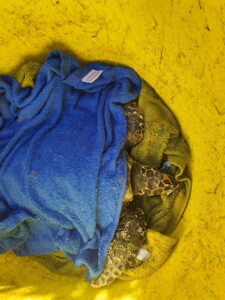 This photograph shows an injured turtle which was mauled by an off-leash dog in the sandhills on the ocean side north of North Palm Beach Surf Life Saving Club. It was rescued by a local WIRES helper earlier this month, March 2024.
This photograph shows an injured turtle which was mauled by an off-leash dog in the sandhills on the ocean side north of North Palm Beach Surf Life Saving Club. It was rescued by a local WIRES helper earlier this month, March 2024. That local record shows there were 9 people in what is defined as serious attacks(where the injury resulted in medical treatment, hospitalisation or death), 28 were attacks on people deemed less serious. The total animals attacked is listed as 45.
The to December 2023 quarter records a further 47 attacks under the Northern Beaches Council, listing 26 people as having been attacked, 8 of them serious, and a further 34 animals attacked.
Blacktown Council beat the NBC in that quarter, recording, officially, 85 attacks - 61 on people and 48 on animals with 17 people needing medical treatment as a result.
However, this brings the official reported attacks in the NBC LGA to 112 for the first half of the 2023-2024 reporting period.
The 'reported attacks' do not take into account the many attacks not being reported, even by those whose pet has been mauled and are then appealing on social media platforms for the owner of an attacking dog to come forward and pay their vet bill, stating 'I won't report it' as part of that.
The NSW Wildlife Rehabilitation dashboard (Wildlife rehabilitation data current to 30 June 2022) records 5,379 animals rescued in this LGA over the 2021/22 recorded period and 1,423 rehabilitated enough to survive and be released. Those numbers point out 3,956 did not make it.
Of of the 99 wallabies recorded just 7 were released.
Of these 44 came into care as the result of a dog attack, with 2 threatened species among the 19 species attacked - 19 birds, 13 mammals and 12 reptiles. Just 13 survived to be released.
Across the whole recorded data period (June 2013 - June 2022) there have been 1,588 dog attacks on 94 species in this LGA - 475 animals were released.
This list comprises 911 mammals, 447 birds and 230 reptiles - possums and bandicoots have been the most impacted. Water and shorebird species of geese, swans, ducks, terns and gulls are listed as victims of dog attacks in this area.
Those that were found already deceased due to a dog attack are not listed. There also growing evidence that many of these attacks on wildlife go unreported.
Since the Northern Beaches Council announced it is 'working with' a local dog lobby group and would investigate whether dogs could or should be on North Palm Beach and South Mona Vale Beach, citing a Review of the Environmental Factors report that recorded dogs were on these no-dogs beaches while the author investigated whether any wildlife was present, and which found there should not be any problems with dogs offleash in public and wildlife areas to further a trial of the same, an increase of dogs offleash on all Pittwater beaches has been experienced, despite none of these being allocated for the same and no official trial having started. Dogs are witnessed running all over, urinating and defecating on all beaches every single day.
Their owners have been labelled 'the special people' by other locals; 'those that think the state law and local council rules don't apply to them'.
Although this has an element of being a joke to try and cajole 'the special people' to understand the impact of deciding they and their dog can do what it likes where it likes and when it likes in public spaces, there is also a rising impatience with those who treat the area and other residents with contempt.
Those that object are threatened with physical abuse, even when a dog runs at or over their children. Incidents of people raising a dog throwing stick to strike an objector, yelling at or telling people objecting 'I'll find out where you live!', or stalking and vilifying others across online platforms, has become another daily experience of many residents.
Dogs can access offleash spaces in 29 areas across the LGA, including three water access parks in Pittwater - the now very fragrant Bayview Rowland Reserve, another at Newport in Dearin Reserve, and at North Narrabeen at Progress Park which allows dogs to access to Mullet Creek.
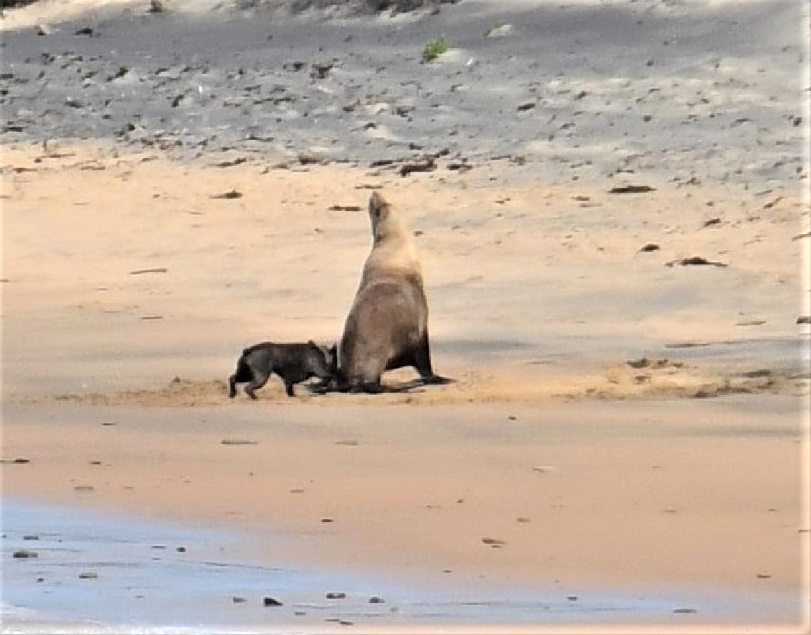
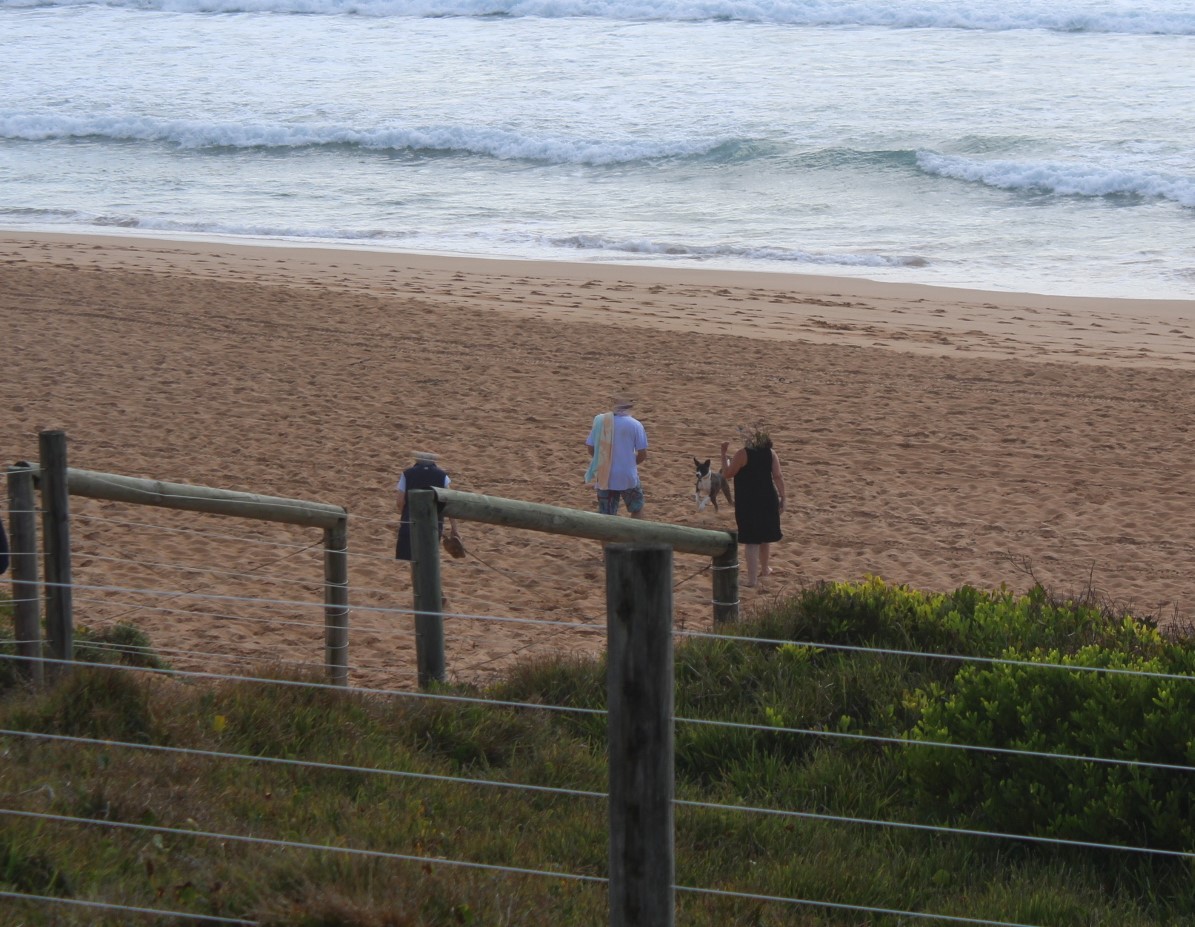
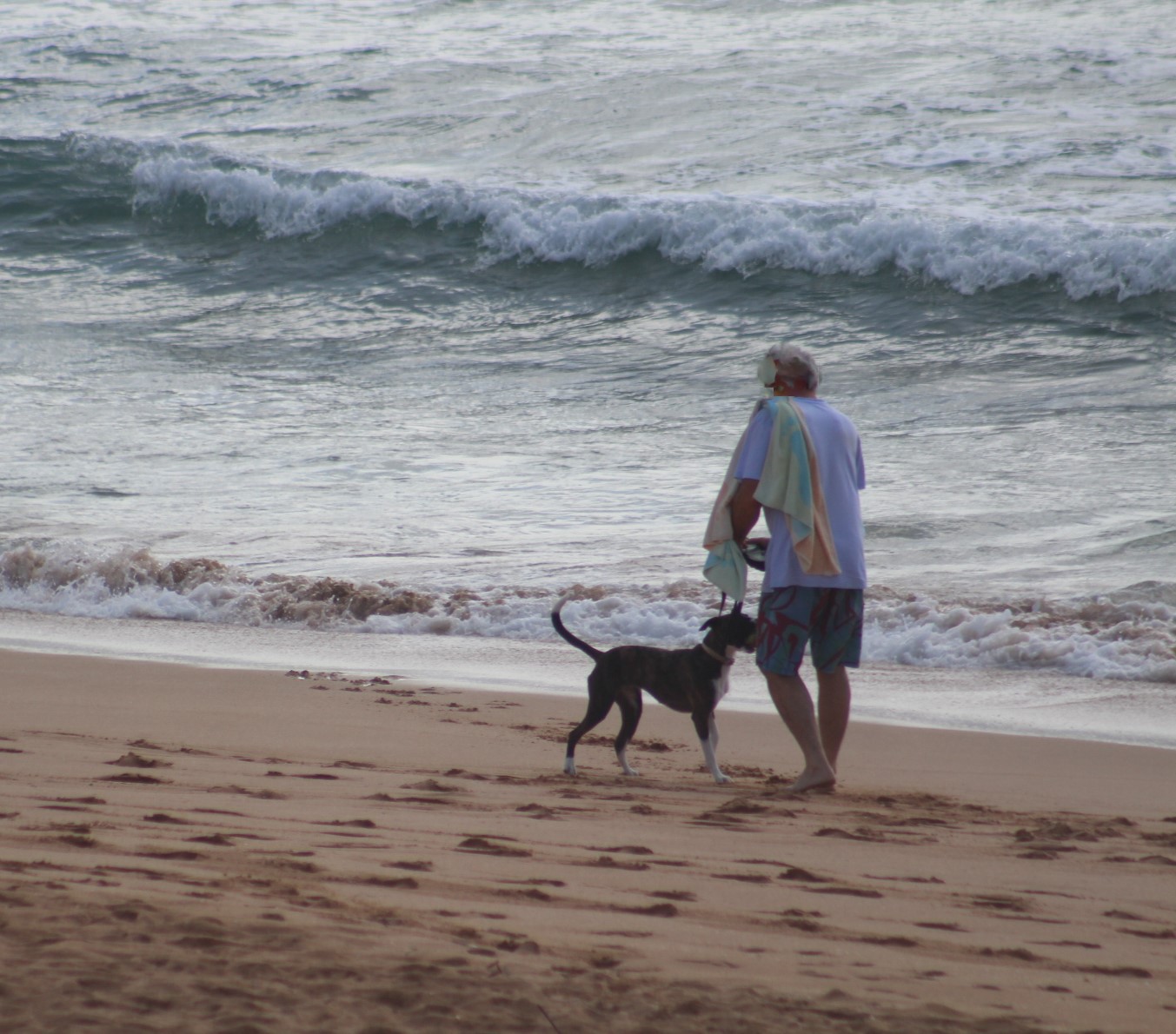
North Palm Beach; dogs are being taken into this area despite clear signage this is a no dogs area
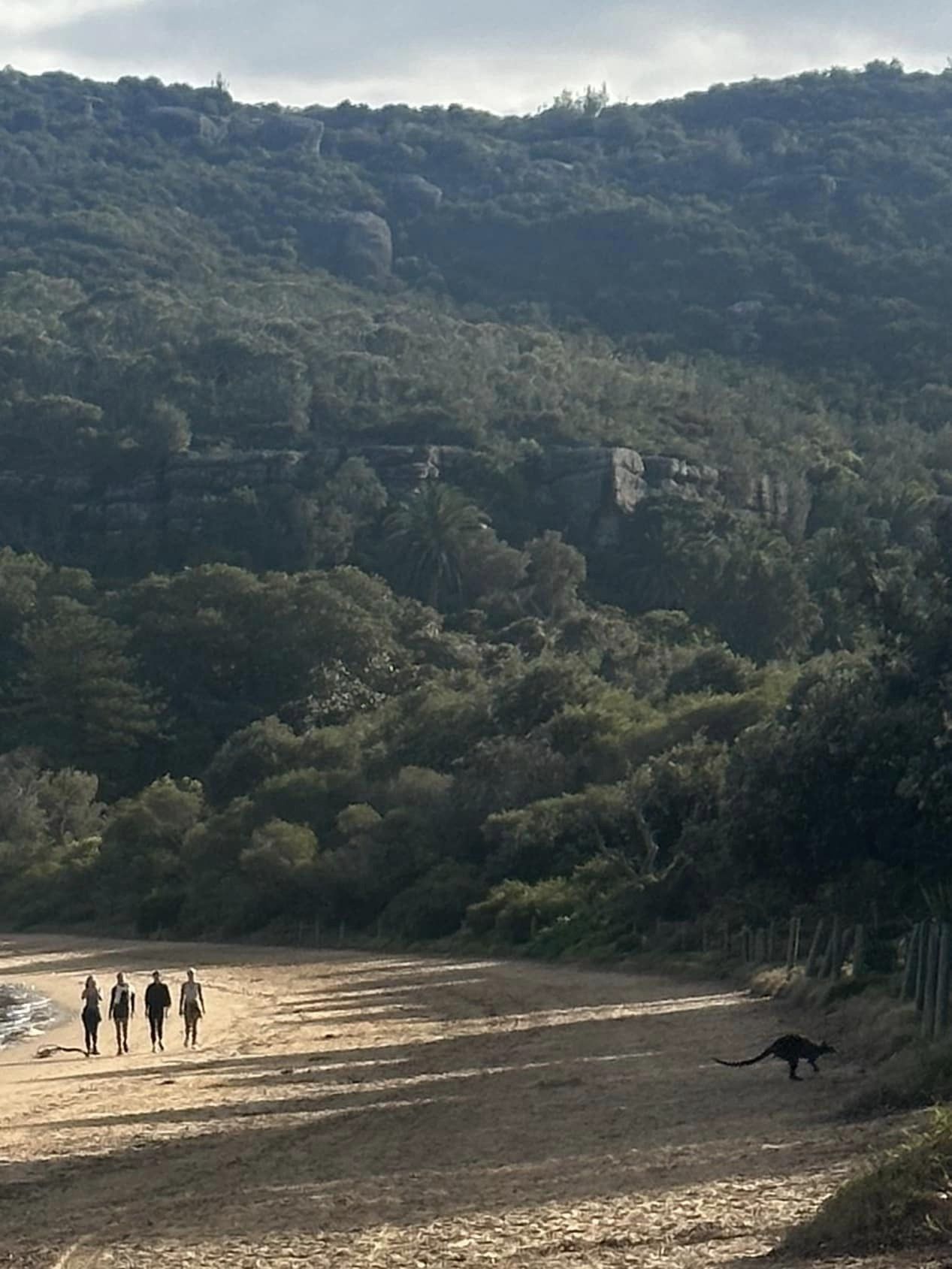
Wallaby going into sand dunes at Station Beach, Thursday August 24 2023, photo supplied.
Dog offleash on Station Beach in 2023, and signage these dog walkers ignored - they had been seen and photographed bringing this dog out of the Barrenjoey Headland National Park area - photos supplied.
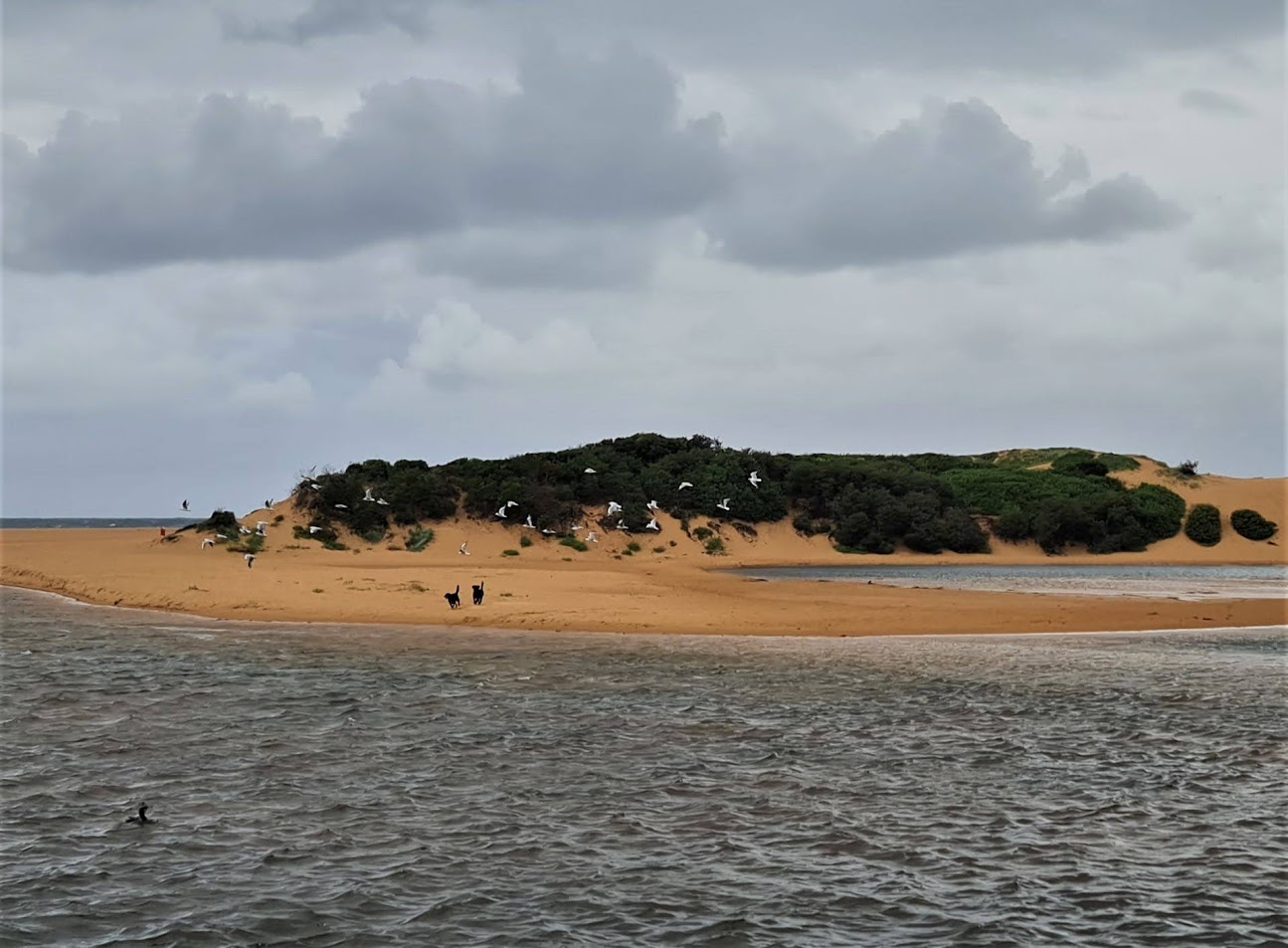
Dogs chasing seagulls off sandbar at North Narrabeen Lagoon January 2024 - no owner in sight. This is also a feeding ground for numerous shorebirds at this location. Photo supplied.
'Occy' Taken By Fisher: North Narrabeen Aquatic Reserve Favourite Now Gone

- conserve the biodiversity of fish and marine vegetation
- protect fish habitat
- facilitate educational activities
- facilitate scientific research
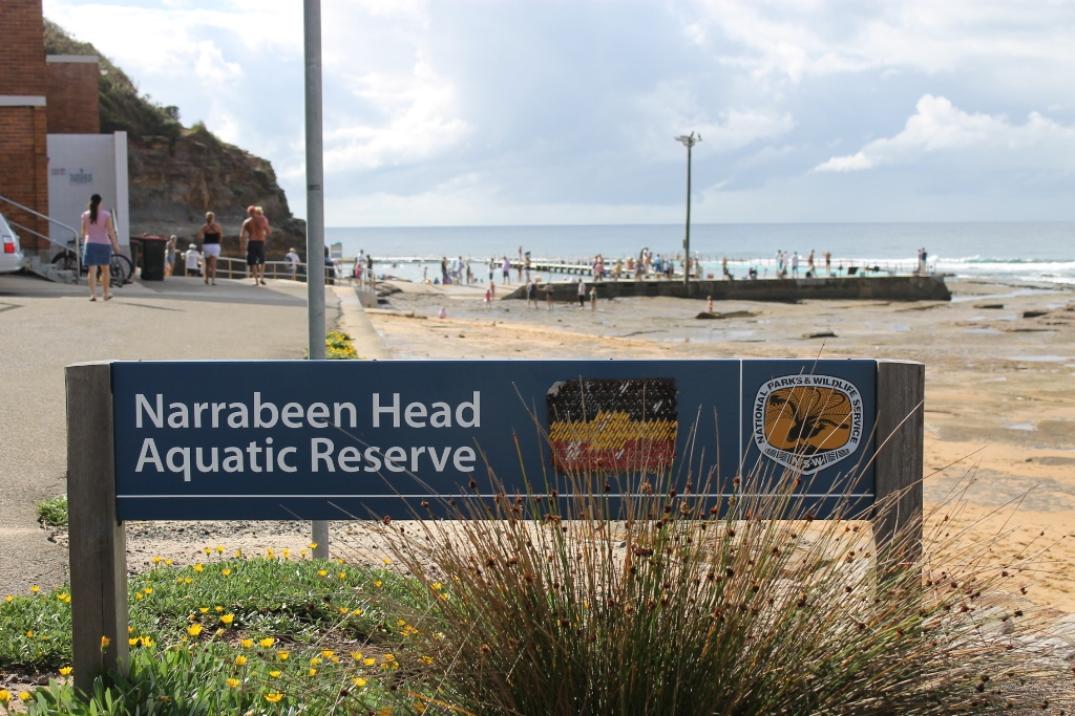
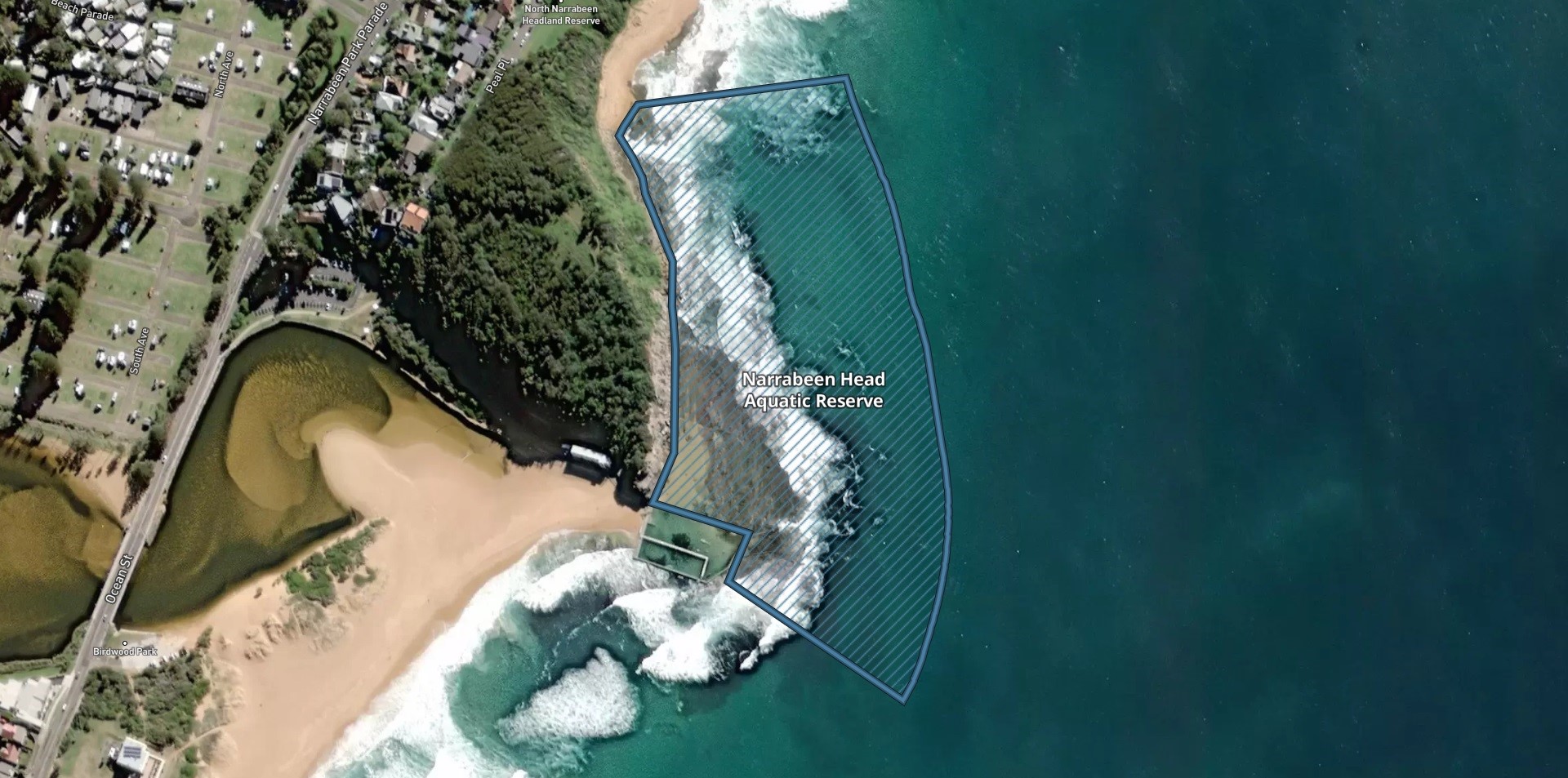
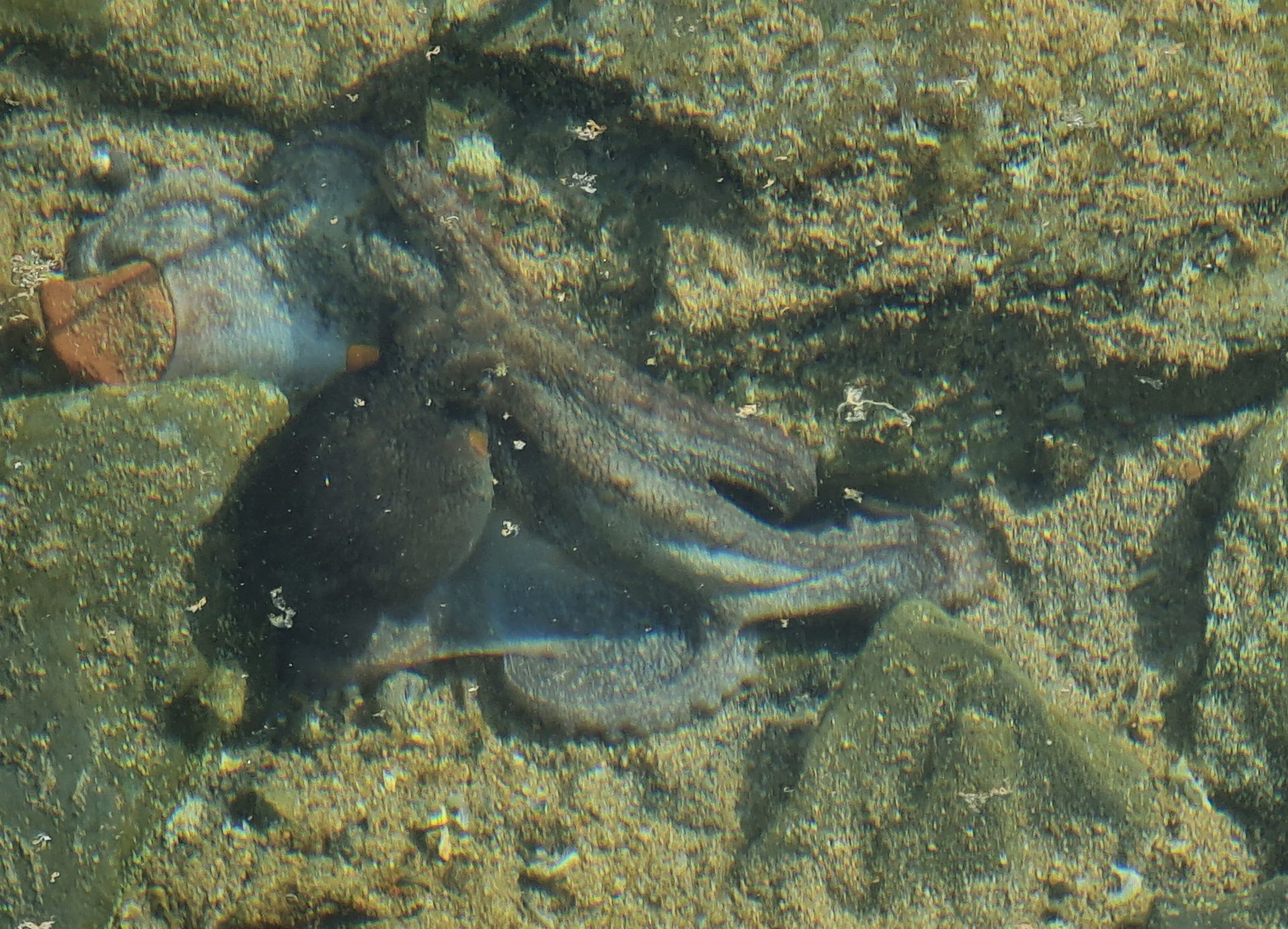
- Illegal or suspect fishing or collecting activities, or damage aquatic habitats, to the Fishers Watch Phoneline on 1800 043 536 or online
- Water pollution or fish kills to the Environment Line 131 555.
- Suspected aquatic pests or diseases to the Emergency Animal Disease (EAD) Hotline: 1800 675 888 or email aquatic.biosecurity@dpi.nsw.gov.au
- Injured or sick marine mammals, reptiles or seabirds to a licensed wildlife rehabilitation group or National Parks and Wildlife on 1300 072 757.
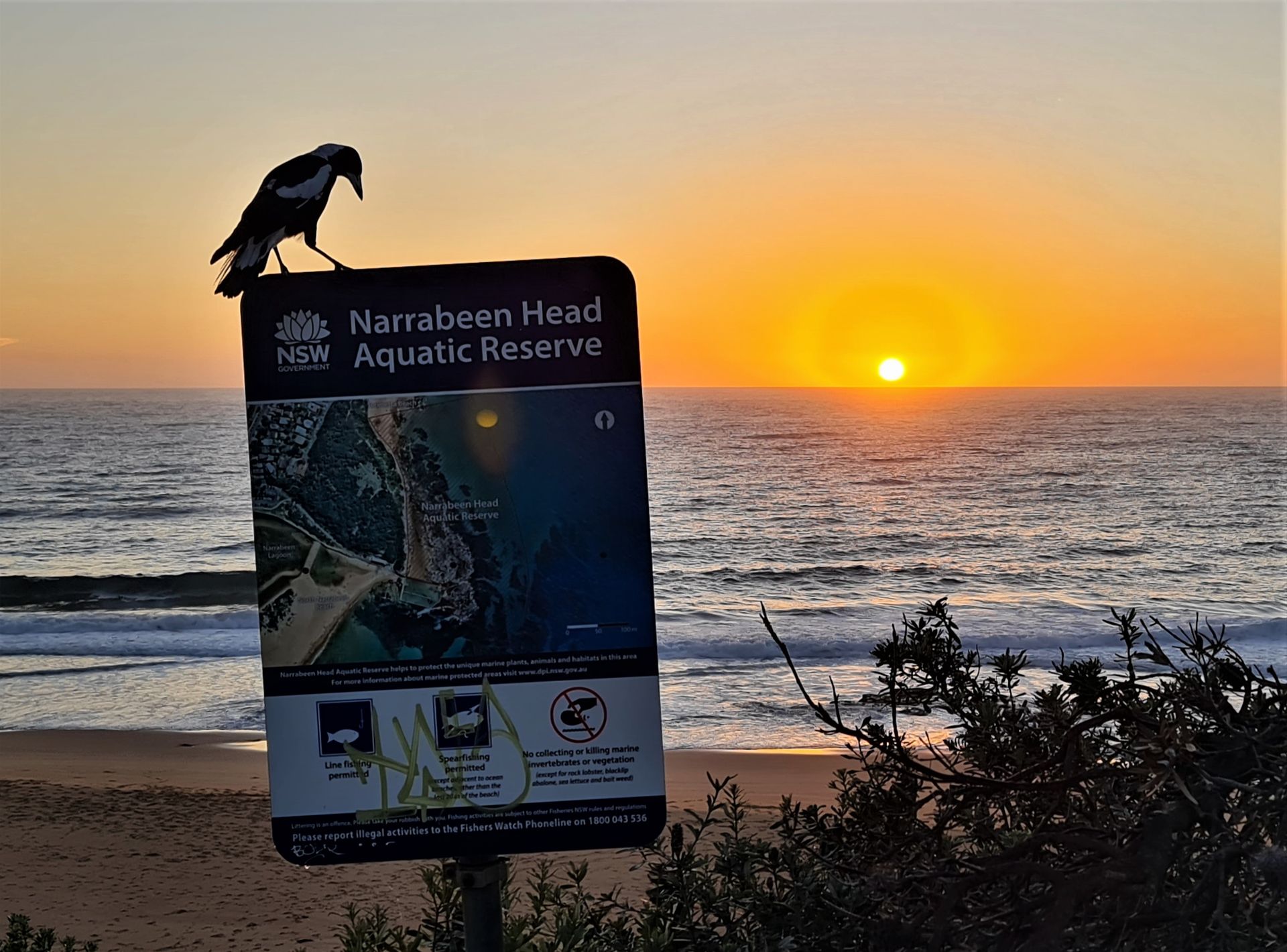
Council Announces Its Proposal To Install Synthetic Field At North Narrabeen Reserve - Draft Will Be Open For Feedback After Autumn School Holidays: State Government Seeking Feedback On Draft 'Guidelines' For Synthetic Turf In Public Spaces Seen As 'Cop Out'
Would love to have a grass running track for young kids and adults. Synthetic track at Narrabeen is in poor condition, being closed next year for repairs and is not good on young developing bodies. Amount of injuries in young kids is horrific.
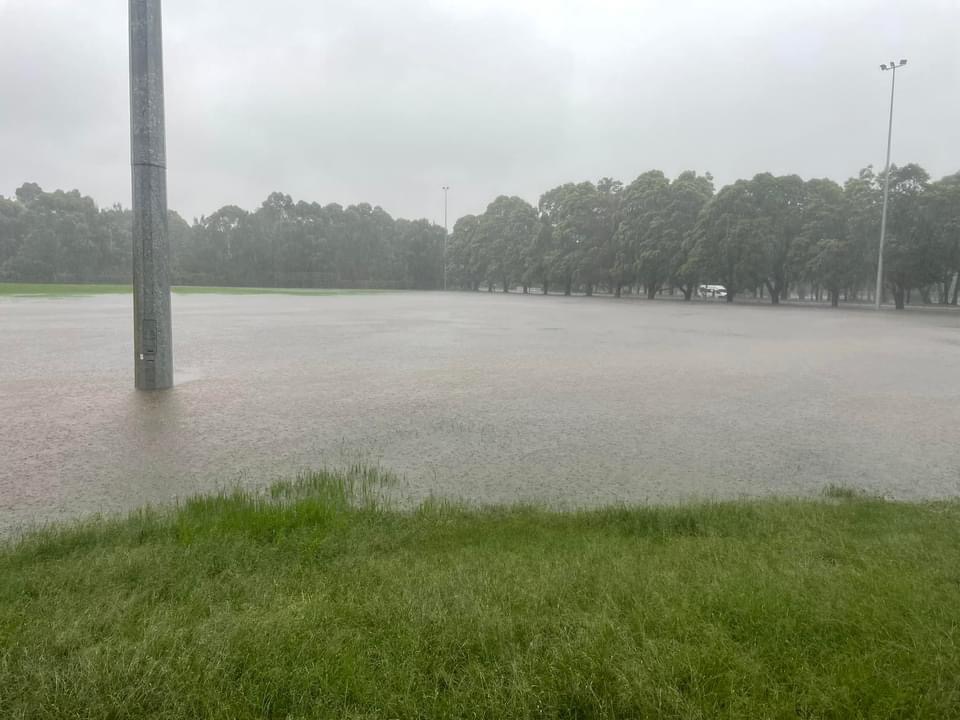
Millers Reserve submerged by water after the heavy rains, March 2022
November 2022 a year and a half on from installation - the 'softfall' rubber at Newport beach has deteriorated
Melwood Oval at Forestville has had a synthetic field installed and during heavy rains Julia W. witnessed "pulverised rubber" washing off and down pathways.
"It's not just the plastics that you can see, it's the plastics you can't see," Julia stated in 2021.
"The biggest concern is that we're putting these fields in water catchment zones."
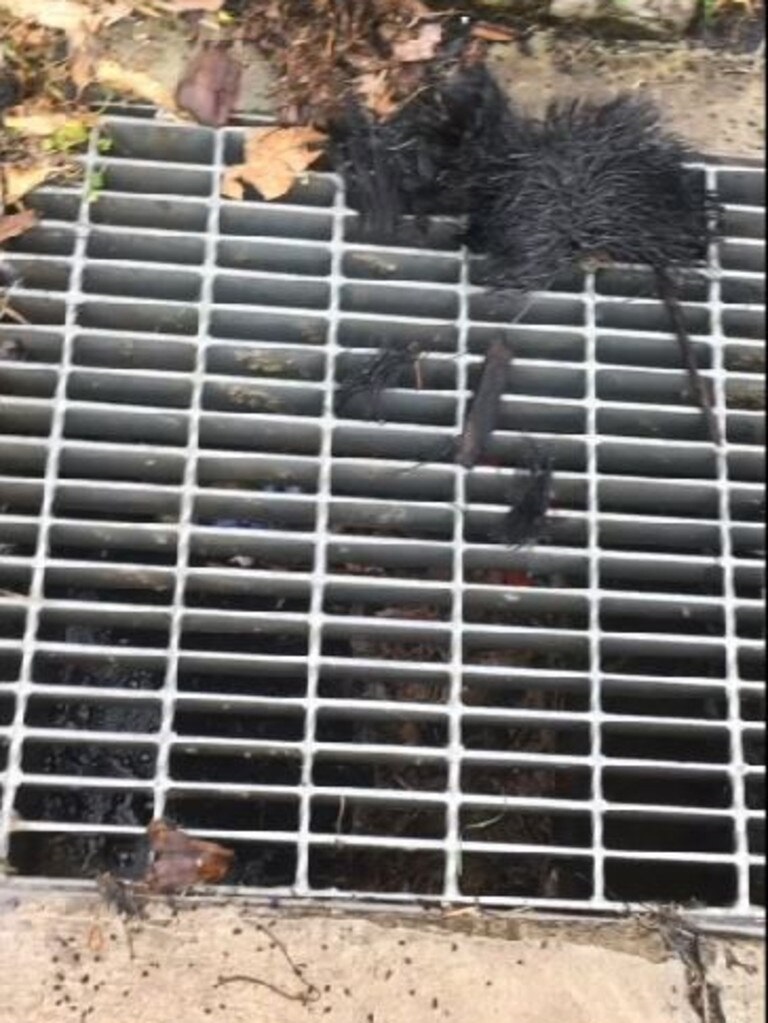
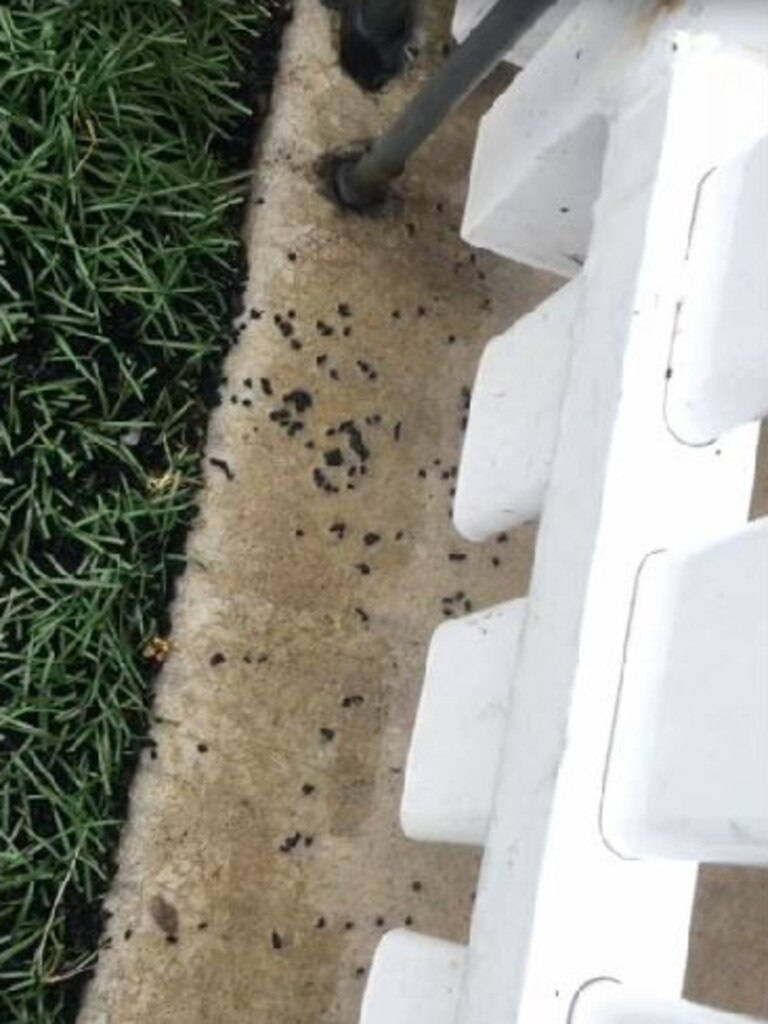
Melwood Oval - synthetic field fragmenting. Images: supplied.
- Impose a 5-year moratorium on new planning and approvals for synthetic grass fields.
- Subject existing fields to pollution mitigation measures as soon as possible.
- Urgently develop end-of-life pathways (recycling?) for fields that will not cause damage (their case study identifies the only one in Australia, which is 10 years old and with Australian conditions mean they have shorter lifespans than overseas cases).
- Invest substantial effort into how to improve drainage and condition of natural grass fields to avoid synthetic grass.
- Continue a research program including epidemiological or health risk studies, heat impacts, environmental impacts, chemical composition, stormwater discharge, microplastic loss etc.
Operation Posidonia Update: March 20 2024
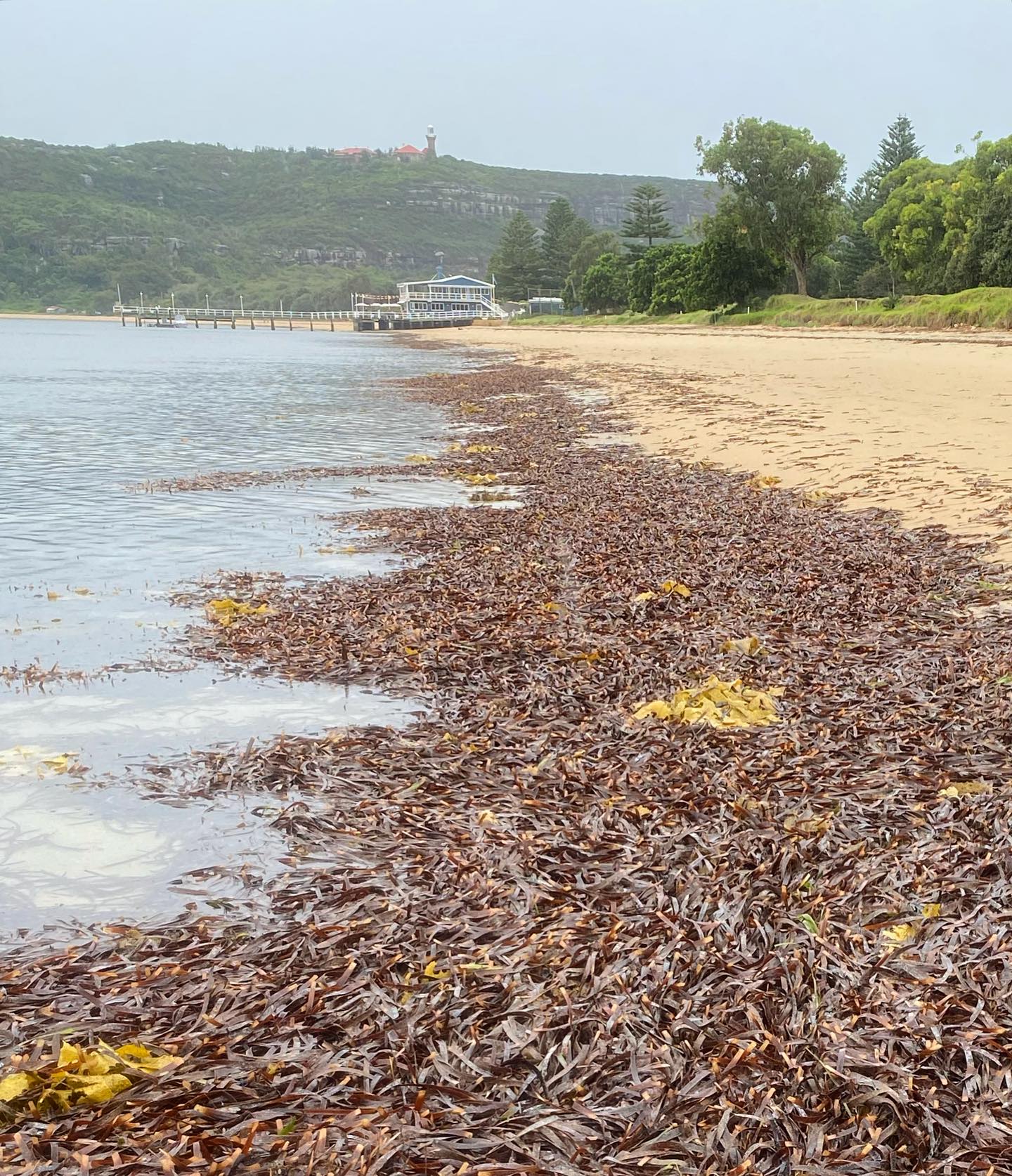
- Weedy Seadragons Citizen Scientist Project Needs More Eyes On The Seas, Sands + Shores: The SeadragonSearch Project - May 2023
- Manly Wharf Upgrade REF Plan To Relocate On Verge Of Extinction White's Seahorse And Manly's Endangered Population Of Little Penguins; New Wharf Will Not Fit Freshwater Class Ferries - Feedback Closes December 23rd - December 2022
- Careel Multi Layered Coastal Assessment CMCA - May 2022
- Seaweed Forests Festival Podcast Launch: Dive Deep Online Into How YOU Can Help Our Oceans! - August 2021
- Sydney Marine Institutes Living Seawalls Project A Finalist In Inaugural A Royal Foundation Earthshot Prize - Reviving Our Oceans - September 2021
- Dog Owner Fined For Attack On Seal At Long Reef – NSW Land & Environment Court's Head Judge Quashes Dogs Being On-Leash Or Off-Leash On Station Beach, Barrenjoey - November 2020
- To Save These Threatened Seahorses We Built Them 5-Star Underwater Hotels: Hippocampus whitei - 'Whites seahorse' - February 2020
- Council Votes For Destruction Of Pittwater Environment And Wildlife On Historic Station Beach - A Family Beach - September 2019
Pittwater Natural Heritage Association Autumn 2024 Newsletter
- To raise public awareness of the conservation value of the natural heritage of the Pittwater area: its landforms, watercourses, soils and local native vegetation and fauna.
- To raise public awareness of the threats to the long-term sustainability of Pittwater's natural heritage.
- To foster individual and community responsibility for caring for this natural heritage.
- To encourage Council and the NSW Government to adopt and implement policies and works which will conserve, sustain and enhance the natural heritage of Pittwater.
The Long Lunch
On Sunday April 21 NBCAN is holding fundraiser, 'The Long Lunch'.
This event hopes to raise enough funds to buy a PA system for the Northern Beaches Climate Action and its 47 Groups to share to use at the NBCAN Soapbox and other events.
This will be held on beautiful acreage in Ingleside.
Enjoy drinks and canapes on arrival, followed by a delicious buffet and home-made desserts, while listening to an eclectic mix of music from great local talent.
There will be a Silent auction with great prizes, art, pottery and plants for sale.
If you can't attend but still wish to donate, please use our "Scan to pay" QR code and thank you for your generosity.
Tickets are available at: www.eventbrite.com.au/e/the-long-lunch-tickets

Council’s Plan To Help Everyone Reuse, Repair And Recycle More
- pilot a circular economy hub for repair and reuse of household items, including working with charities, community groups and other interested groups
- help the community to reduce household waste by 10% by 2030 and by 20% by 2040
- implement regular and accessible collections of electronic waste, textiles and household chemicals by 2025
- halve the amount of household food waste sent to landfill by 2030, with a phased approach to food waste collection
- provide local drop-offs or kerbside collections for the most common household plastics where there are reliable markets for the recycled products
- advocate for the phase out of single use unrecyclable plastics
Why Are There So Many Moths Around At The Moment?
Have you noticed, when walking through longer grass, that there are a LOT of little moths around at the moment?
As a general rule, moths start breeding in Spring and continue until late Summer and early Autumn. There are some that we will see in March though - warm weather and some rain helps them and they will rise up in little clouds of wings and tickle your knees when you walk through where they are resting - especially early in the morning.
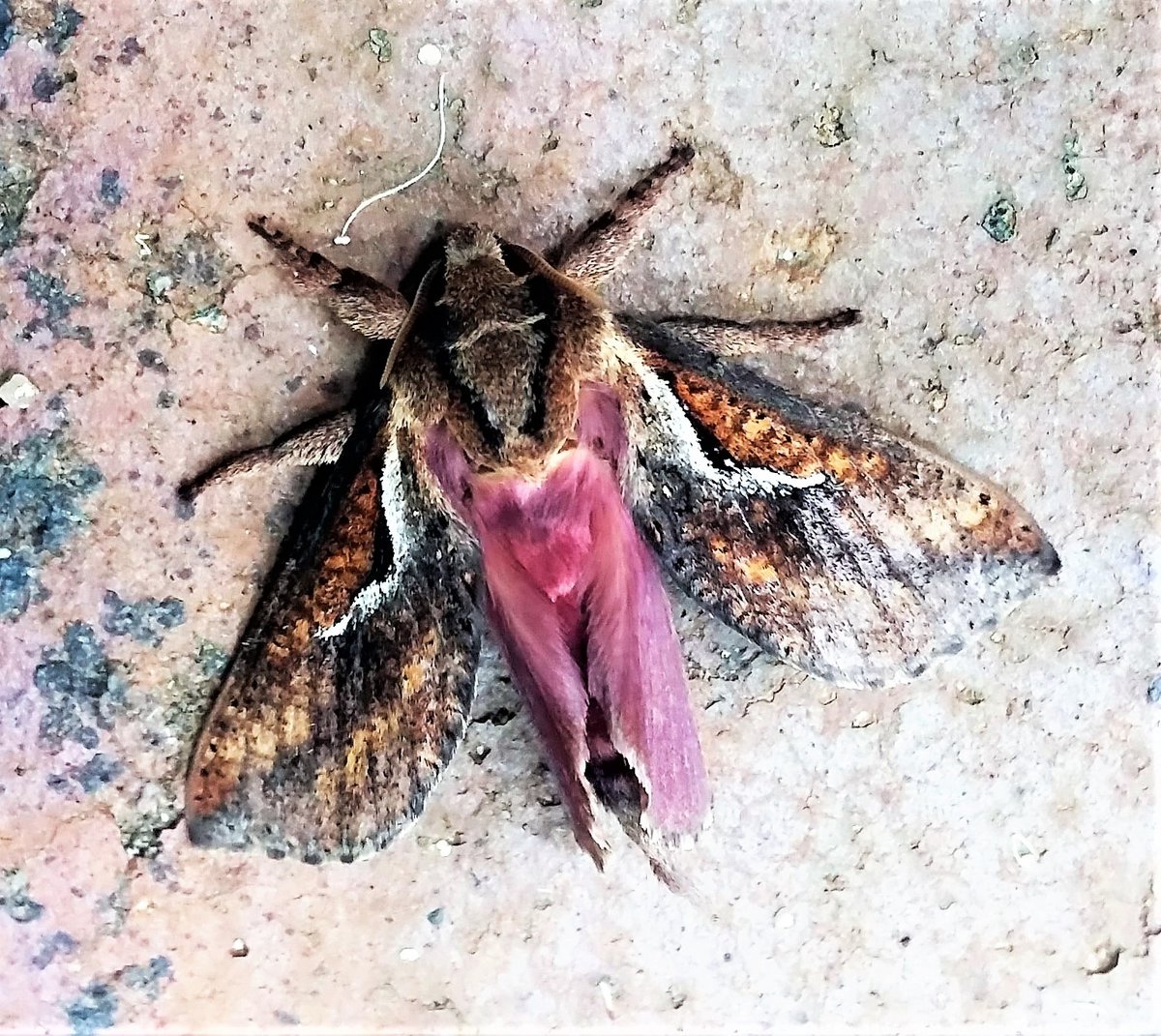
Ghost moth, Blackheath, NSW. January 2018 Image: David Jackson. Courtesy Australian Museum, Public Domain.
This beautiful Ghost moth was encountered at Blackheath, NSW, in January 2018. It's scientific name is Elhamma australasiae, and it is a species of the Hepialidae family.
The family Hepialidae, commonly known as Ghost and Swift Moths, contains some of the largest and most obvious Australian moths.
There are about 150 species of ghost and swift moths found in Australia. The common name “ghost moth” comes from a European species whose white ghostly males are seen hovering over open ground in a conspicuous display flight to attract females.
These moths fly in late Summer and Autumn into early Winter. They sometimes emerge on mass after rains. The earliest adults appear in January, but they are most common in March and usually disappear by April. The males come to lights more readily than the females, and are more uniform in size. The species occurs in New Guinea, and along the eastern seaboard of Australia, and is a common species in Queensland, New South Wales and Victoria.
There are also butterflies you may see in your garden all year round.
The Common Crow Butterfly Euploea is around in Summertime although we've also seen pockets of them in local bush reserves in the middle of Winter; usually those places that have some water and sun. The photo below was taken in Angophora reserve then, and was one of masses fluttering and landing on the ferns over the small creek that runs through the eastern part of the bush there.
The Australian Museum tells us this is because Adult Common Crow Butterflies overwinter together for protection in large aggregations of one to two thousand butterflies. The butterflies go into a dormant state in which they live on their fat reserves and nearby nectar sources until warmer weather returns. These aggregations occur in sheltered coastal sites and on offshore islands in the tropics and subtropics of northern and eastern Australia - however, obviousy we have a few places here in Pittwater that are sheltered and warm enough.
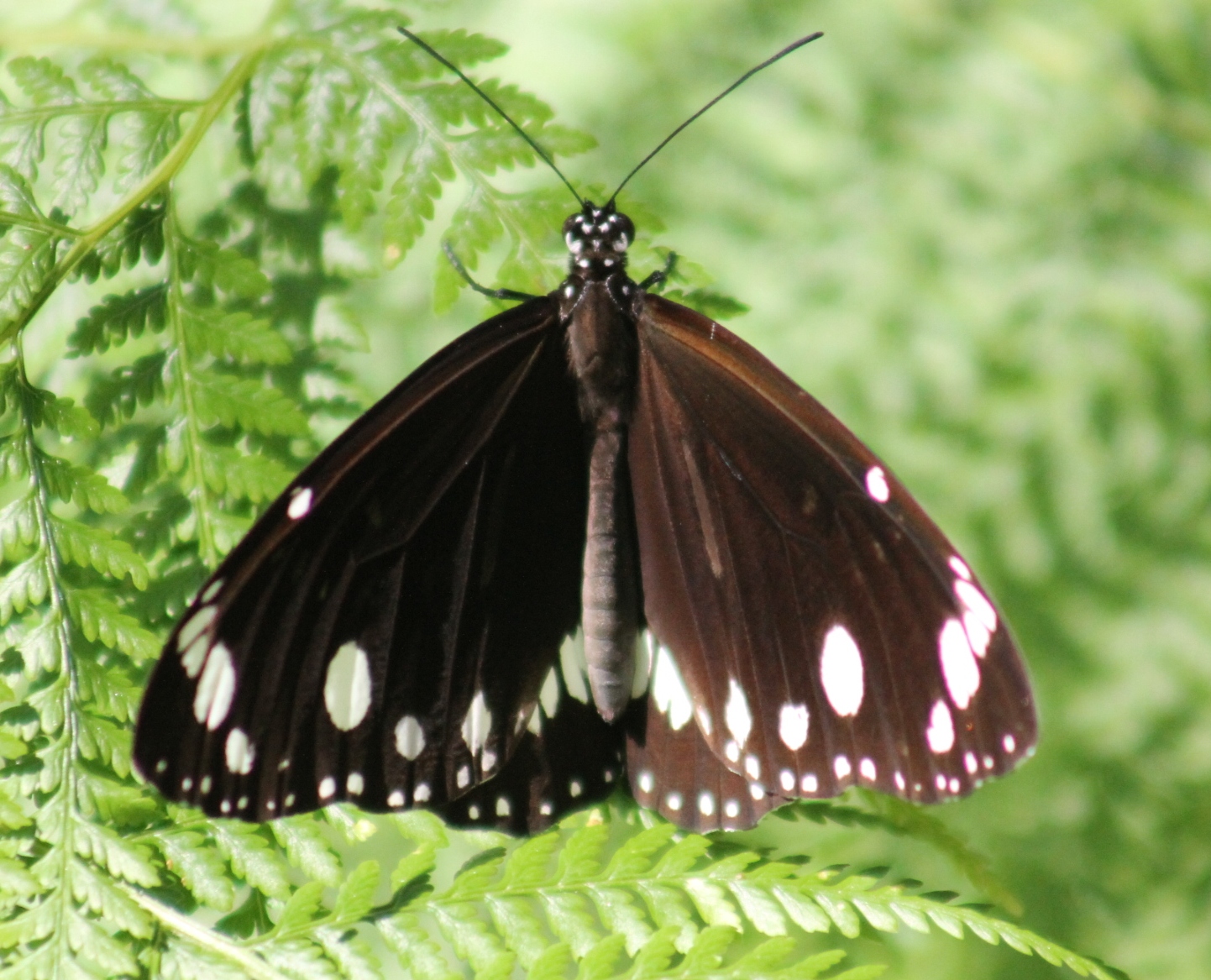
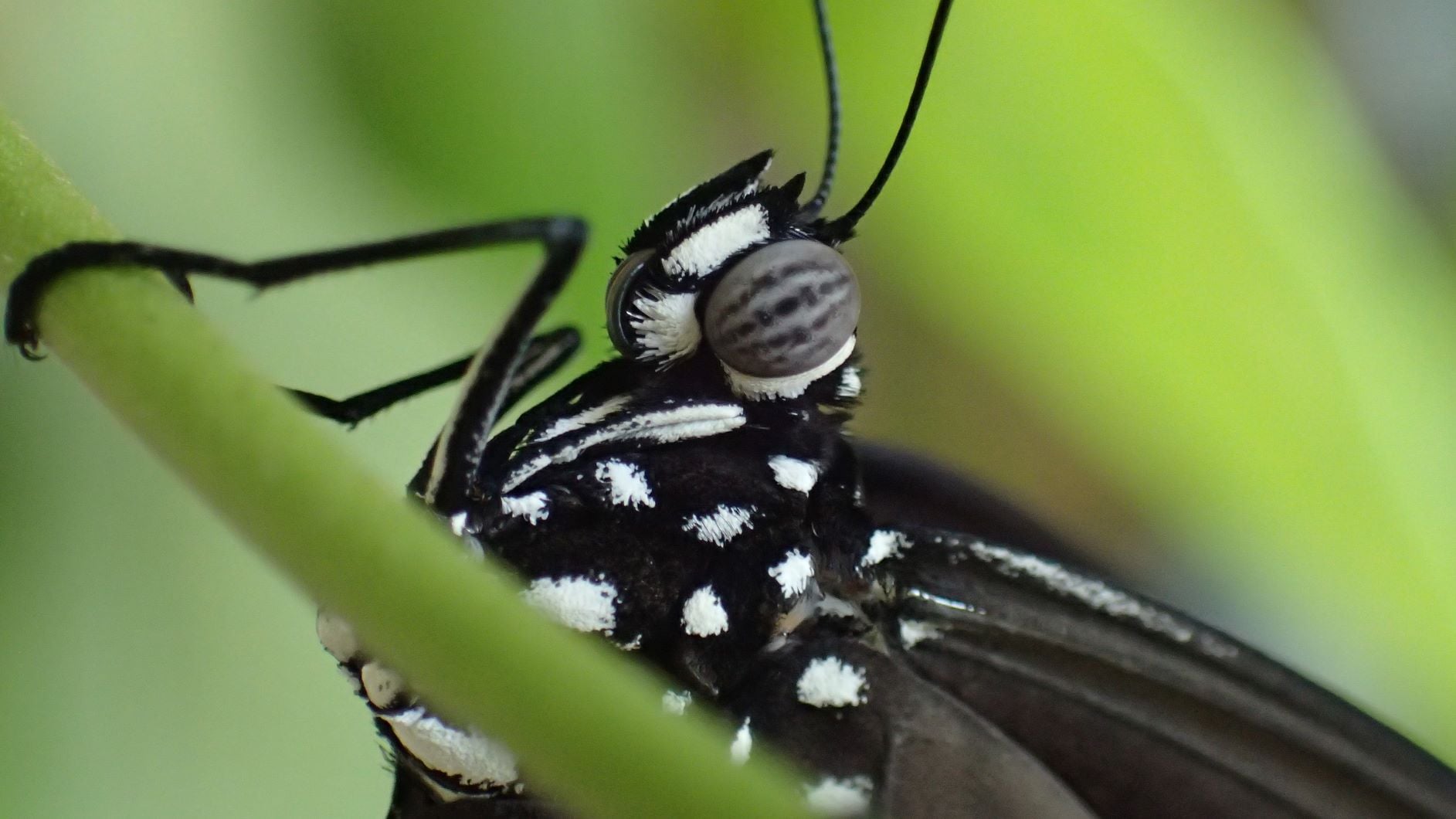
Common Crow Butterfly Euploea close up. Photo: Gary Harris
The creek trough Angophora resreve where we saw all these butterflies:
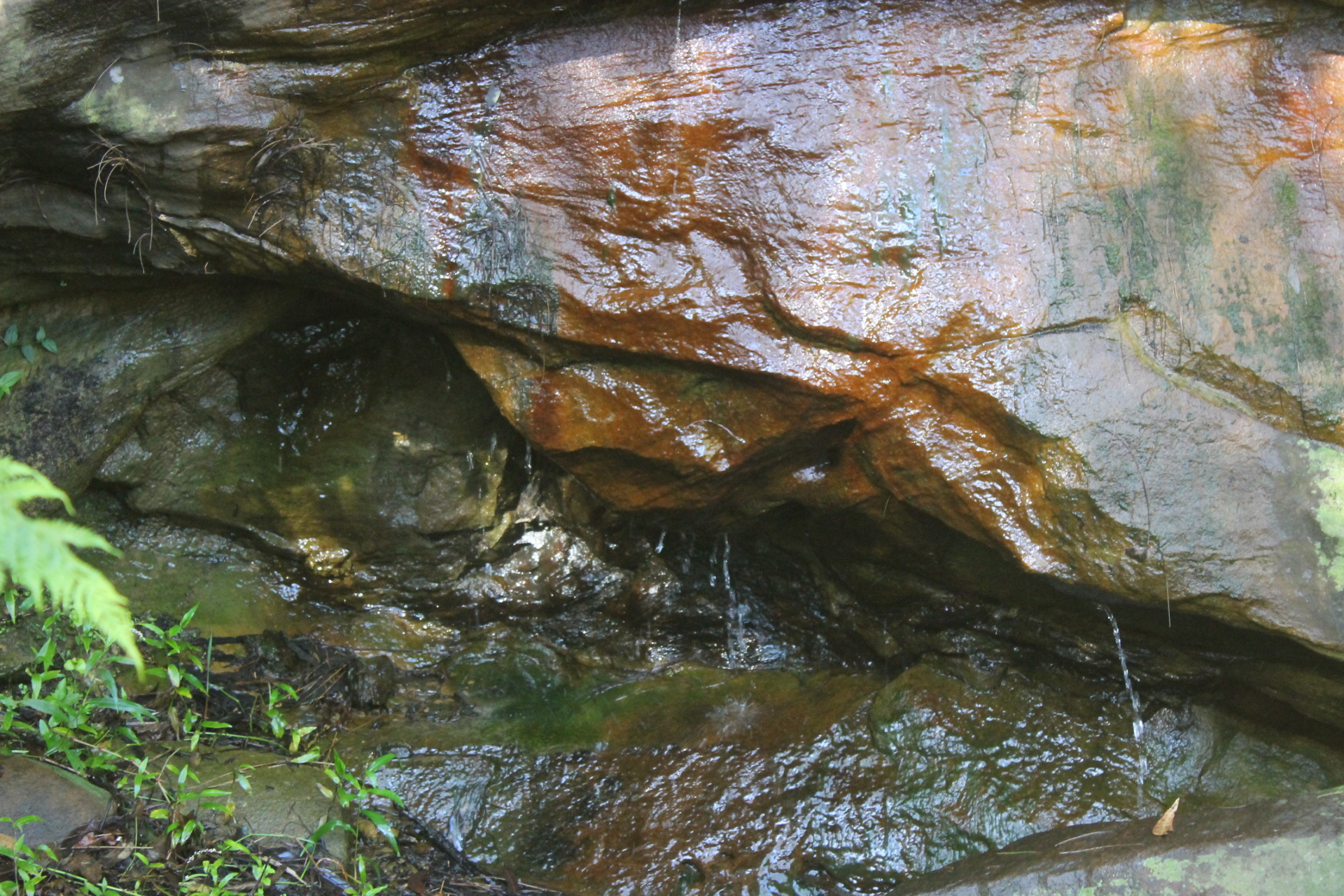
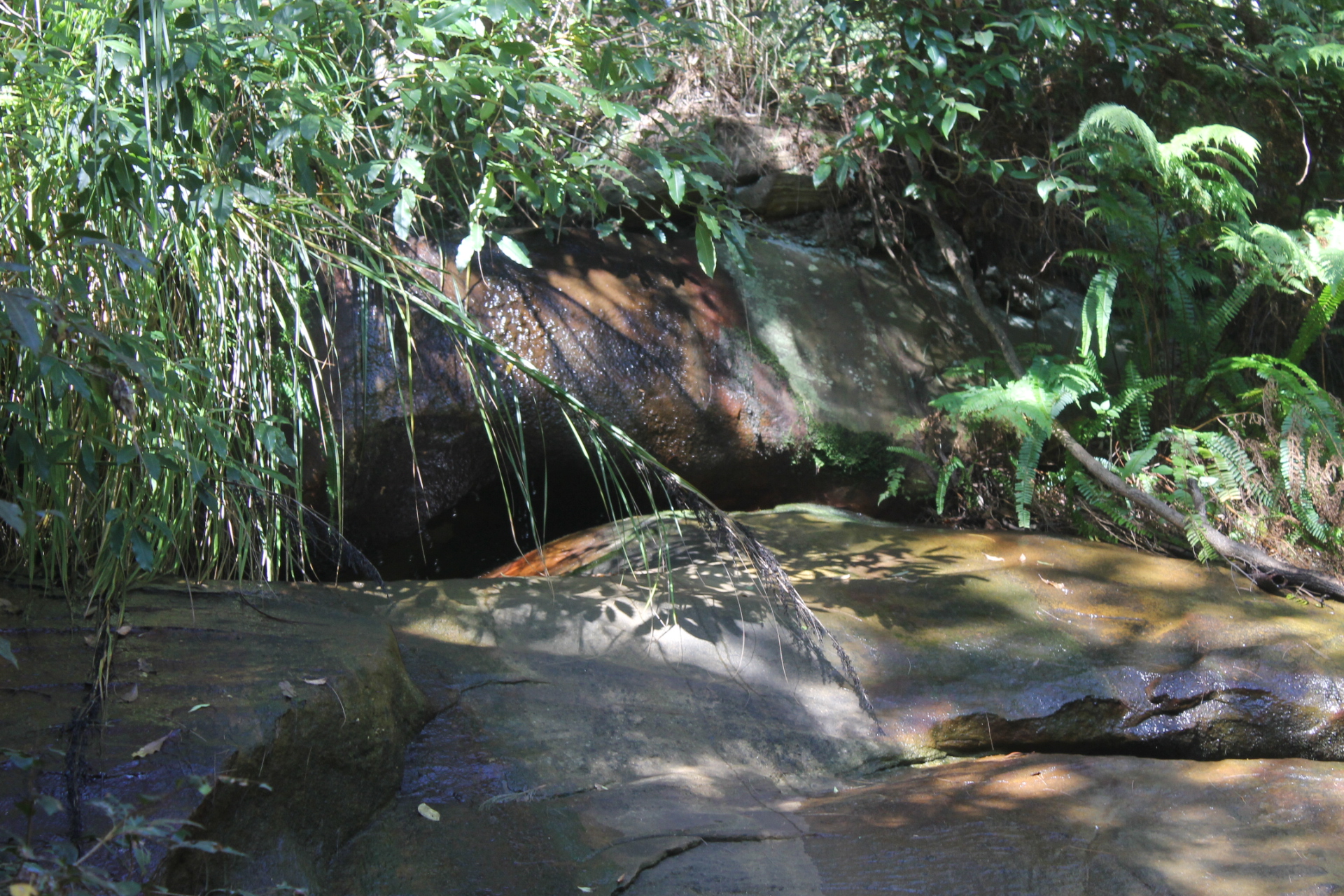
Wirra Birra Park Opening
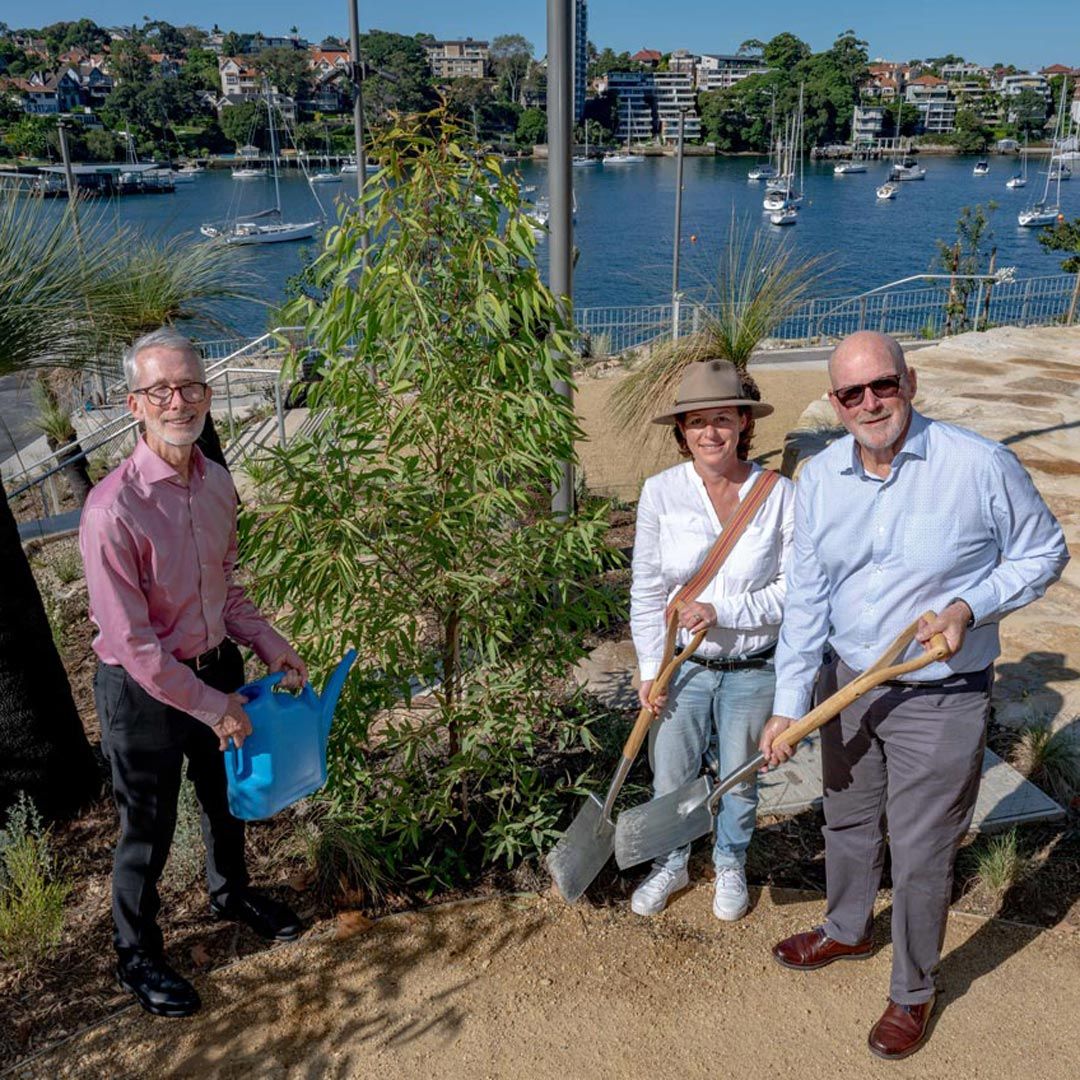
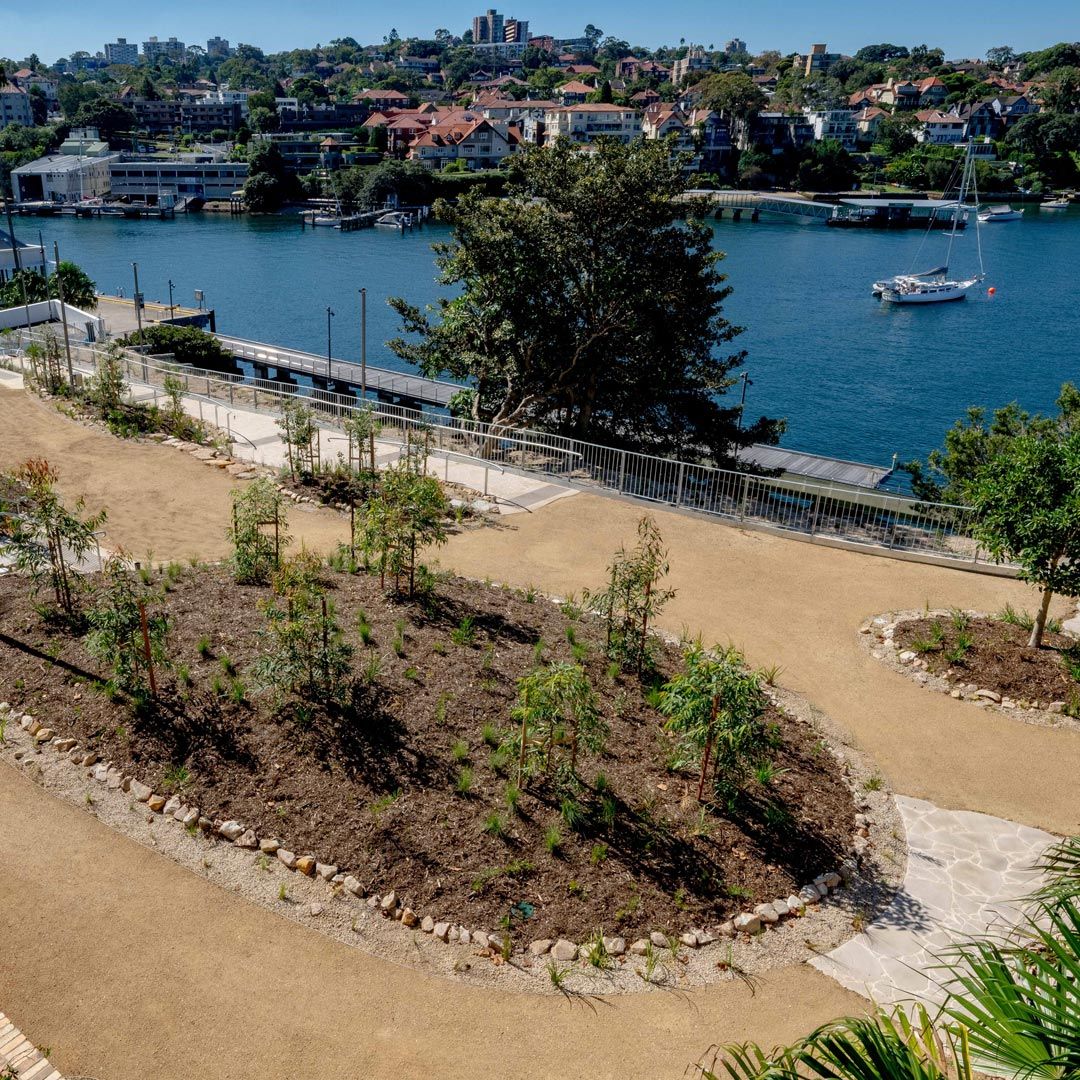
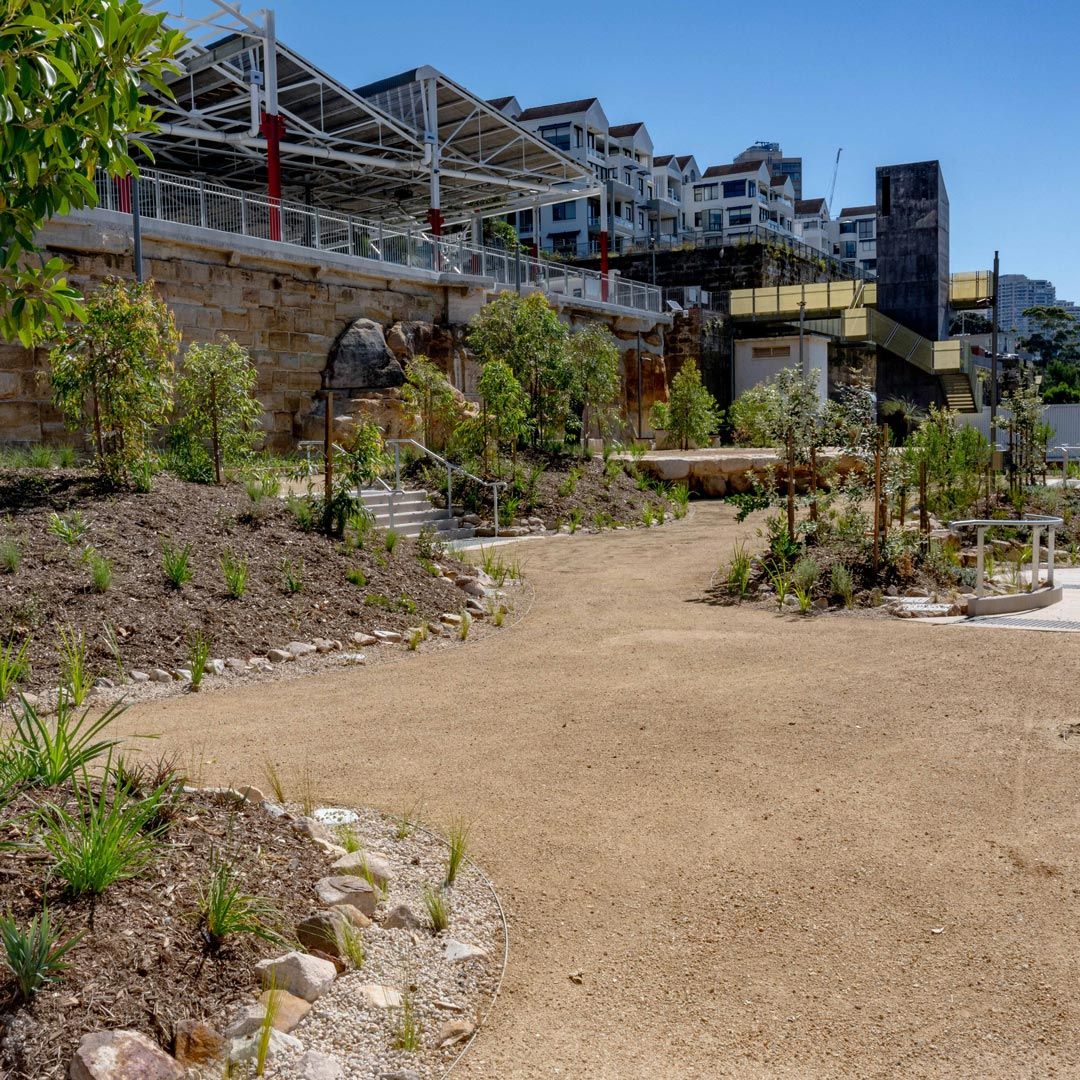
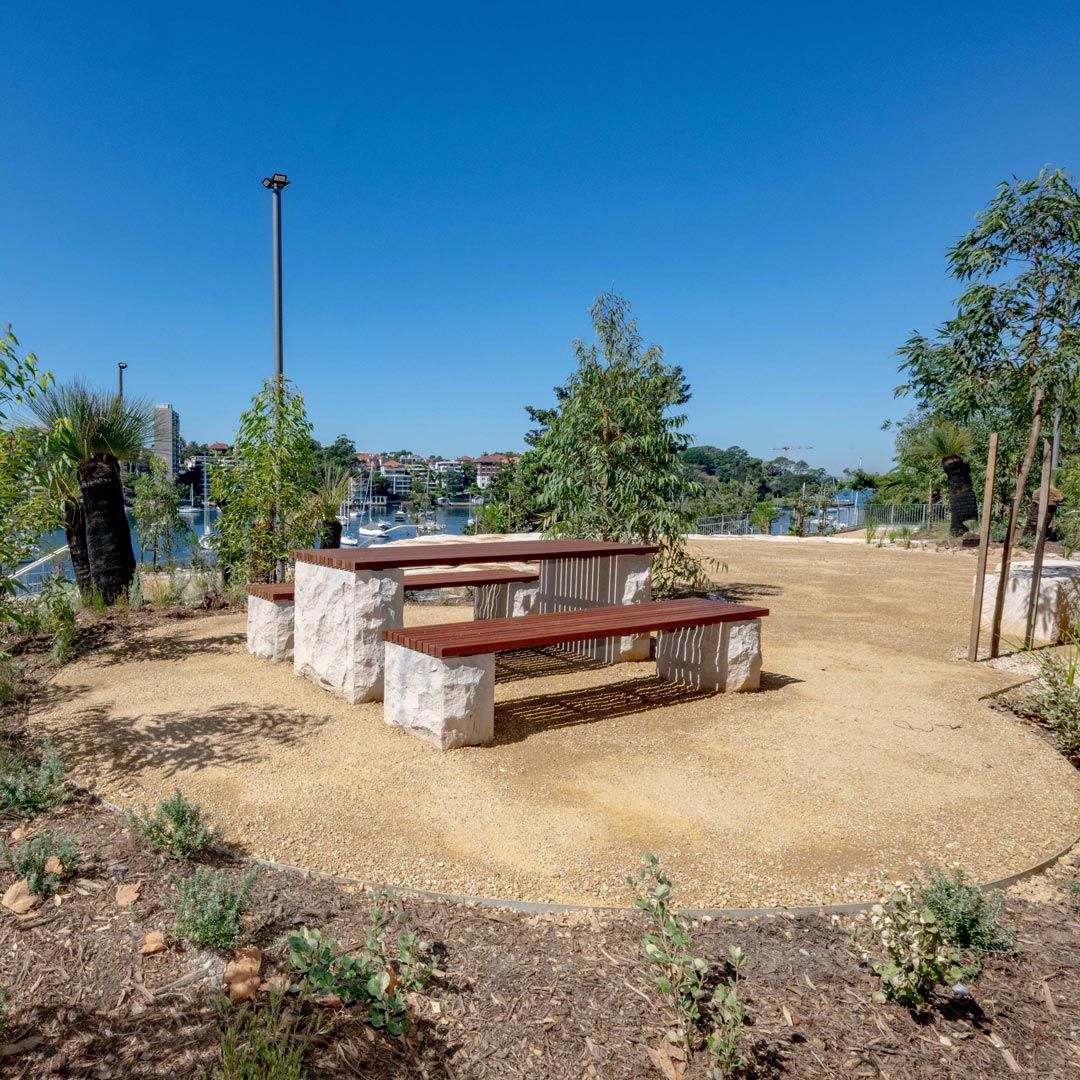
Increase Tree Vandalism Penalties: NSW Parliamentary Petition
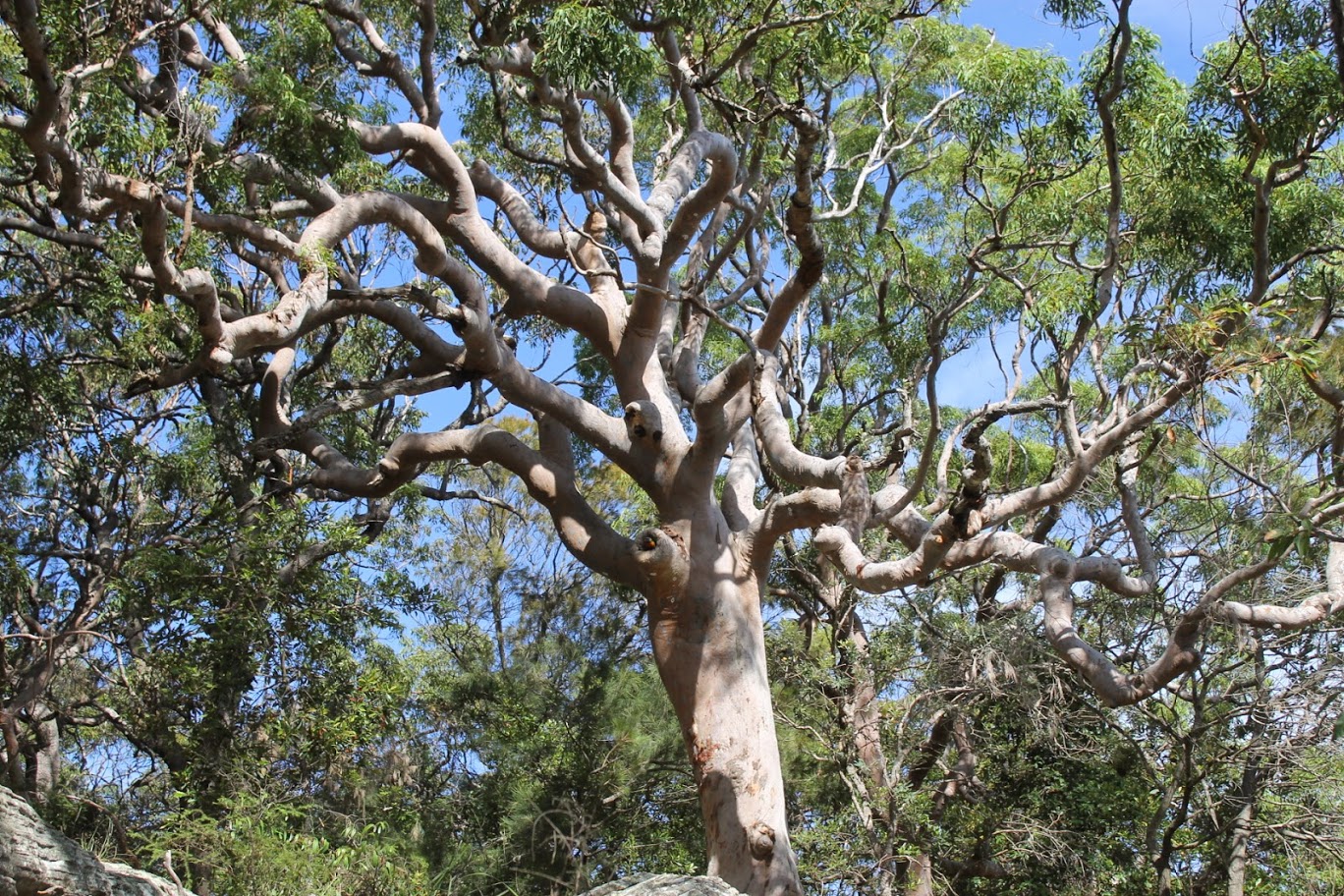
.jpg?timestamp=1708790130470)
Have Your Say: Hawkesbury-Nepean Valley Disaster Adaptation Plan
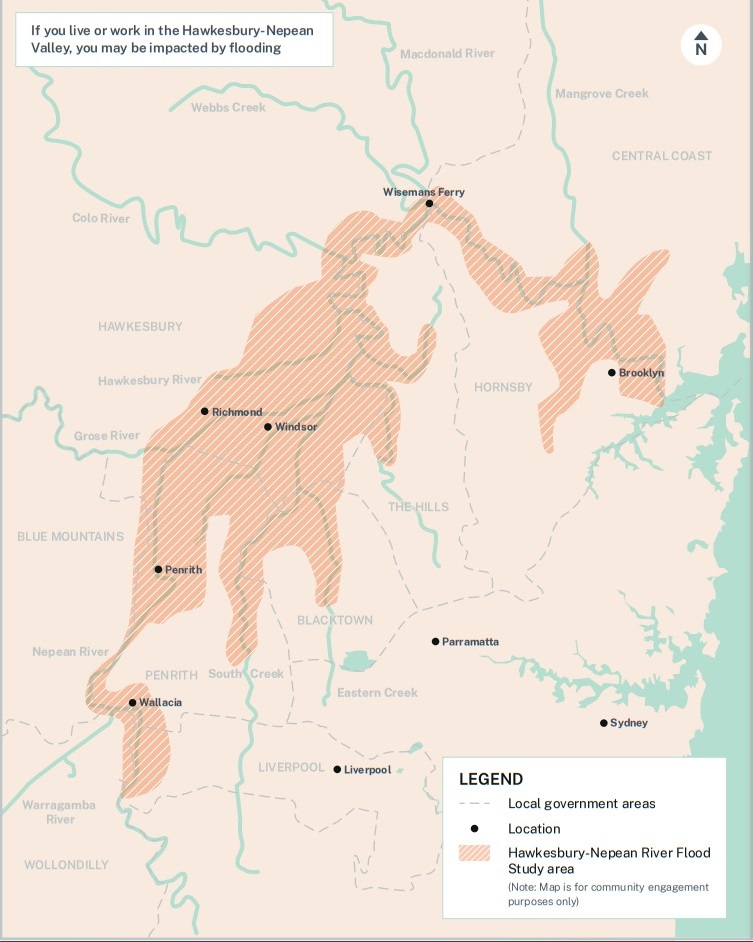
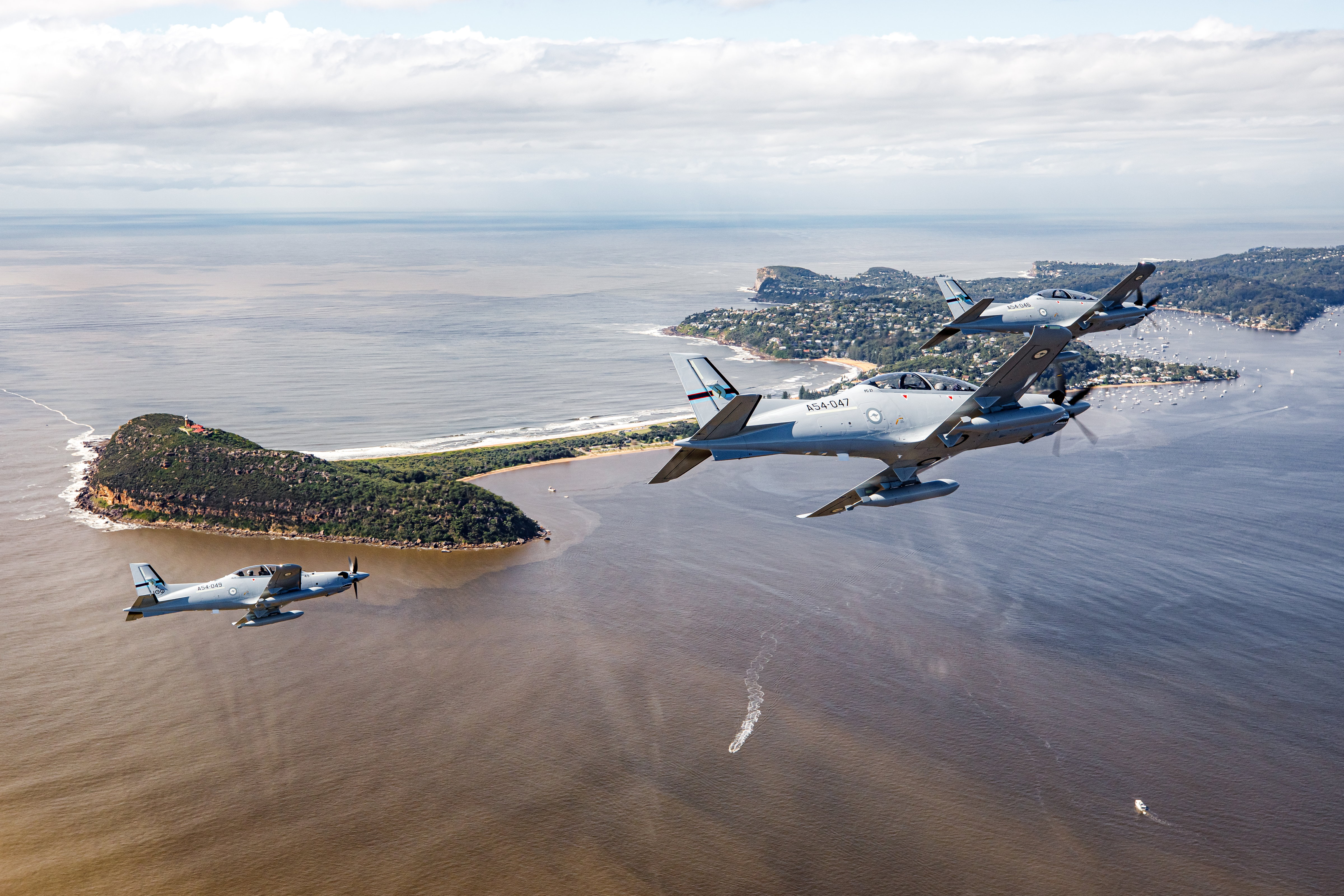
New Research Shows Koalas In The Sydney Basin Are In Decline: NSW State Government Seeking Feedback On Reviewing The NSW Koala Strategy
- Overall, the proportional area where koalas are found in the Sydney Basin has slightly declined and there are fewer areas supporting long-standing breeding populations.
- The geographic extent (Extent of Occurrence) of koalas across the Sydney Basin has remained relatively stable from 2021 – 2023, though with a slight overall trend towards decline (0.75%). This represents a decrease of 35,857ha.
- The proportion of this extent which is occupied by koalas (Area of Occupancy) across the Sydney Basin shows a small but significant decline from 12.81% ± 0.18% (2021) to 12.55% ± 0.13% (2023).
- Areas of Generational Persistence (long standing source populations) across the Sydney Basin are dynamic, though there is an overall decrease in the number of cells of Generational Persistence between the time frames 2021 (n = 141) and 2023 (n = 125).
- When considering the six Focal Areas, patterns are variable with some areas showing small increases or relative stability e.g. Hawkesbury LGA and Liverpool LGA respectively, while other areas show significant declines e.g. Cessnock LGA and Wingecarribee LGA.
- The results of this study may be impacted by delays in entering koala sightings records into government databases, though we note that significant decreases in Cessnock occur despite high numbers of records.
- The majority of relevant councils still have no Comprehensive Koala Plan of Management (KPoM) in place.
- Disparities in koala protection remain, with progress towards returning to a single State Environmental Planning Policy (SEPP) for koalas stalled.
- The new Labor government has not detailed its plans for environmental reform, including in relation to its commitments around land clearing and biodiversity offsets, and is still preparing its response to the 5-year statutory reviews of the BC Act and Part 5A of the Local Land Services Act 2013 (NSW) (LLS Act).
- The Commonwealth government continues to work on legislative reform to the Commonwealth Environment Protection and Biodiversity Conservation Act 1999 (EPBC Act), yet progress is slow and, at this stage, it is still unclear how the reforms will ensure improvements in threatened species conservation, including koalas.
- Finalise the Koala SEPP Guideline - applying a full list of koala habitat trees to rural and urban land.
- Add all LGAs in the Sydney Basin with koala sightings to the Koala SEPP i.e. Sutherland Shire, Penrith, and Hills Shire.
- Give recognised koala corridors legal protection e.g. via relevant SEPP changes, by following Chief Scientist recommendations to protect, restore, and zone appropriately sized corridors as conservation land (C2).
- Reform the Cumberland Plain Conservation Plan
- Scrap the Rural Boundary Clearing Code (RBCC) in the Sydney Basin Bioregion, to prevent further fragmentation of koala habitat.
- Urgently adopt interim controls on koala habitat in Areas of Regional Koala Significance (ARKS) to prevent clearing of koala habitat across public, and private land.
- Fund councils via NSW Koala Strategy to develop Comprehensive Koala Plans of Management (CKPoM) ensuring all councils have a CKPoM in place.
- Reform the Local Land Services (LLS) Act to end code based clearing and strictly limit allowable activities on koala habitat.
- Reform the Biodiversity Conservation Act (BCA) and Biodiversity Offsets Scheme (BOS) to strengthen protection for koalas (and other species).
- Support Wildlife Rescue Groups to enable timely data to be uploaded to Bionet.
- Incorporate wildlife mitigation measures such as overpasses and underpasses into plans for all new roads and upgrades.
- Undertake a strategic supply plan to reduce ad-hoc quarry development on koala habitat.
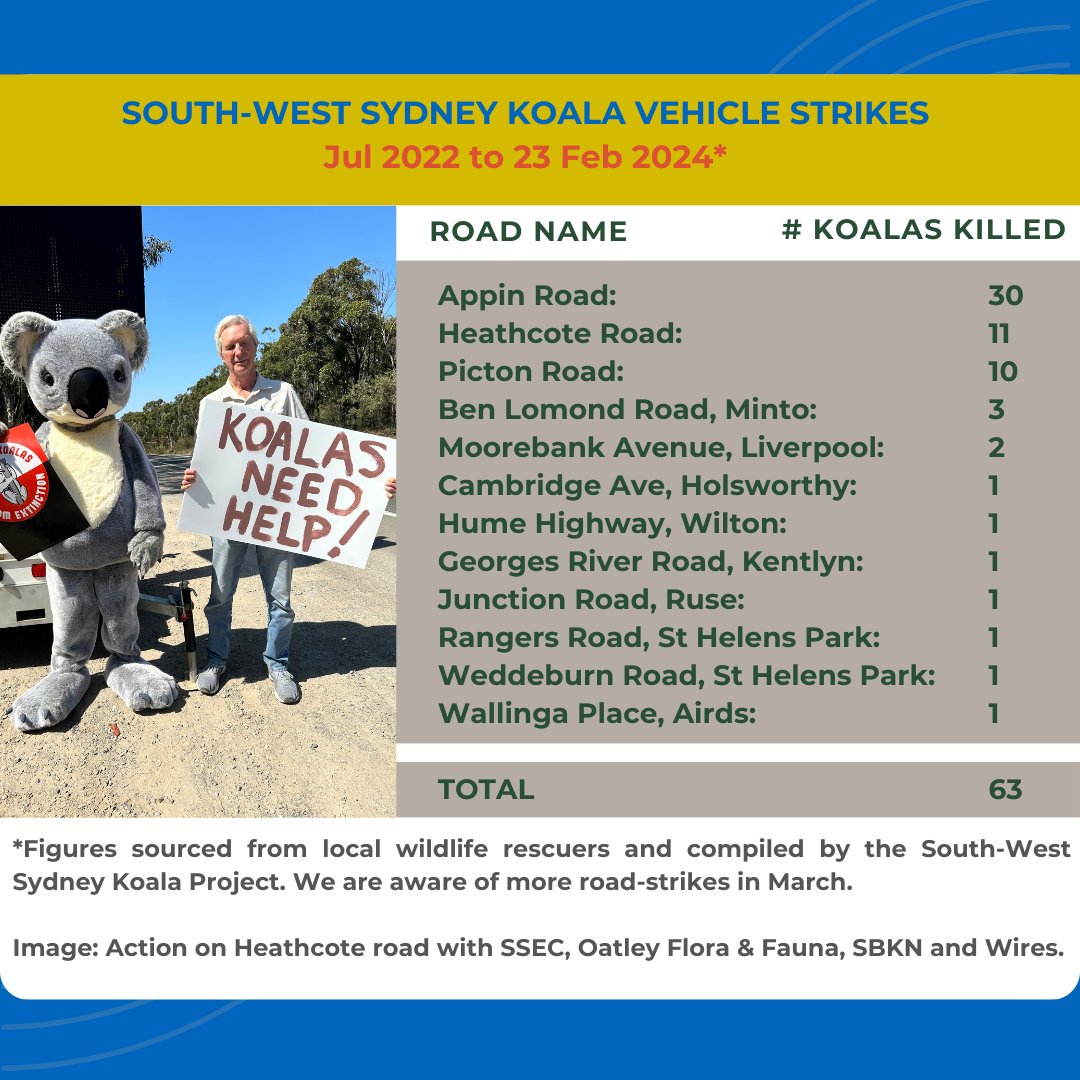
Eastern Blue Groper Changes: Have Your Say
Iconic Blue Groper Now Protected In NSW
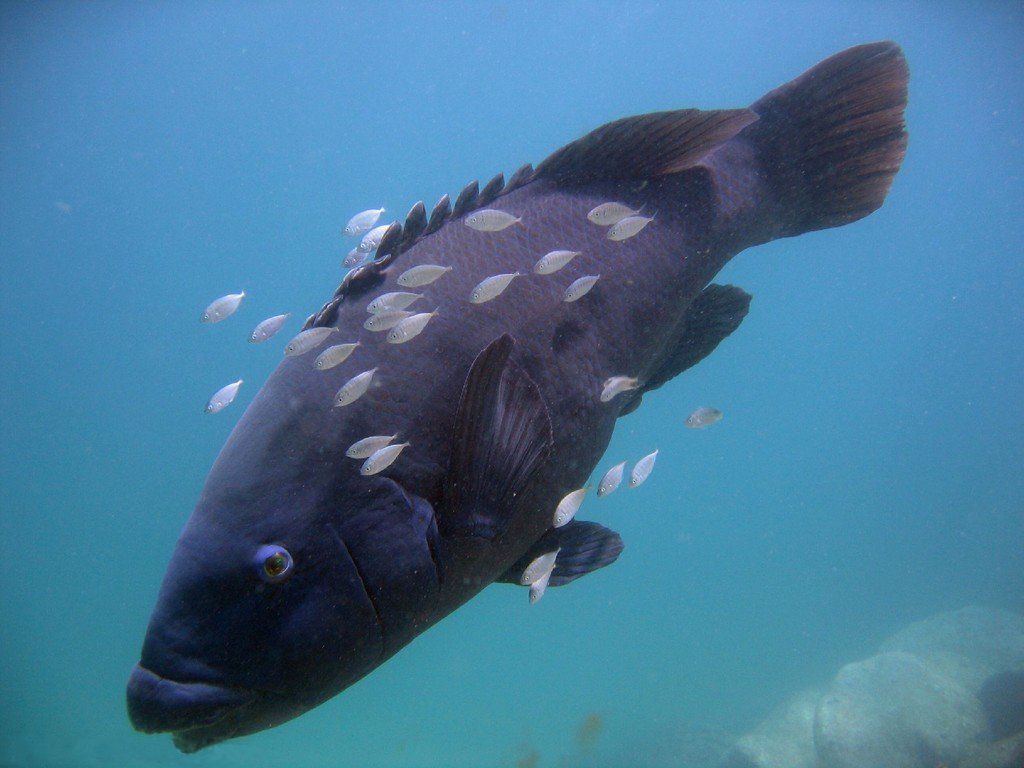
Murrumbidgee Floodplain Management Plan: Have Your Say
- the proposed floodplain boundary
- the historical flood events used for modelling
- the floodway network
- cultural and heritage sites
- ecological assets
- local variances to some rules.
- Hay, Wednesday 3 April
- Balranald, Thursday 4 April
- Darlington Point, Wednesday 10 April
- Wagga Wagga, Thursday 11 April.
- Survey - Complete the survey: Murrumbidgee Floodplain Management Plan
- Email - floodplain.planning@dpie.nsw.gov.au
- Formal submission - Address: Murrumbidgee Valley FMP, Water Group - NSW DCCEEW, PO Box 189, Queanbeyan, NSW 2620
Historic Macquarie Perch Stocking Of The Mongarlowe River
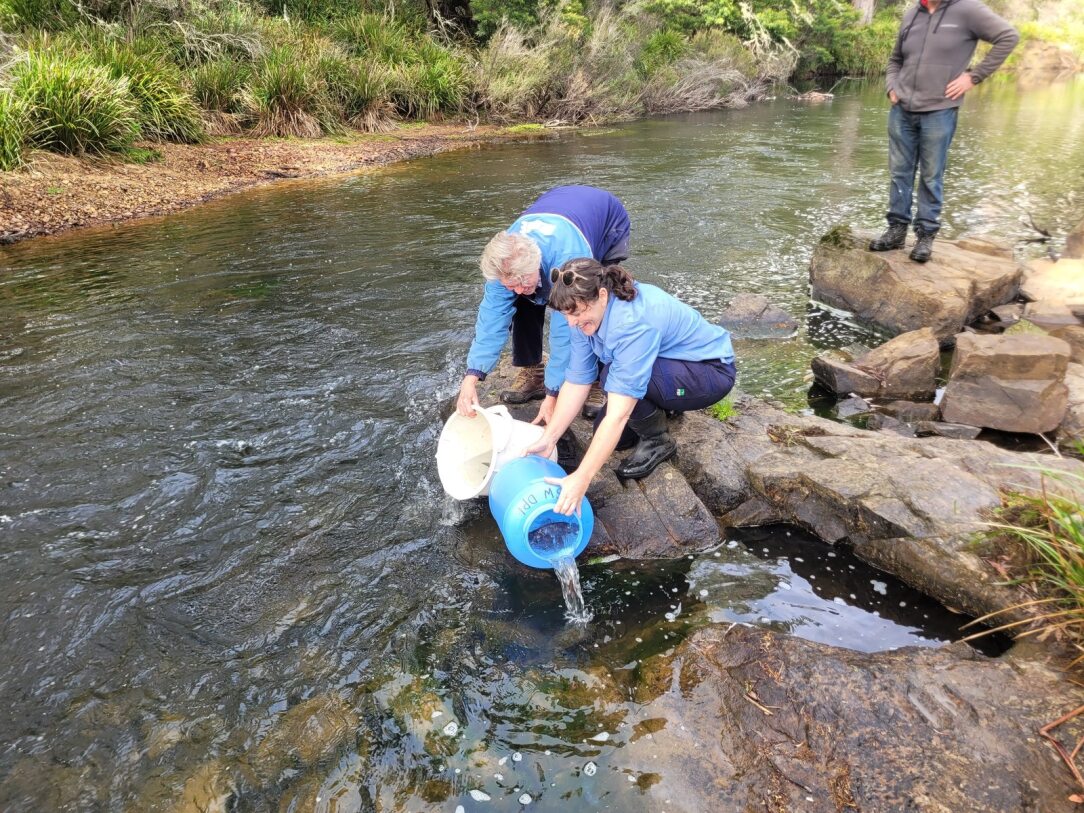
Could spending a billion dollars actually bring solar manufacturing back to Australia? It’s worth a shot

Solar SunShot is well named. The Australian government announced today it would plough A$1 billion into bringing back solar manufacturing to Australia, boosting energy security, swapping coal and gas jobs for those in the solar industry, and guarding against supply chain shocks and geopolitical tension.
The announcement is big. At a stroke, the federal government is proposing to directly invest in manufacturing the main technology Australia will rely on to make its power. By 2050, solar should provide most of our electricity – but only if we have enough panels.
What would that look like? Australia was once a world leader in solar energy technology. But while our solar researchers are still highly regarded, we only have one company commercially manufacturing solar panels. That means the SunShot program will likely start by boosting efforts to make modules here using imported cells and module components, before building out the supply chain to make glass for the panels, aluminium frames and, eventually, the solar photovoltaic cells themselves and the pure polysilicon needed to make them.
If we had a solar manufacturing industry able to make a gigawatt’s worth of panels annually, we would create around 750 jobs and meet about 20% of our current demand for solar. More jobs would come as the ecosystem grows, including manufacturing glass and aluminium frames.
Critics will say it’s pointless to compete with China’s dominant renewable energy industry. But as climate change worsens and global efforts to go green intensify, we can’t rely on a single country. The backdrop, of course, is the increasing popularity of reshoring, where Western countries use public funding to try to bring back manufacturing from nations such as China, as the United States is aiming to do with its mammoth Inflation Reduction Act.
Can We Compete With Cheap Panels?
In 1983, UNSW professor Martin Green invented the first PERC solar cell (which stands for Passivated Emitter and Rear Contact). This cell was better at converting sunlight to electricity than previous cells. His invention is now in use in about 90% of the world’s installed solar panels.
Australian researchers have long been at the forefront of solar development. But where we’ve struggled is in commercialisation and manufacturing. The world’s first solar billionaire, Shi Zhengrong, did his PhD at UNSW before returning to his native China to found the multinational solar giant SunTech. Even now, many of China’s top solar firms have connections with Australian researchers.
China became dominant in renewables not simply because of its enormous domestic market and a deep manufacturing base. The Chinese government has long funded solar firms to make their products more competitive.
That’s where Australia’s SunShot would come in, by helping to create the market of suppliers needed to make solar panel manufacturing a reality.
Australia wouldn’t be trying to go for global market share, but rather to substitute its own imports. Currently, only about 1% of the millions of panels we install annually are made in Australia. Even so, as the solar industry surges worldwide, there may well be room for more entrants.
What Would Australian Solar Manufacturing Look Like?
We can’t run before we can walk. Bringing manufacturing back won’t happen overnight. Today’s announcement is short on detail. But we know it draws on work done last year by the Australian PV Institute in a report titled Silicon to Solar, which this article’s lead author worked on.
Realistically, what we’ll have to start with is working with our single existing solar panel manufacturer, Tindo, as well as boosting other market entrants such as the startup SunDrive.
Tindo doesn’t make solar panels from scratch. Instead, it imports cells from overseas and assembles them into modules.
The first step, then, is to grow the market for Australian-made modules using imported products. This is the quickest step in the supply chain to establish.
Then we can begin helping suppliers of other components, such as the special glass to cover the panels, and the aluminium frames.
The next step would be to establish solar cell production lines in Australia and scale them to meet the demand from our own module production lines.
We could then move to the next challenge, turning silicon ingots into the wafers used for cells. Establishing these capabilities in Australia might allow Australia to export these materials to other markets such as the US and Europe.
The final step – and one that will take years and more investment, even if we start planning now – would be to have our own polysilicon factories. A multibillion-dollar factory near Townsville is being planned, with support from the Queensland government.
Turning lower-grade metallurgical silicon into 99.9999% pure polysilicon is hard and expensive. You can’t build a small polysilicon factory – scale is important. But it can be done. The size of the factory needed means most of the polysilicon it produces will need to be exported to regions like the US and Europe. We could begin to substitute polysilicon for exports of coal and gas.

What Are The Benefits?
The government will spruik jobs in the regions, especially where retiring coal plants such as Liddell in New South Wales will take jobs with them.
But there are other benefits. We could take better advantage of the talent and research knowhow in Australia to begin building next-generation cells.
If we can kickstart a viable solar industry, it would help us unlock other parts of the green economy. Cheap and plentiful solar power could make it viable to crack water to make green hydrogen or make green steel and aluminium.
Many of these initiatives have to be set in train now to gain the benefits in five or ten years’ time. Today’s announcement is just the start. But in a sun-drenched country, it makes sense to aim for the skies. ![]()
Brett Hallam, Associate professor, UNSW Sydney and Fiacre Rougieux, Senior Lecturer, Photovoltaic and Renewable Energy Engineering, UNSW Sydney
This article is republished from The Conversation under a Creative Commons license. Read the original article.
Marine protected areas safeguard more than ecology – they bring economic benefits to fisheries and tourism
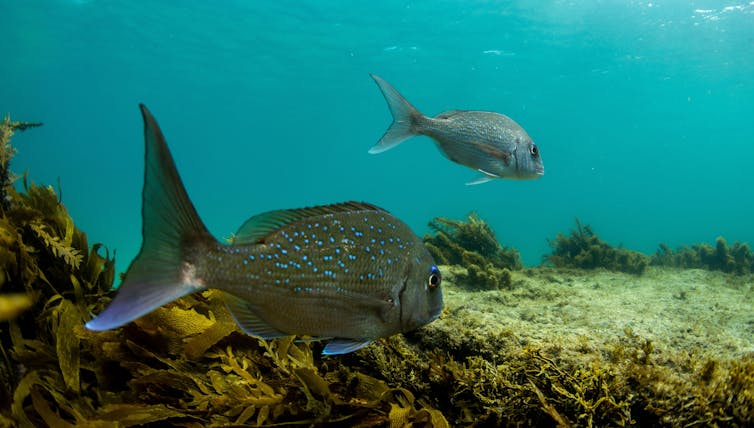
Marine Protected Areas (MPAs) have been used as a conservation measure for decades, but critics continue to argue that evidence of their economic benefits is weak, particularly with regard to fisheries.
Given the challenges in establishing MPAs, including objections from fisheries and the frequently small size and sub-optimal location of protected areas, one would expect their economic benefits to be hard to detect.
My new study reviews 81 publications about MPAs in 37 countries. It shows their establishment has resulted in benefits to commercial fisheries in 25 countries and to tourism in 24. These benefits covered a diversity of ecosystems, including coral reefs, kelp forests, mangroves, rocky reefs, salt marshes, mudflats and sandy seabed habitats.

There were 46 examples of economic benefits to fisheries adjacent to a marine protected area. These include increased fish stocks and catch volumes, higher reproduction and larval “spillover” to fisheries outside the MPA. Other studies also reported larger fish and lobsters close to existing MPAs.
Despite claims in the research literature of fishery displacement due to the establishment of an MPA, it seems the benefits outweigh any temporary disruption of fishing activities.
In my research, I have found no evidence of net costs of an MPA to fisheries anywhere, at any time.
Fishery Models Need To Account For Protection Benefits
Most economic models estimating the costs marine protected areas impose on fisheries don’t account for the present costs of fishery management (or absence of management).
When an entire fishery is closed temporarily by fishery management, the models estimate the potential benefit from stock recovery. But they don’t do that when a fraction of a fishery is closed for the long-term in an MPA.
Overall, my research shows that MPAs which ban all fishing have lower management costs and greater ecological and fishery benefits than more complex fishery regulations within a protected area. Thus, the economic models of the effects of MPAs need radical revision.
Although it may seem counterintuitive that a full restriction of fishing in an area will result in more fish elsewhere, this happens because MPAs act like a reservoir to replenish adjacent fisheries.
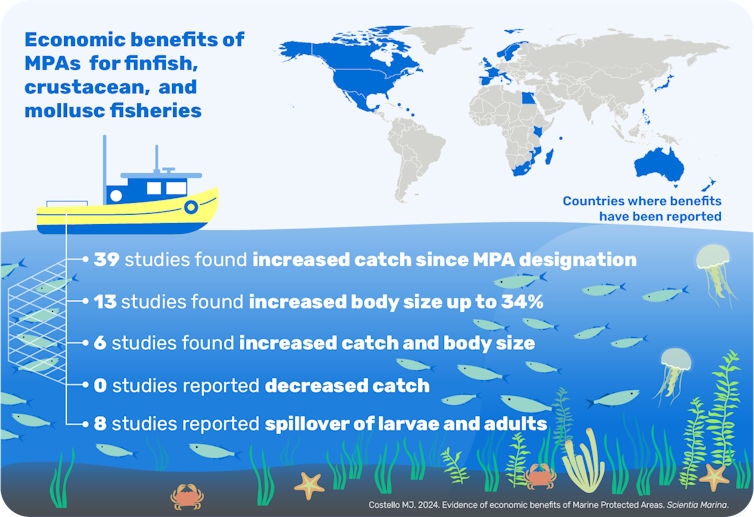
In financial terms, the capital is invested and people benefit from the interest on the investment. To count the establishment of an MPA as a cost to fisheries is like claiming that interest earned on money is a cost.
In some areas, fishery controls such as quota and the type of gear allowed already restrict fishing over larger areas than a MPA (especially when most MPAs still allow some fishing).
An analysis of the long-term effects of marine reserves in Sweden found they complemented fishery management measures. But when they were reopened to fisheries, even if temporarily, the benefits were promptly lost.
MPAs represent a simple, viable, low-tech and cost-effective strategy that can be used for small and large areas. As such, they have proven highly successful both for safeguarding marine biodiversity and ecosystem functioning. More pertinently, they reverse fishery declines, secure food and ecosystem services and enable the sustainable exploitation of marine resources.
MPAs shift the management of fisheries from being purely a commercial commodity to include the wider socio-economic benefits they provide to coastal communities. This includes food security, cultural activities and sustainable likelihoods. A recent review of 118 studies found that no-take, well enforced and older MPAs most benefited human wellbeing.
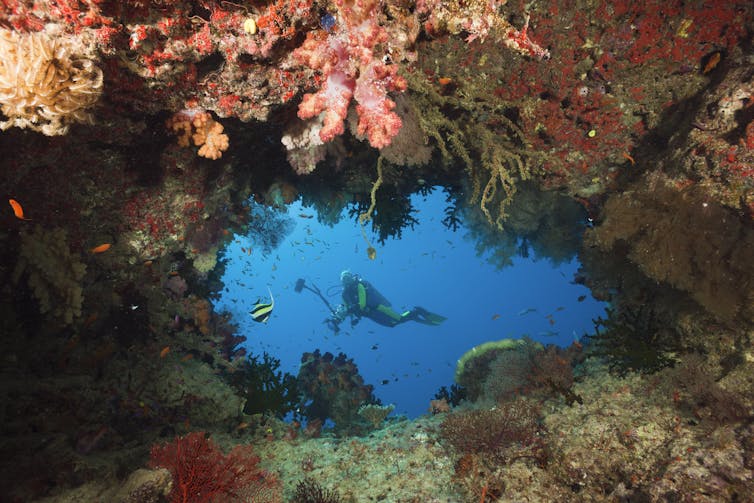
MPAs Can Generate Billions From Ecotourism
In addition to economic benefits to fisheries, MPAs that are accessible to the public, and which harbour biologically diverse habitats, can generate millions to billions of dollars in tourism revenue per year.
This revenue is generated not only from entrance fees and MPA-associated businesses that may develop, but also from providing jobs and therefore improving the local economy and living standards, while contributing significantly to national GDP.
The largest benefits to fisheries and biodiversity, and lowest costs in management, come from the designation of MPAs from which no marine wildlife can be killed or removed.
This principle has been termed Ballantine’s Law after the late New Zealand marine biologist Bill Ballantine, known as the “father of marine reserves”.
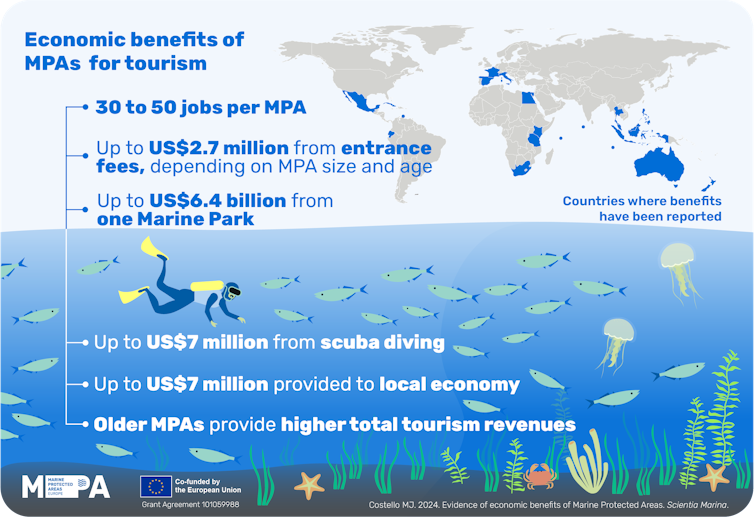
Back in the 1970s, Ballantine championed what was then a radical idea – that MPAs should be entirely no-take, permanent areas called marine reserves. This led to the establishment of New Zealand’s first marine reserve.
I have worked with Ballantine and one of our earlier studies found three-quarters of coastal countries didn’t have even one marine reserve. Today, less than 3% of the global ocean is under some form of protection.
Considering the proven benefits and popularity of MPAs, this is a missed opportunity for these countries’ economies and public engagement with nature. Once people witness the benefits of a fully protected area they are likely to want more.
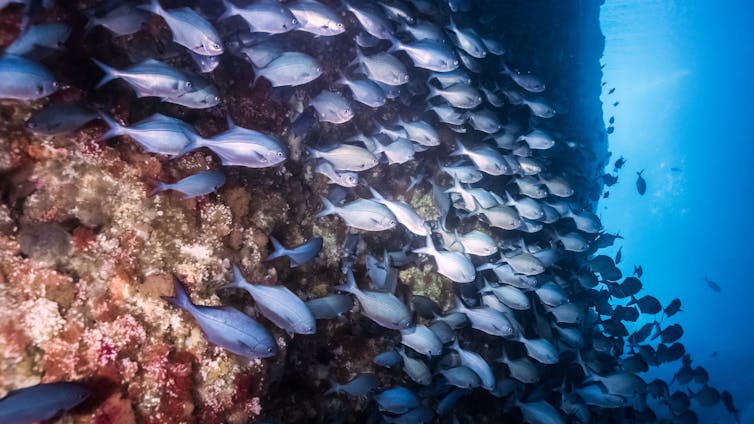
The fishing industry and fishing communities have much to gain from MPAs. But outdated misconceptions perpetuated in the scientific literature create barriers to their implementation.
A recent global analysis has prioritised where to locate MPAs to meet the pledge to fully protect at least 30% of ocean habitats by 2030. This goal is supported by the Convention on Biological Diversity, UN Convention on the Law of the Sea and the International Union for Conservation of Nature.
Fishery scientists and fishermen need to promote the placement of MPAs as a strategy to support biodiversity, including ecosystem-based management of fisheries. They should work with conservation scientists to realise the true capacity of MPAs for economic success.
Marine protected areas represent our best strategy to reverse declining biodiversity and fisheries, because business-as-usual for global fisheries is unsustainable.![]()
Mark John Costello, Professor, Faculty of Biosciences and Aquaculture, Nord University
This article is republished from The Conversation under a Creative Commons license. Read the original article.
Volunteers For Barrenjoey Lighthouse Tours Needed
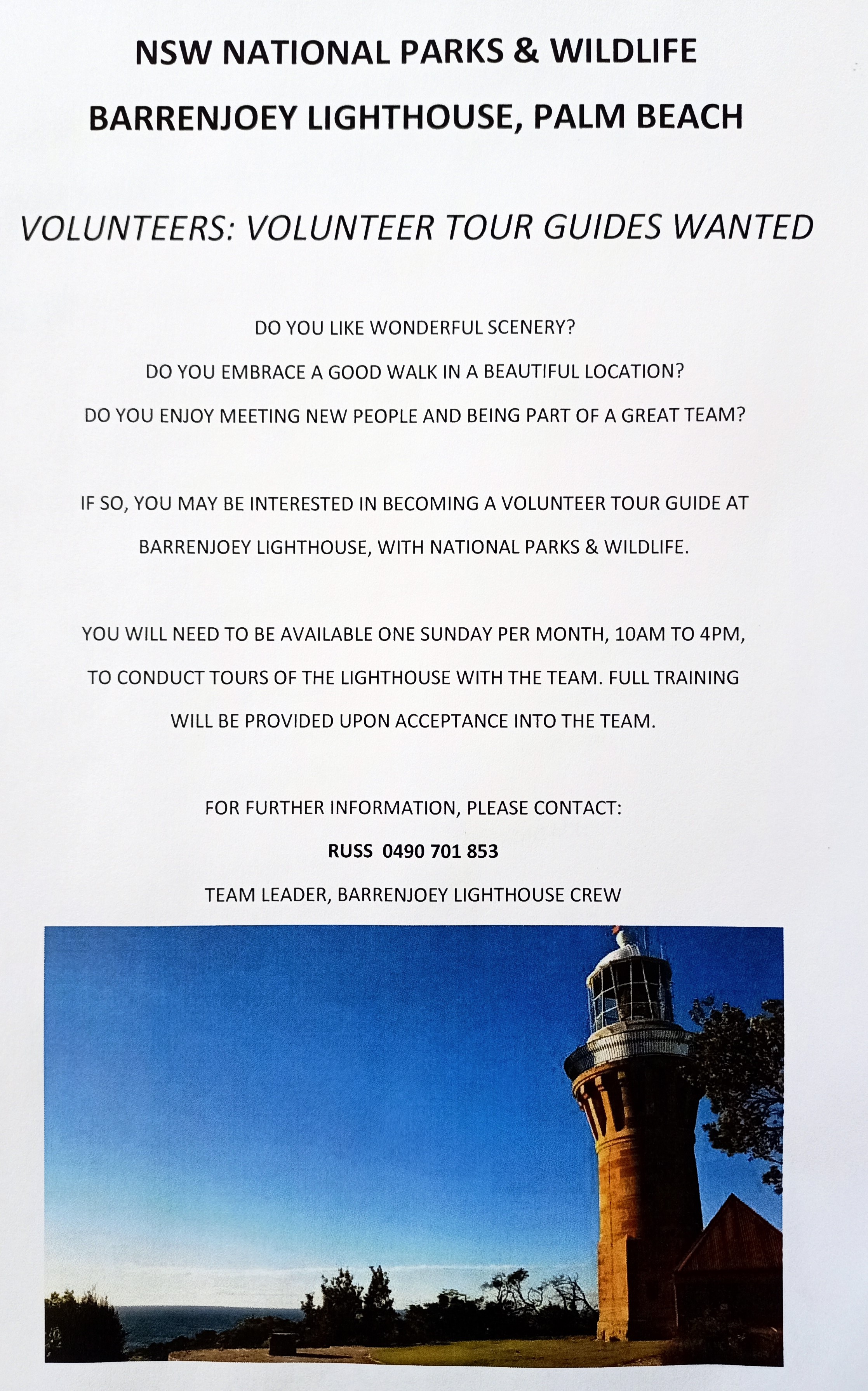
Living Ocean 'No Plastics Please' Beach Clean Up; South Avalon Beach
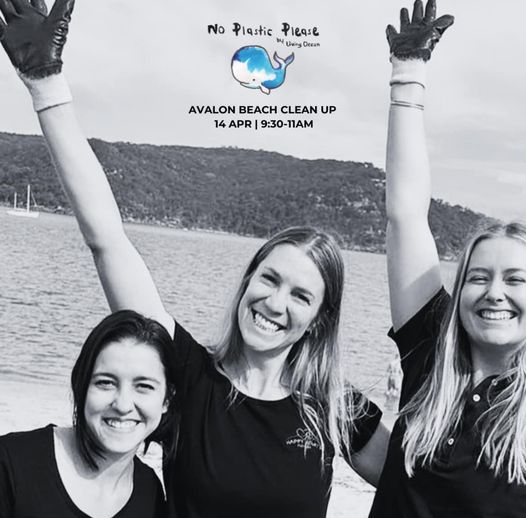
Harvest Seeds & Native Plants: Education Sessions 2024 - "The Harvest Huddle"
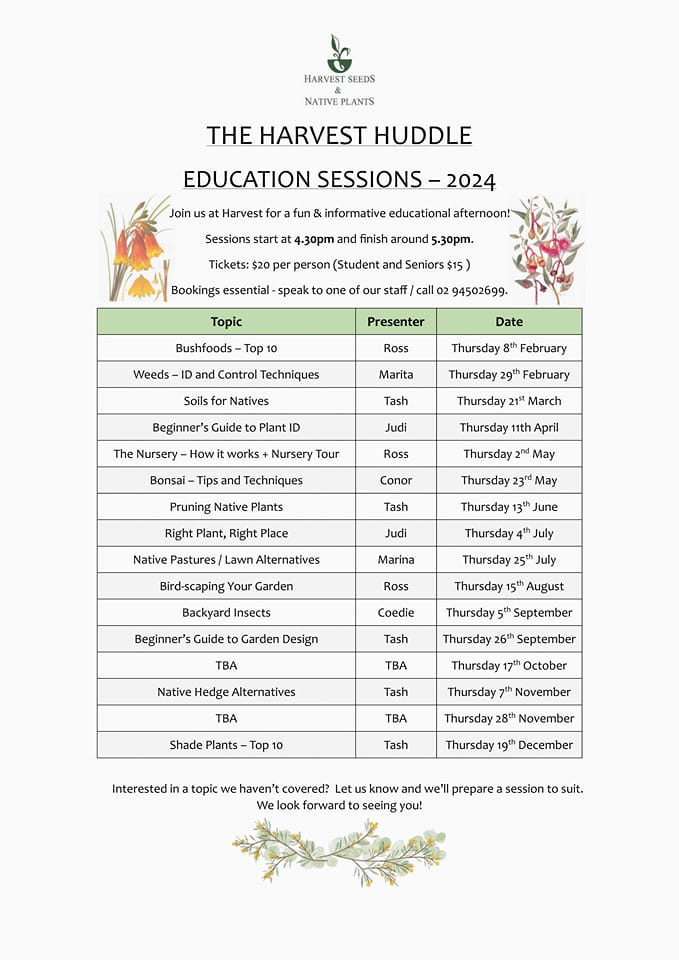
Stony Range Nursery
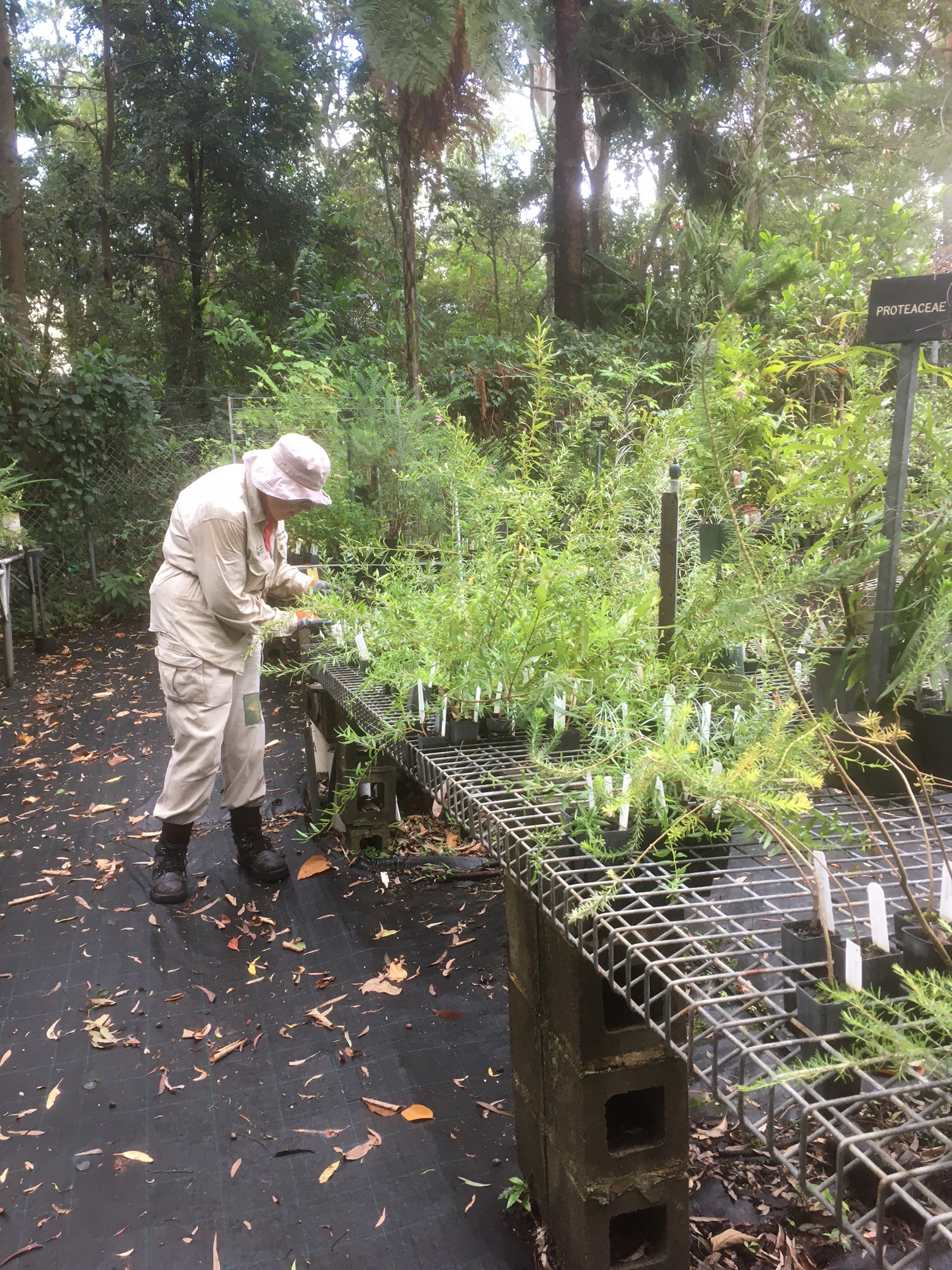
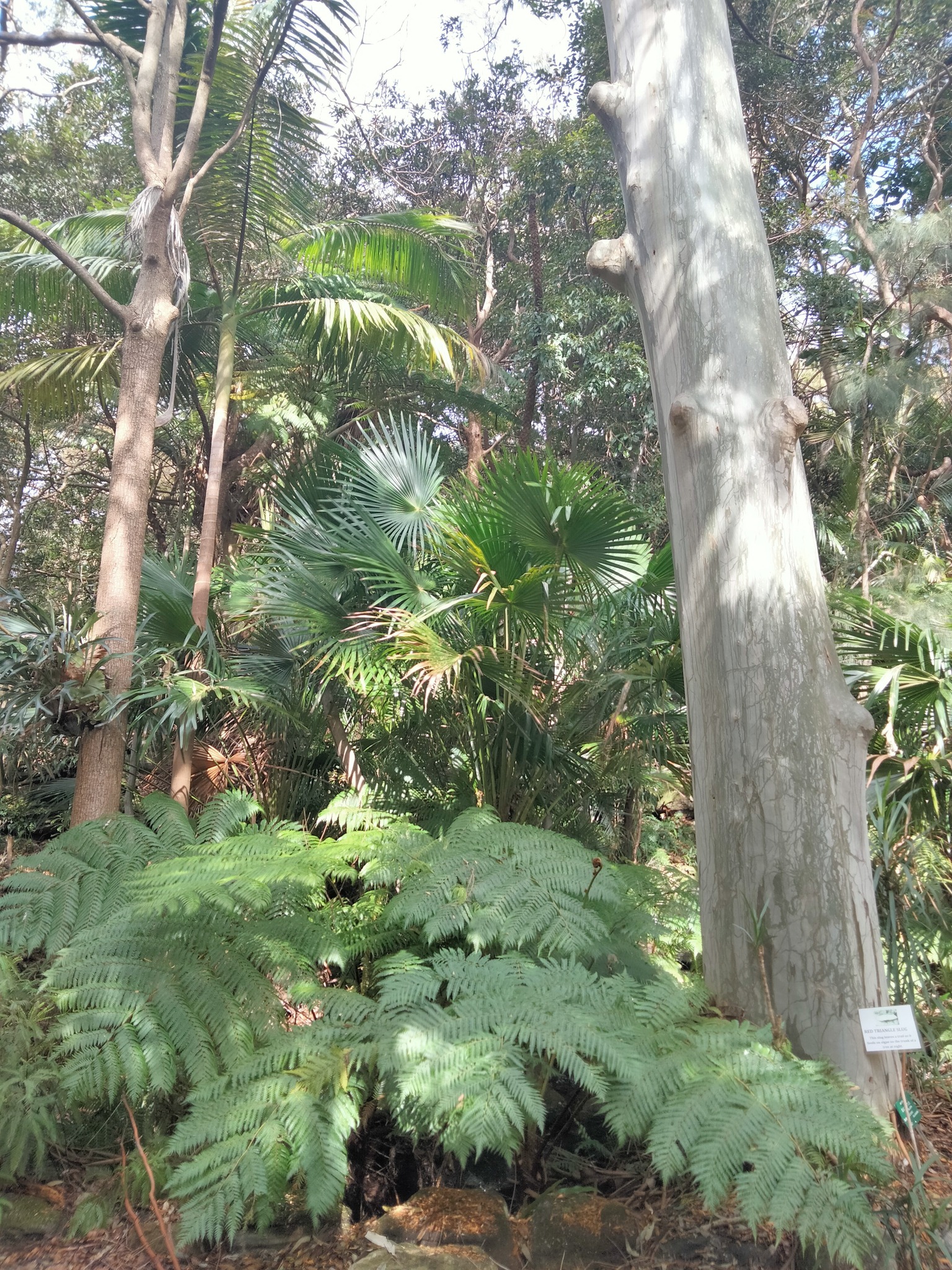
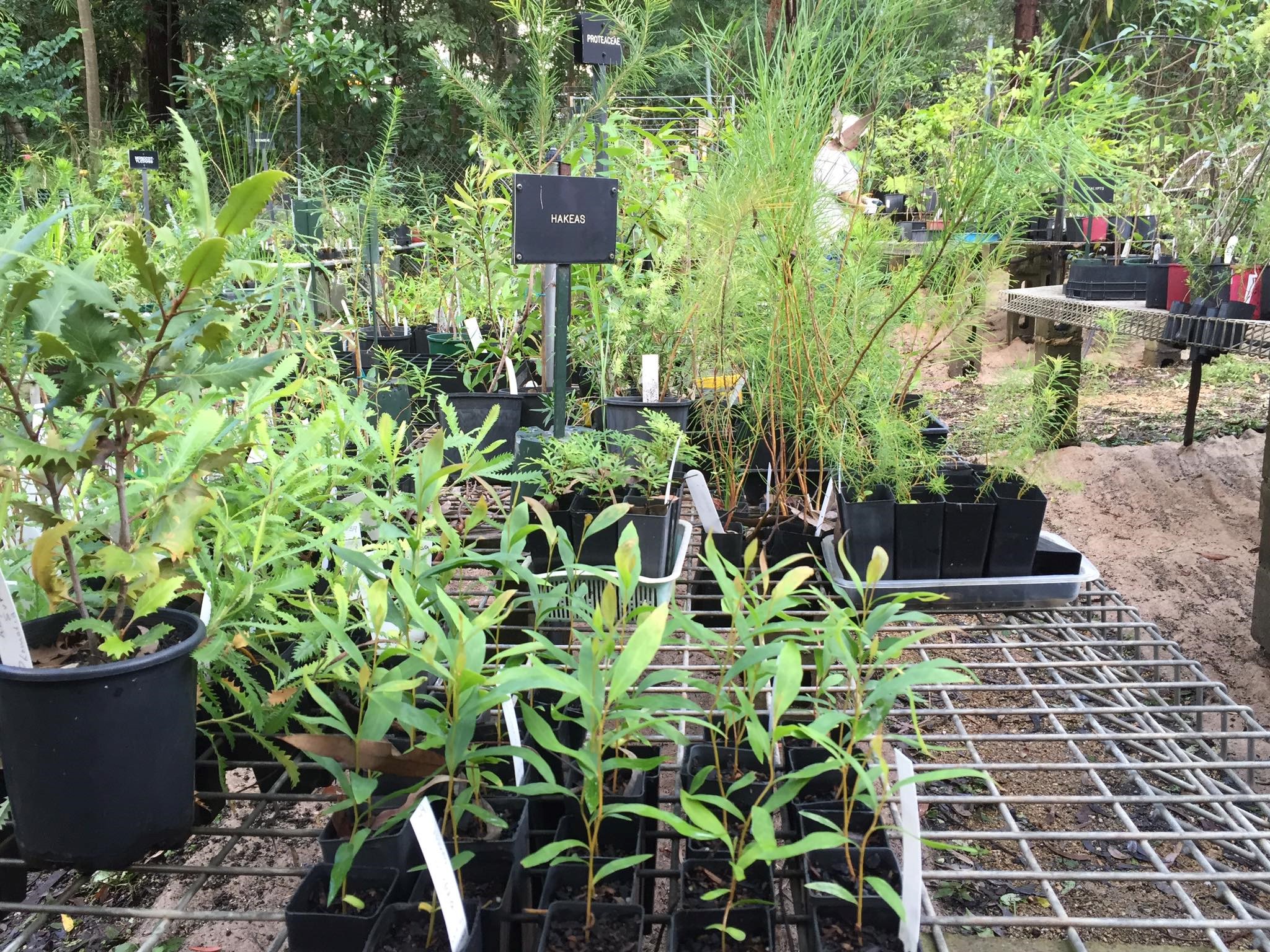
Stay Safe From Mosquitoes
- Applying repellent to exposed skin. Use repellents that contain DEET, picaridin, or oil of lemon eucalyptus. Check the label for reapplication times.
- Re-applying repellent regularly, particularly after swimming. Be sure to apply sunscreen first and then apply repellent.
- Wearing light, loose-fitting long-sleeve shirts, long pants and covered footwear and socks.
- Avoiding going outdoors during peak mosquito times, especially at dawn and dusk.
- Using insecticide sprays, vapour dispensing units and mosquito coils to repel mosquitoes (mosquito coils should only be used outdoors in well-ventilated areas)
- Covering windows and doors with insect screens and checking there are no gaps.
- Removing items that may collect water such as old tyres and empty pots from around your home to reduce the places where mosquitoes can breed.
- Using repellents that are safe for children. Most skin repellents are safe for use on children aged three months and older. Always check the label for instructions. Protecting infants aged less than three months by using an infant carrier draped with mosquito netting, secured along the edges.
- While camping, use a tent that has fly screens to prevent mosquitoes entering or sleep under a mosquito net.
Mountain Bike Incidents On Public Land: Survey
- Mountain Bike Incidents On Public Land: Survey Launched To Gather Data On What's Happening To Public Parks - Community Land - Bush Reserves In Pittwater
- Mother Brushtail Killed On Barrenjoey Road: Baby Cried All Night - Powerful Owl Struck At Same Time At Careel Bay During Owlet Fledgling Season: calls for mitigation measures - The List of 'What You can Do' as requested
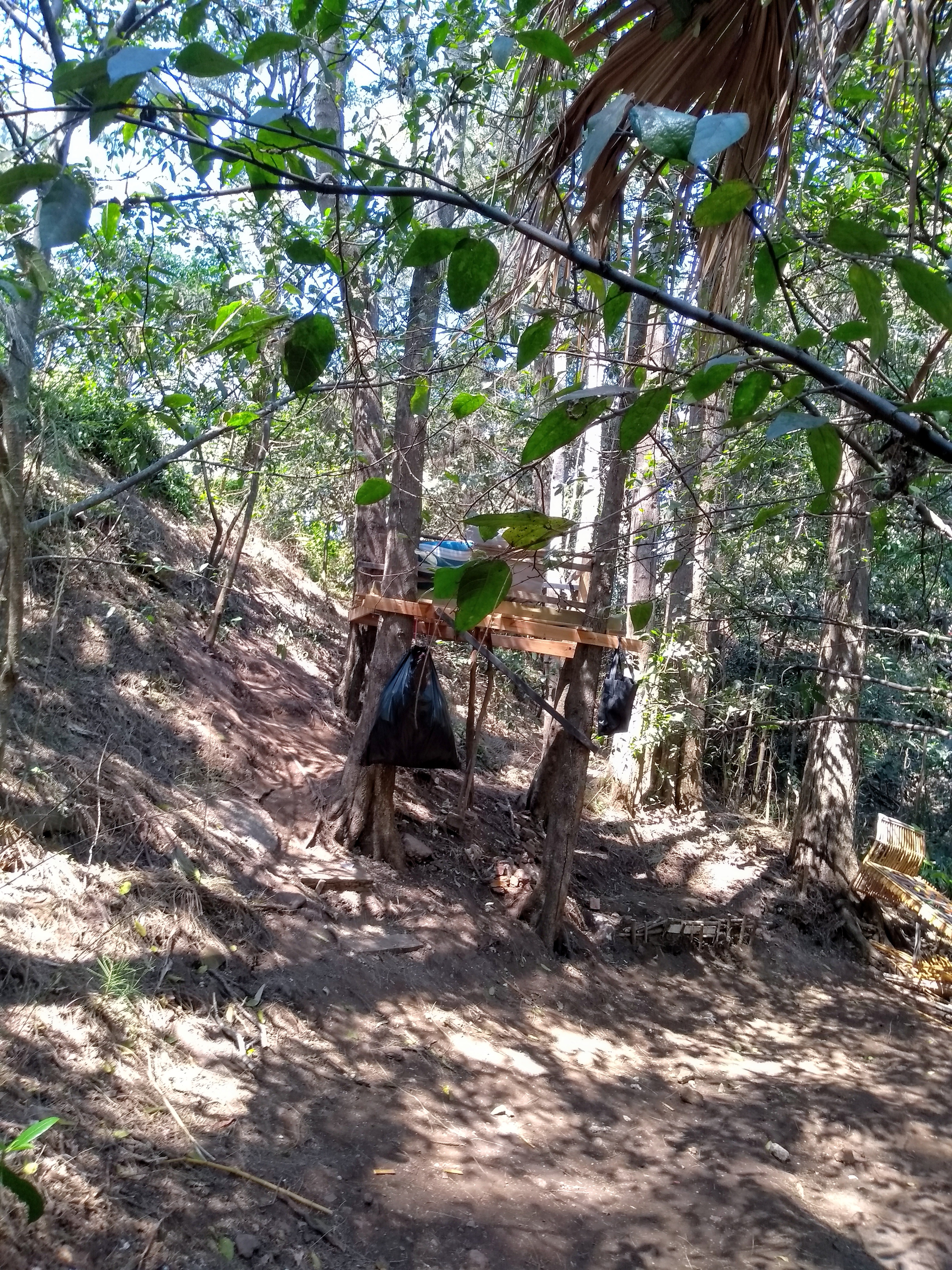
Please Look Out For Wildlife During Heatwave Events

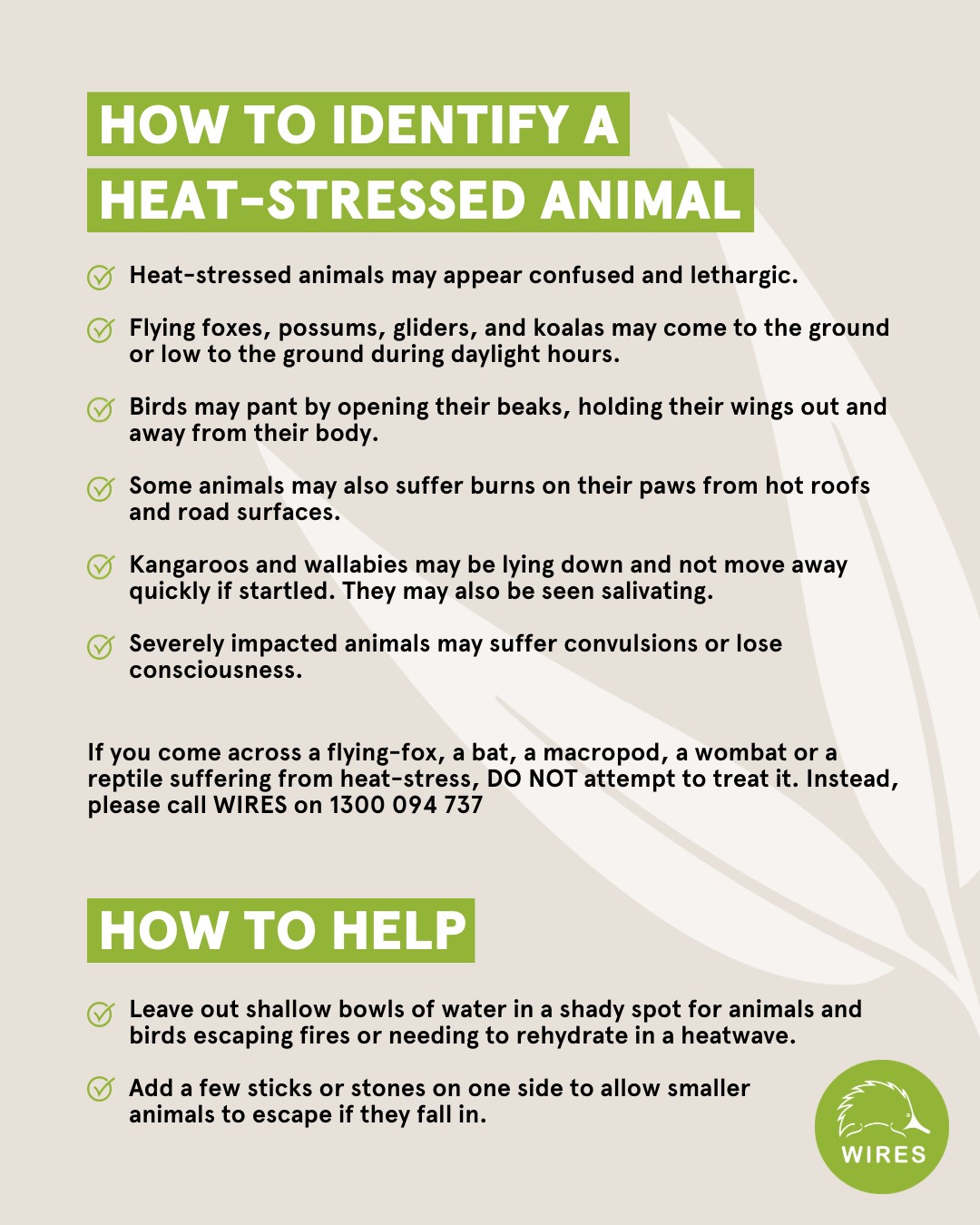
Palmgrove Park Avalon: New Bushcare Group
 Palmgrove Park Avalon is a remnant of the Spotted Gum forest that was once widespread on the lower slopes of the Pittwater peninsula. This bushland’s official name and forest type is Pittwater and Wagstaffe Endangered Ecological Community, endangered because so much has been cleared for suburban development. Canopy trees, smaller trees and shrubs, and ground layer plants make up this community. Though scattered remnant Spotted Gums remain on private land, there is little chance of seedlings surviving in gardens and lawns. More information HERE
Palmgrove Park Avalon is a remnant of the Spotted Gum forest that was once widespread on the lower slopes of the Pittwater peninsula. This bushland’s official name and forest type is Pittwater and Wagstaffe Endangered Ecological Community, endangered because so much has been cleared for suburban development. Canopy trees, smaller trees and shrubs, and ground layer plants make up this community. Though scattered remnant Spotted Gums remain on private land, there is little chance of seedlings surviving in gardens and lawns. More information HERE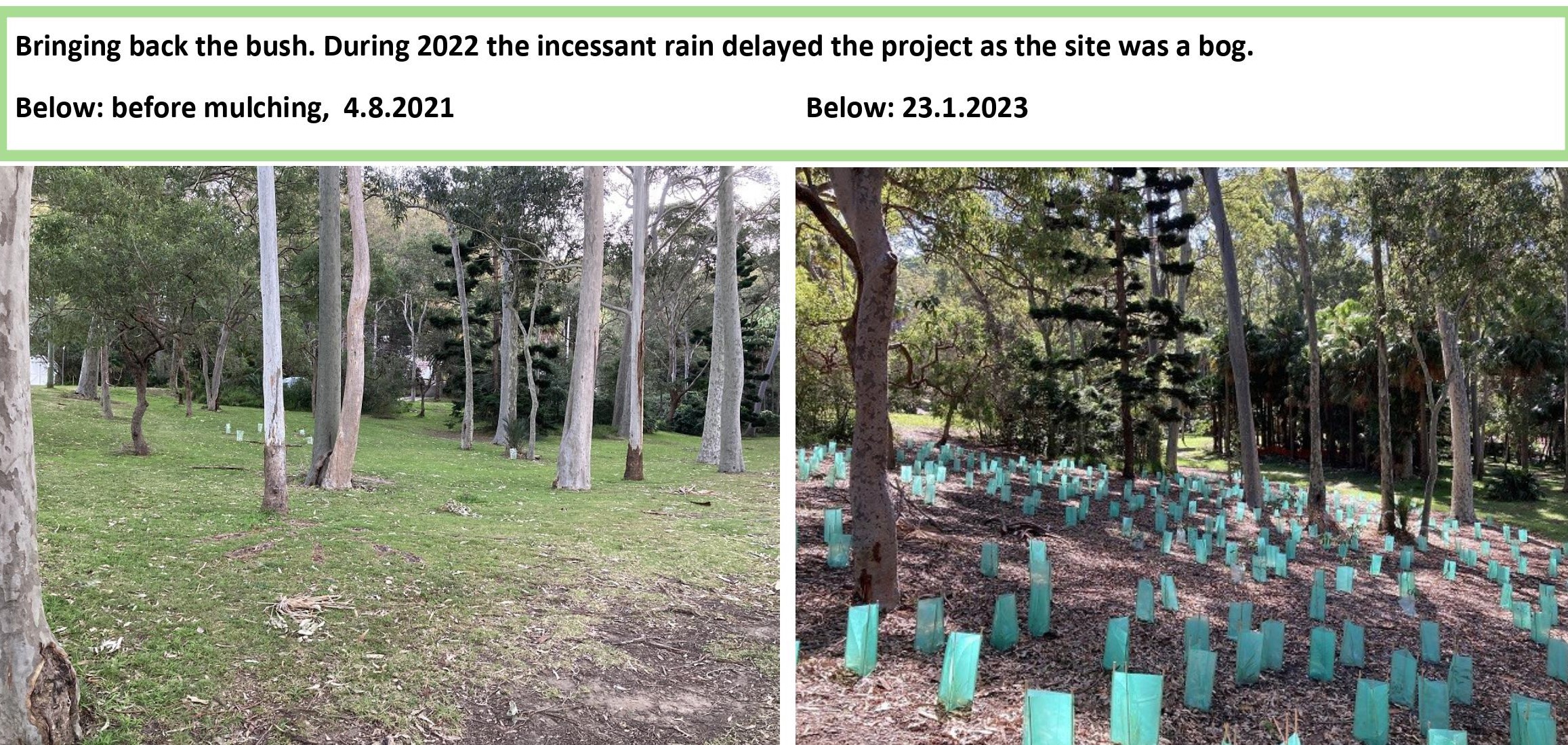
Report Fox Sightings
%20(1).jpg?timestamp=1675893929686)
Marine Wildlife Rescue Group On The Central Coast
A new wildlife group was launched on the Central Coast on Saturday, December 10, 2022.
Marine Wildlife Rescue Central Coast (MWRCC) had its official launch at The Entrance Boat Shed at 10am.
The group comprises current and former members of ASTR, ORRCA, Sea Shepherd, Greenpeace, WIRES and Wildlife ARC, as well as vets, academics, and people from all walks of life.
Well known marine wildlife advocate and activist Cathy Gilmore is spearheading the organisation.
“We believe that it is time the Central Coast looked after its own marine wildlife, and not be under the control or directed by groups that aren’t based locally,” Gilmore said.
“We have the local knowledge and are set up to respond and help injured animals more quickly.
“This also means that donations and money fundraised will go directly into helping our local marine creatures, and not get tied up elsewhere in the state.”
The organisation plans to have rehabilitation facilities and rescue kits placed in strategic locations around the region.
MWRCC will also be in touch with Indigenous groups to learn the traditional importance of the local marine environment and its inhabitants.
“We want to work with these groups and share knowledge between us,” Gilmore said.
“This is an opportunity to help save and protect our local marine wildlife, so if you have passion and commitment, then you are more than welcome to join us.”
Marine Wildlife Rescue Central Coast has a Facebook page where you may contact members. Visit: https://www.facebook.com/profile.php?id=100076317431064
- Ph: 0478 439 965
- Email: marinewildlifecc@gmail.com
- Instagram: marinewildliferescuecc

Watch Out - Shorebirds About
.JPG.opt1460x973o0,0s1460x973.jpg?timestamp=1663629195339)
Possums In Your Roof?: Do The Right Thing

Aviaries + Possum Release Sites Needed

Bushcare In Pittwater: Where + When
Where we work Which day What time
Avalon
Angophora Reserve 3rd Sunday 8:30 - 11:30am
Avalon Dunes 1st Sunday 8:30 - 11:30am
Avalon Golf Course 2nd Wednesday 3 - 5:30pm
Careel Creek 4th Saturday 8:30 - 11:30am
Toongari Reserve 3rd Saturday 9 - 12noon (8 - 11am in summer)
Bangalley Headland 2nd Sunday 9 to 12noon
Bayview
Winnererremy Bay 4th Sunday 9 to 12noon
Bilgola
North Bilgola Beach 3rd Monday 9 - 12noon
Algona Reserve 1st Saturday 9 - 12noon
Plateau Park 1st Friday 8:30 - 11:30am
Church Point
Browns Bay Reserve 1st Tuesday 9 - 12noon
McCarrs Creek Reserve Contact Bushcare Officer To be confirmed
Clareville
Old Wharf Reserve 3rd Saturday 8 - 11am
Elanora
Kundibah Reserve 4th Sunday 8:30 - 11:30am
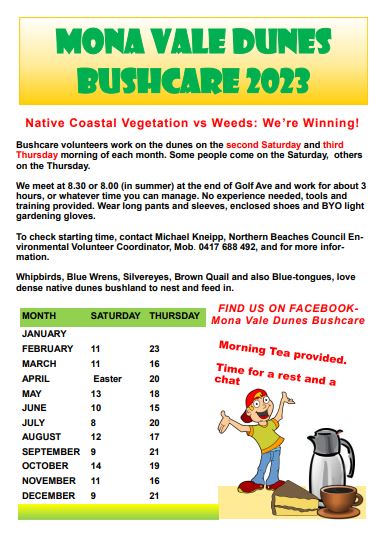 Mona Vale
Mona Vale Mona Vale Beach Basin 1st Saturday 8 - 11am
Mona Vale Dunes 2nd Saturday +3rd Thursday 8:30 - 11:30am
Newport
Bungan Beach 4th Sunday 9 - 12noon
Crescent Reserve 3rd Sunday 9 - 12noon
North Newport Beach 4th Saturday 8:30 - 11:30am
Porter Reserve 2nd Saturday 8 - 11am
North Narrabeen
Irrawong Reserve 2nd Saturday 2 - 5pm
Palm Beach
North Palm Beach Dunes 3rd Saturday 9 - 12noon
Scotland Island
Catherine Park 2nd Sunday 10 - 12:30pm
Elizabeth Park 1st Saturday 9 - 12noon
Pathilda Reserve 3rd Saturday 9 - 12noon
Warriewood
Warriewood Wetlands 1st Sunday 8:30 - 11:30am
Whale Beach
Norma Park 1st Friday 9 - 12noon
Western Foreshores
Coopers Point, Elvina Bay 2nd Sunday 10 - 1pm
Rocky Point, Elvina Bay 1st Monday 9 - 12noon
Friends Of Narrabeen Lagoon Catchment Activities

Gardens And Environment Groups And Organisations In Pittwater
- Ringtail Posse: 1 – February 2023; Anna Maria Monticelli: King Parrots/Water Dragons - Jacqui Scruby: Loggerhead Turtle - Lyn Millett OAM: Flying-Foxes - Kevin Murray: Our Backyard Frogs - Miranda Korzy: Brushtail Possums
- Ringtail Posse: 2 - March 2023; Kevin Murray: Tawny Frogmouth - Kayleigh Greig: Red-Bellied Black Snake - Bec Woods: Australian Water Dragon - Margaret Woods: Owlet-Nightjar - Hilary Green: Butcher Bird - Susan Sorensen: Wallaby
- Ringtail Posse 3 - April 2023: Jeffrey Quinn: Kookaburra, Tom Borg McGee: Kookaburra, Stephanie Galloway-Brown: Bandicoot, Joe Mills: Noisy Miner
- Ringtail Posse 4 May 2023 - Andrew Gregory: Powerful Owl, Marita Macrae: Pale-Lipped Or Gully Shadeskink, Jools Farrell: Whales & Seals, Nicole Romain: Yellow-Tailed Black Cockatoo
- Ringtail Posse 5: June 2023 - Lynleigh Greig OAM: Snakes, Dick Clarke: Diamond Python, Selena Griffith: Glossy Black-Cockatoo, Eric Gumley: Bandicoot
- Ringtail Posse 6: July 2023 - Sonja Elwood: Long-Nosed Bandicoot, Dr. Conny Harris: Swamp Wallaby, Neil Evers: Bandicoot, Bill Goddard: Bandicoot
- Ringtail Posse 7: August 2023 - Geoff Searl OAM: Tawny Frogmouth, Peter Macinnis: Echidna, Peter Carter: Ringtail Possum, Nathan Wellings; Kookaburra
- Ringtail Posse 8: September 2023 - Saving Sydney's Last Koalas; Logging Now Stopped In Future Koala Park By Minns Government - ''Is There Time To Save Sydney's Last Koalas Too?'' Asks: John Illingsworth, WIRES, Sydney Wildlife Rescue, Save Sydney Koalas, The Sydney Basin Koala Network, The Help Save The Wildlife & Bushlands In Campbelltown Group, Appin Koalas Animal Rescue Service, Patricia and Barry Durham, Sue Gay, Save Mt. Gilead, Paola Torti Of The International Koala Intervention Group
- Ringtail Posse 9: October 2023 - David Palmer OAM: Bandicoots, Helen Pearce: Brushtail Possum, Amina Kitching: Goanna, David Goudie: Ringtails Possums + Bandicoots + Owls
- Mother Brushtail Killed On Barrenjoey Road: Baby Cried All Night - Powerful Owl Struck At Same Time At Careel Bay During Owlet Fledgling Season: calls for mitigation measures - The List of what you can do for those who ask 'What You I Do' as requested
- Ringtail Posse 10: November 2023 - Stop Wildlife Roadkill Group: You Can Help By Using The Wildlife Incident Mapping Website
Coastal Floodplain Drainage Project: Have Your Say
- addressing the complexity, time and costs associated with the approvals process
- reducing the impact of these works and activities on downstream water quality, aquatic ecosystems, communities and industries.
- Option 1: One-stop shop webpage - A single source of information on the various approvals that may be required by government agencies for coastal floodplain drainage works.
- Option 2: Drainage applications coordinator - A central officer(s) to guide the applicant through the approvals processes for all NSW government agencies (Department of Planning and Environment’s Water Group, Planning, Crown Lands, and the Department of Primary Industries — Fisheries) and answer the applicant’s questions about their individual location and proposed works. The drainage applications coordinator would complement both Option 1 and Option 3.
- Option 3: Concurrent assessment - Concurrent assessment of applications by relevant government agencies.
- Option 4: Risk-based approach - NSW Government agencies would use a standardised risk matrix to compare the type and extent of the drainage works against the acidic water and blackwater potential of the drainage area to identify the level of risk associated with the proposed works. The identified level of risk could then be used to determine the level of information required from applicants, the level of assessment required by the approval authority, and the types of conditions applied to any approvals.
- Option 5: Drainage work approvals under the Water Management Act 2000 - Switch on drainage work approvals under the Water Management Act 2000. Two different methods of implementation are possible:
i. a drainage work approval would be required only when works are proposed and for the area of works onlyii. a drainage work approval could apply to existing and new drainage works across the entire drainage network.
Within either of these two methods, one of three different approaches for public authorities could be applied:
a. require public authorities to hold a drainage work approvalb. allow for public authorities to hold a conditional exemption from requiring approvalsc. exempt public authorities from requiring a drainage work approval.
- Option 6: Streamlining of Fisheries and Crown Land approvals through the use of drainage work approvals - Drainage work approvals, particularly under Option 5(ii), have the potential to deliver a catchment-wide consideration of the drainage network. This would provide greater certainty to other agencies such as Fisheries and Crown Land that environmental impacts have been considered and appropriate conditions applied, supporting them to assess and issue approvals more quickly.
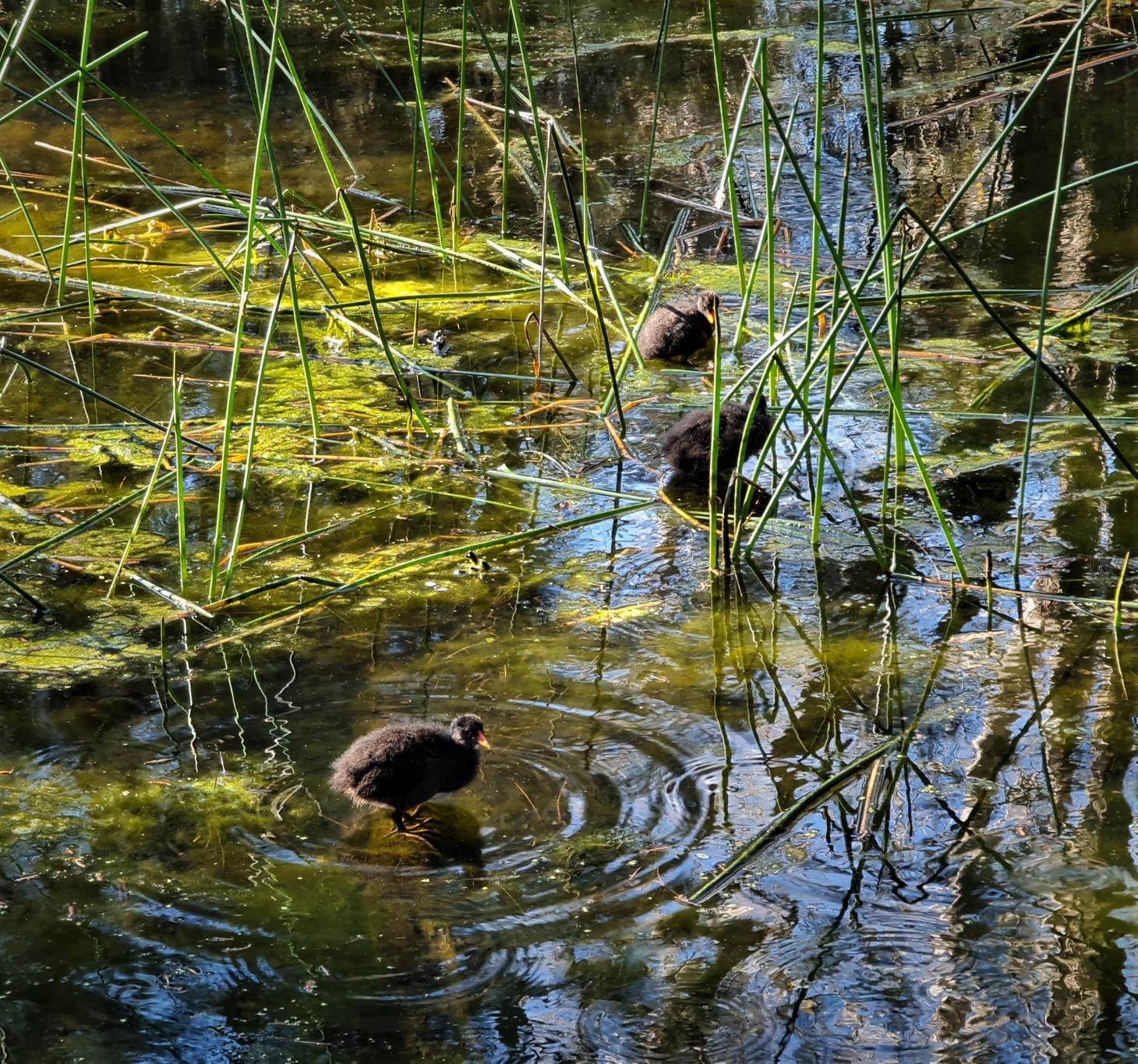
These extraordinary Australian islands are teeming with life – and we must protect them before it’s too late
Ian Cresswell, The University of Western Australia; Andrew J Constable, University of Tasmania, and Keith Reid, University of TasmaniaIn the Southern Ocean about 4,000 kilometres from Perth lies a truly extraordinary place. Known as the Heard Island and McDonald islands, they are among the most remote places on Earth: a haven for marine life amid the vast ocean, virtually undisturbed by human pressures.
But as our report released today reveals, this special place in Australia’s territory is at risk. In particular, climate change is warming the waters around the islands, threatening a host of marine life.
More than 20 years ago, a marine reserve was declared over the islands and parts of the surrounding waters. At the time, it was a significant step forward in environmental protection. But since then, science has progressed and the threats have worsened.
Our report reviewed these protections and found they are no longer adequate. The marine reserve surrounding the Heard and McDonald islands must urgently be expanded.
Spotlight On The Reserve System
The Heard and McDonald islands are just a tiny tip of the Kerguelen Plateau – a huge underwater mass rising high above the surrounding ocean basins.
The plateau intercepts the Antarctic Circumpolar Current, the strongest current system in the world. When the current hits the plateau, deep, nutrient-rich waters are pushed to the surface. This supports a food chain ranging from tiny plankton to fish, invertebrates, seabirds and marine mammals such as elephant seals and sperm whales.
On Heard Island, Mawson’s Peak is officially Australia’s highest mountain. It is 2,745 metres high and forms the summit of an active volcano known as Big Ben. Heard Island and McDonald Islands also host valuable fisheries for Patagonian toothfish and mackerel icefish.
The marine reserve around the islands was declared in 2002 and extended in 2014. It now covers 17% of what is known as the “exclusive economic zone” – the area of the sea in which a nation (in this case, Australia) has exclusive rights to resources such as fish and minerals.
The original reserve was primarily designed for waters shallower than 1,000m, because in 2002 little was known about the area’s deeper waters. A review of the reserve system is due this year.
Our report draws on more than 20 years’ of research conducted since the reserve was first declared. It highlights new scientific understanding of the region and the need to expand its protection.
Climate Pressures On The Plateau
Climate change poses wicked threats for the Heard and McDonald islands and surrounding marine environment.
We found the shelf area is becoming warmer. This potentially threatens species adapted to cold polar waters, such as the mackerel icefish. This species lives in shallow water and is an important food source for fur seals and other predators.
No other sub-antarctic shelf exists to the south of Heard Island, which means the region is a vital animal habitat. Maintaining the islands’ biodiversity in the face of climate change is best achieved by extending the existing marine reserve to cover more shallow waters, as well as protecting currently unprotected deeper waters.
Protecting Deep-Water Species
The Patagonian toothfish is a top predator species that connects different parts of the food web. Commercial fishing in the islands’ economic zone targets toothfish using “bottom longlines” which are weighted to the seafloor at depths down to 2,000m. The footprint of fishing operations has expanded over the past 30 years.
Our report suggests protecting spawning grounds of toothfish will reduce risks to this species and help ensure the fishery does not deplete fish stock.
Fishing is managed in such a way to eliminate the accidental catching (or by-catch) of seabirds. But there is still significant by-catch of a number of non-target fish species, especially skates.
Keeping fishing out of some areas can reduce pressure on vulnerable species. Important areas for achieving this are in the deeper waters to the southeast of Heard Island.
Sustaining Biodiversity Into The Future
Our analysis reveals an updated understanding of the marine ecosystems surrounding Heard and McDonald islands.
Scientists now know more about where marine mammals and birds forage – particularly in the important period when parents are feeding their young. We found some species that breed on Heard Island, including king penguins and fur seals, rely on areas not protected by the marine reserve during these times.
Our analysis also reveals a complex mosaic of productive habitats in shallow water, and less productive habitats in deeper water. This in turn affects the distribution of animal species.
Increased protection for the areas in the west, south, and southeast of the economic zone will be needed to protect animals in these habitats.
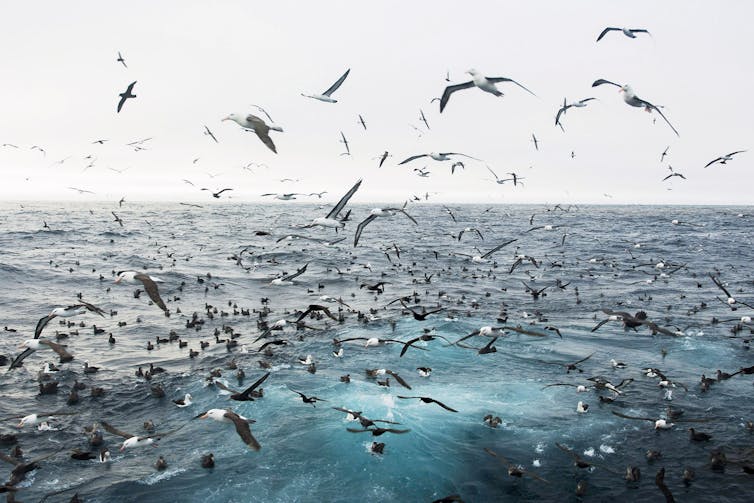
Looking Ahead
The current marine reserve covering Heard and McDonald islands is not sufficient. It should cover deeper water ecosystems and provide protection for foraging areas of resident seals, penguins and albatross.
Protecting spawning grounds of toothfish and areas important to cold-adapted species, such as mackerel icefish, will help ensure these species have the best chance against continuing warming of the ocean.
Extending the protections would help Australia meet its domestic policy and international agreements. For example, the federal government has committed to protecting at least 30% of ocean ecosystems by 2030.
It would also ensure our marine protected areas are nationally representative – a key national objective Australia has committed to.
By extending adequate protection of Heard and McDonald islands, Australia has the chance to show global leadership in conserving this precious natural asset in the Southern Ocean.![]()
Ian Cresswell, Adjunct professor, The University of Western Australia; Andrew J Constable, Adviser, Antarctica and Marine Systems, Science & Policy, University of Tasmania, and Keith Reid, Honorary Research Associate, Institute for Marine and Antarctic Studies, University of Tasmania
This article is republished from The Conversation under a Creative Commons license. Read the original article.
Coastal dunes are retreating as sea levels rise - our research reveals the accelerating rate of change
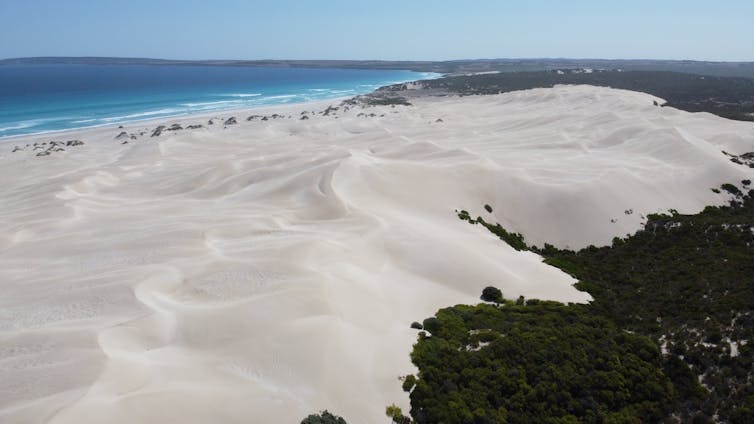
In some parts of Australia, coastal dunes are retreating from the ocean at an alarming rate, as waves carve up the beach and wind blows the sand inland. But coastal communities are largely oblivious to the changes.
Our new research documents the retreat, revealing an accelerating rate of change along Australia’s longest coastal dunefield, in South Australia. These beaches are being reshaped in the geological blink of an eye.
Wave action is eroding the shoreline and the wind is carrying the sand further inland, where new dunes are being formed. Climate change may be accelerating the rate of change by increasing ocean wind speeds and wave heights.
This provides yet another reason to reduce emissions and limit global warming – before our beaches and dunes disappear before our very eyes.
Australia’s Longest Stretch Of Coastal Dunes
Our South Australian study site, the Younghusband Peninsula, is the longest coastal dune system in Australia. It extends some 190km from the Murray River mouth at Goolwa to Kingston in the state’s southeast.
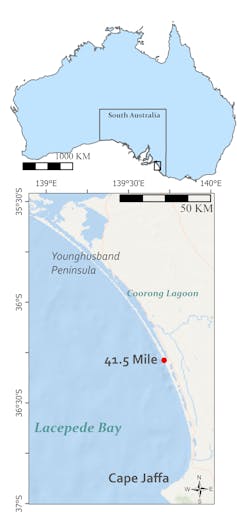
The shoreline of the central region of the peninsula, near 42 Mile Crossing in the Coorong National Park, started eroding in the early 1980s.
Our new research has found the shoreline has eroded about 100 metres since that time, at an average rate of 1.9m per year. Recently this has become much faster and is now up to 3.3 metres a year. That’s equivalent to losing a tennis court from the front of your house every seven years.
Meanwhile, the dunes are marching inland at an incredible rate of 10 metres a year.
This is an extraordinary rate of change. If the shoreline erosion trend continues, it will dramatically change the national park dune system.
Dune sands may also invade the iconic Coorong Lagoon, impacting the Ramsar-listed wetland of international significance. Sand could slowly fill the lagoon, transforming the environment and reducing the habitat available for fish, waterbirds and other wildlife.
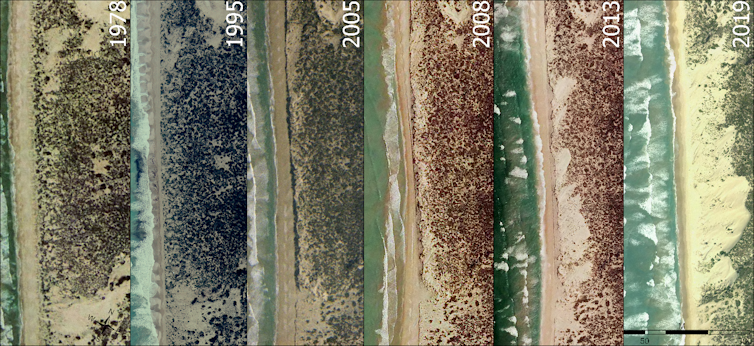
Our research also examined how the shoreline has changed over the past 80 years, using aerial photography and satellite imagery, and when the dunes on the Younghusband Peninsula formed, using various dating methods, historical aerial photography from 1945, and satellite imagery. We found they are forming at a very rapid rate.
This new field of coastal dunes developed in just over a decade. The landward edge of the dunefield has moved inland more than 100 metres in eight years.
Three factors may be causing the shoreline erosion and subsequent dune evolution. Offshore reefs that would have protected the coastline have been breaking down. Sea level has been slowly rising since 1920, so higher waves may be reaching the shore. And wave energy has been increasing in the Southern Ocean in the past ten years.
Shaping Coastal Dunes
Large dune systems are formed by sediment transported by waves from the ocean and the surfzone (where waves break). Once waves deposit the sand on the beach, the wind transports it landwards, creating dunes.
Where large amounts of sediment are delivered to a beach and blown inland, “transgressive” dunes may form. We also examined what drives the development of a transgressive dunefield.
Our research shows there are various factors involved, including:
- high sediment supply from the nearshore and beach system
- rising sea level acting as a marine bulldozer that pushes sediments shorewards
- wave scarping (creating steep, precipitous sand cliffs that are then prone to collapse) followed by wind erosion of dunes at the back of the beach
- climate change resulting in lower rainfall, stronger winds, and a lowering of the water table, which all affect plant growth.
The Eroded Area Is Expanding North And South
Our continuing observations and fieldwork show beach erosion and scarping now extends for several kilometres northwest and southeast of the area near 42 Mile Crossing.
Underlying older dunes are being cannibalised by the wind. As the scarp slope retreats, it supplies sediment that continues building up the dunes and transporting sand landwards across the older dunefield.

Drone footage shows how wave erosion of the shoreline combined with wind-driven erosion can trigger the creation of a transgressive dunefield.
Our research shows many of the standard assumptions about the development rates and timescales of dunefield evolution may be wrong. If erosion at this site continues to extend north and south, massive changes to the dunefield system, coastal habitats and possibly the Coorong Lagoon may occur.
Such shoreline erosion and dunefield changes suggest what may happen in future to many Australian beach and dune systems as sea levels continue to rise with climate change.![]()
Patrick Hesp, Professor, Flinders University and Marcio D. DaSilva, , Flinders University
This article is republished from The Conversation under a Creative Commons license. Read the original article.
Australia must wean itself from monster utes – and the federal government’s weakening of vehicle emissions rules won’t help one bit
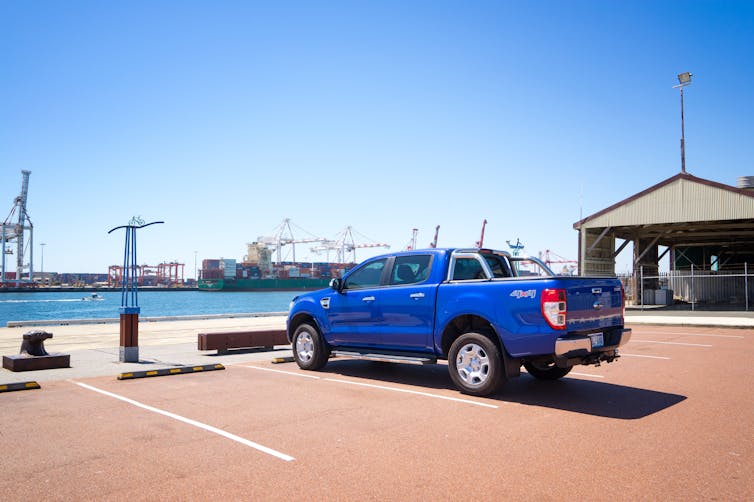
The federal government has bowed to pressure from the car industry, announcing it will relax proposed emissions rules for utes and vans and delay enforcement of the new standards by six months.
The legislation was introduced to parliament on Wednesday. The government says the new rules give Australian motorists a greater choice of electric vehicle models and insists the policy is “good for the environment”.
But on the latter point, the government is mistaken. The amended rules will slow the reduction in emissions from Australia’s polluting road transport sector. And they reflect domestic and international trends that, taken together, increase the risk Australia, and the world, will fail to achieve net-zero emissions by 2050.
What Are The Changes?
Vehicle emissions standards set a limit on grams of CO₂ that can be emitted for each kilometre driven, averaged across all new cars sold. Carmakers failing to meet the standards will incur financial penalties.
The federal government released its initial version of proposed vehicle emissions standards in February.
Under the changes announced this week, some 4WD wagons – such as the Toyota LandCruiser and Nissan Patrol – will be reclassified from “passenger car” to “light commercial vehicle”. The change means less stringent emissions standards will apply to those models.
In a statement, the government justified the change by saying some off-road wagons have a similar chassis and towing capacity to vehicles in the light-commercial category, and so should be subject to the same standards.
The government will also give more favourable treatment to heavier vehicles. And manufacturers will not be penalised under the scheme until July 2025 – six months later than the government originally proposed.
The Global Picture
The government’s decision to weaken the standards is a response to pressure from the domestic vehicle industry, and a concession to the Opposition which falsely claims the new standards are a “ute tax”.
But the watering-down also reflects a broader international trend in which the legacy vehicle industry is backing away from its earlier commitments to a rapid transition to electric vehicles.
For example, in the United States Ford and GM have both cut back production of some models, reportedly due to lower-than-expected consumer demand.
Also in the US, carmakers this month secured a relaxation of the Biden administration’s fuel efficiency targets for new vehicle sales.
US politicians are also pushing for increased tariff protection from imports, already taxed at 27.5%. This would make US producers even more competitive against big Chinese electric vehicle brands such as BYD.
Toyota, the world’s largest car maker, has gone all-in on hybrid electric vehicles, beginning with the highly successful Prius. But as the global market has shifted to fully electric cars, Toyota has fought against further tightening of standards.

Pressures In Australia
Australia no longer has a domestic car manufacturing industry. But global carmakers continue to exert powerful influence through the Federated Chamber of Automotive Industries, Australia’s peak industry body for manufacturers and importers of passenger and light-commercial vehicles. The chamber has consistently lobbied against effective climate action.
The government’s agreement to weaken standards also reflects the prevailing assumption, apparently shared by both major parties, that tradespeople comprise the majority of the “working class” voters for whom they are vying.
But it’s an out-of-date assumption. In the 1980s, the occupations fitting a broad interpretation this term (trades and technical workers, machinery operators and labourers) accounted for 40% of all employed workers, and a majority of full-time non-managerial workers.
But today, only 28% of workers fit this description. Workers with professional qualifications, such as teachers and nurses, outnumber trades and technical workers two to one. But their concerns are frequently dismissed by some politicians as those of a woke, inner-city minority.
Utes Are Changing
The shift from substance to symbol in regards to the working class is mirrored in the transformation of utes themselves.
Until relatively recently – and as the name implies – utes were utilitarian vehicles designed for the practical tasks of carrying a farming couple “to church on Sundays and the pigs to market on Mondays”. But over time, this has been replaced by various forms of cosplay.
Utes have been tricked out with sports bars and fancy wheels, metallic paint and so on. More recently, the traditional ute has been replaced by US-style pickups, typically sold in dual-cab configurations.
Most models of the market-leading Ford Ranger don’t even offer a single-cab version, though such versions are sold overseas.
These vehicles are massive, but many have far less carrying capacity than a traditional ute. For example, the Ram 1500 has a tub length of 1.7 metres, compared to about 2.4 metres for the tray of a standard single-cab ute.
Unless the growth in the size of passenger vehicles is stopped and reversed, Australia’s task of meeting our net-zero target will be even more difficult.
It’s unlikely the two big parties will act on this issue any time soon. But as climate change worsens, the need to wean ourselves from monster cars and internal-combustion engines will demand the attention of our political leaders.![]()
John Quiggin, Professor, School of Economics, The University of Queensland
This article is republished from The Conversation under a Creative Commons license. Read the original article.
Bigger And Better Solar Panel Recycling Centres Needed To Deal With PV Waste, Says Report
How climate change could affect the microbes that ferment grapes and give wine its specific flavours
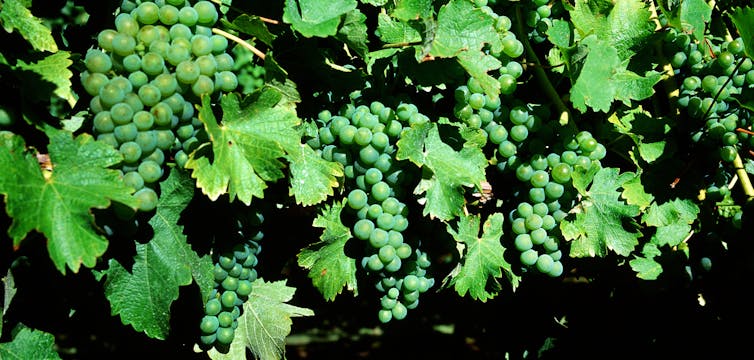
The far-reaching consequences of climate change inevitably include the production of foods and beverages, including wine.
In New Zealand, winemaking is an important business, with exports worth more than NZ$2 billion per year.
Earlier studies have already suggested that grapevine characteristics such as flowering and grape sugar ripeness may be linked to climatic changes. But so far, the microbes that ferment grapes have received little attention.
Our new research explores how yeasts, bacteria and fungi may be affected by changes in temperature and rainfall.
Microbes, Wine And The Coveted Gold Star
Without microbes, all we have is grape juice.
It is well established that individual strains of yeast (most commonly Saccharomyces cerevisiae) used to ferment grape juice into wine play a major role in the generation of a range of chemical compounds that influence the flavour, aroma and mouthfeel of wine. A “good” strain (or strains) can mean the difference between a gold award or a bottle of plonk.
Conventional commercial winemakers tend to use established strains from yeast suppliers to provide increased assurance for their production schedule and consistency of the final product. Nonetheless, inevitably every batch of juice will already possess its own diverse community of microorganisms, some of which will begin exerting their own influences upon the wine as it develops.

Some winemakers choose to eschew the addition of commercial yeast, relying on the native microflora in and on the grapes to do the job. This process can be referred to as either spontaneous or “wild” fermentation.
In such cases, the role and diversity of these microbes is critical in the development of the wine, and to its quality. Various studies have demonstrated that the microbial populations in a given winemaking region can be distinctive, contributing to the terroir of the wine.
But what if they change over time and in different climates?
Climatic Factors And Changing Microbes
In collaboration with Greystone Wines, an organic winemaker in North Canterbury, we had the opportunity to explore how microbial ecosystems (yeasts, bacteria and fungi) in organic winemaking changed between vintages.
We set out to test this by analysing must (grape juice sampled during fermentation). We also tested exposure of their Pinot Noir wines to wild microbes in their winery and vineyard during two different years of production, 2018 and 2021.
We then subjected these samples to a molecular genetic process called “metabarcoding”. In this process, universal gene markers found in every single known example of bacteria, fungi and yeast are used to describe the diversity and distribution of microbes in the samples taken at different times of the wine production.
The results were striking. Samples taken from the 2018 vintage contained certain organisms that seemed to be completely absent in the 2021 vintage – and vice versa.
We found significant differences between vintages, most striking for bacteria (with 12 of 16 organisms present in one vintage but not the other). For fungi and yeast species, we found six of a total of 12 organisms fluctuating between harvests.
What could cause these differences? We suggest changes in temperature and rainfall play an important role.
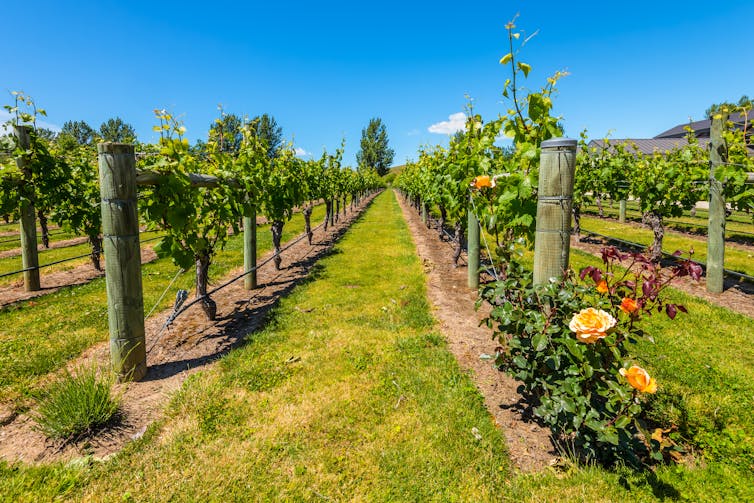
Using publicly available climate data on humidity, temperature and rainfall to model climatic differences we determined that especially temperature, but also humidity, may be important factors in influencing the composition of different populations of microbes. The average rainfall during each of the production periods was also very different.
Temperature and moisture are well established elements that influence microbial growth, but to observe such stark differences between populations was a surprise to us.
Implications Of Climatic And Microbial Diversity For Wines
Fermentative yeasts are the major agents converting grape fruit sugar into alcohol, the primary winemaking reaction. As mentioned above, they also help produce a range of other chemicals involved with the overall flavour and perception of the wine.
Different yeast strains will produce different compounds. Even at early stages of fermentation, certain yeasts may affect the overall quality of the wine. Most bacteria are not well adapted to the rather harsh environments of wine (ethanol is toxic, hence its use as a sanitiser); however several may proliferate, and some are known to spoil.
Like yeasts, any bacterium able to grow in grape juice (even for a short time) will secrete chemicals into the wine. Whether or not such chemicals are perceptible, favourable or undesirable to humans depends entirely on the individual chemical.
Some of the organisms observed are expected, with well-known adaptations to the wine environment. However, the dominance of a bacterium (Tatumella) previously found in winemaking regions abroad is especially striking in the 2021 vintage. Its role is unknown.
What does this mean for the New Zealand, and indeed international, wine industry? We don’t know yet whether the changes in microbial diversity affect the flavour profiles of these two vintages. However, it is prudent to say that changes in microbial populations in winemaking are associated with differences in climatic factors.
It is therefore important we understand the full extent of climate change impacts on winemaking to be better prepared to protect the industry.![]()
Stephen On, Professor of Microbiology, Lincoln University, New Zealand and Manpreet K Dhami, Senior Researcher, Manaaki Whenua - Landcare Research
This article is republished from The Conversation under a Creative Commons license. Read the original article.
Attaching seaweed spores to used scallop shells could restore UK’s coastal kelp forests
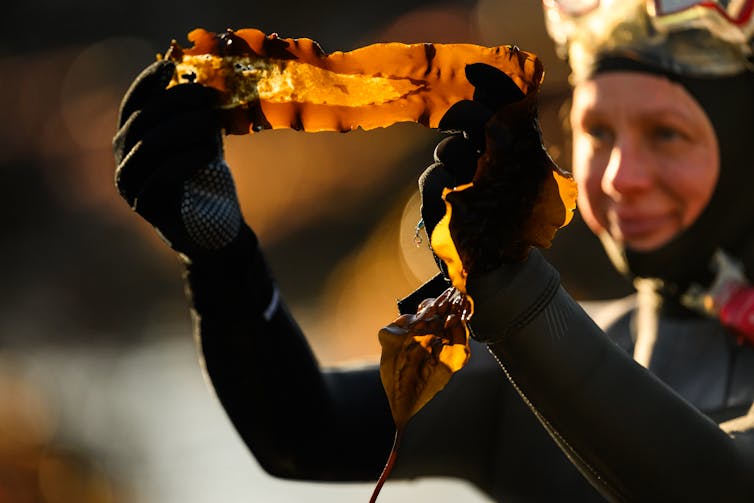
Kelp spores are being seeded and grown on small rocks and scallop shells – a seafood waste product – in efforts to regenerate the UK’s coastal kelp forests.
Unlike many other restoration techniques, this method is cheap and easy to carry out. There’s no need for expensive, labour-intensive dive teams to install kelp onto the seabed.
Once gravel or shells have been seeded with kelp in aquariums, teams can simply drop them over the side of a boat where they sink, allowing the kelp to attach to the seabed where it grows to maturity. This is as effective as hand-deployment by divers and far more economical.
Our team of marine scientists is working with the Fishmongers’ Company’s Charitable Trust and the Kelp Conservation Initiative to develop this “green gravel” approach. First pioneered in Norway, green gravel techniques have previously been tested on wave-exposed shores along the north-east coast of the UK.
Now, in the lab, we are trialling waste scallop shells from the seafood industry and different types of stone from around the UK, easily sourced from hardware stores, as the basis for growing four types of native kelp. Every year, more than 30,000 tonnes of shells go to landfill in the UK, at a cost to the industry. There’s huge potential to use shells as a restoration material at scale, either whole or crushed into smaller pieces.
From Tanks To Seabed Trials
We begin green gravel restoration by identifying a healthy wild population of kelp with adult plants that can be used as donors. Sections of frond filled with spores are cut out and bought back to the lab, then disinfected with a quick dip in iodine solution.
Gravel or scallop shells are cleaned and put into tanks of seawater. The fertile kelp material is dried out overnight then rehydrated to initiate the release of hundreds of millions of microscopic kelp spores. Once extracted, spores are added to tanks of seawater where they settle to seed the gravel or shells.
Spores develop quickly, so tiny kelp seedlings are visible as a brown fuzz within three to four weeks. We monitor growth for three months, then once the kelp plants reach 1cm long, the gravel or shells are taken by boat to test sites off the coasts of Newcastle, Cornwall and Devon. Once dropped over the side of the boat, the stones or shells quickly sink. Over time, the seaweed’s root-like “holdfast” grows to attach securely to the seabed beneath.
By monitoring the growth of these kelp habitats, ideally every few months for several years, we can measure the success of this restoration method. Our early results suggest that a wide variety of UK stone types will be suitable, although success is likely to vary due to local conditions at each site.
Why Restore Kelp Forests?
Found along almost a third of the world’s coastlines, kelp are marine algae that can form diverse ecosystems, like forests on land. People depend on the valuable goods and services they provide – from shelter for commercially valuable fish to carbon storage and coastal protection.
But these forests are threatened by warming oceans and marine heatwaves, pollution, poor water quality and overfishing. In many areas, kelp forests are shrinking or have been lost leading to calls for restoration action.
Seven kelp species, together with other brown seaweeds, cover an area of up to 20,000 km² along the UK’s rugged coastline. Local declines have been reported in certain areas, including west Sussex and county Durham.
UK kelp forests are not exempt from the impacts of climate change and human activities. Early warning signs include species range shifts, with cold-adapted kelp species declining in southern England, while warm-adapted species are expanding and taking take their place. These changes have knock-on effects in terms of how these ecosystems work, for example in the amount and quality of habitat that they provide for other species.
Restoration has been hailed as a tool to regenerate kelp forests in areas where they are shrinking or have been lost, with an array of techniques being developed around the world.
Almost 200 nations have pledged to protect 30% of the world’s oceans by 2030, while the kelp forest challenge – a global initiative run by the Kelp Forest Alliance – aims to protect 4 million hectares of kelp forest by 2040.
But the UK lags behind on the international marine restoration stage, having only recently made limited progress towards restoring seagrass meadows, saltmarshes, oyster reefs and kelp beds.
Our progress over the next three years will inform kelp restoration methods through the Green Gravel Action Group which recently identified international challenges and solutions to marine forest restoration. Our team is working out how best to adapt green gravel methods to specific locations and wave conditions in the UK.
If scalable and effective in different scenarios, this technique could provide a sustainable use for waste shells, reducing the volume sent to landfill each year nationally, while restoring crucial ocean habitats.

Don’t have time to read about climate change as much as you’d like?
Get a weekly roundup in your inbox instead. Every Wednesday, The Conversation’s environment editor writes Imagine, a short email that goes a little deeper into just one climate issue. Join the 30,000+ readers who’ve subscribed so far.![]()
Catherine Wilding, Senior Research Assistant, Marine Ecology, Marine Biological Association and Hannah Earp, Postdoctoral Research Associate, Marine Ecology, Newcastle University
This article is republished from The Conversation under a Creative Commons license. Read the original article.
Industry shutdowns are messy and painful: 4 lessons Australia’s coal sector can learn from car-makers about bowing out
Vigya Sharma, The University of Queensland and Julia Loginova, The University of QueenslandShifting Australia’s electricity sector to low-carbon technologies and closing coal plants is vital to tackling climate change. But such transitions are easier said than done.
People and economies are often deeply connected to the coal industry. Coal plants have often been integral to a community for decades, and closing them is a complex social process.
So how do we minimise the social and economic effects of such closures, and ensure communities and regions continue to thrive?
To answer this question, we looked to another sector that’s recently undergone large-scale shutdowns: Australia’s car-making industry. Our research highlights four lessons to help plan the end of the coal-fired power sector.
The Huge Loss Of The Car Industry
Australia’s coal plants are polluting, ageing and inefficient. Closing them sooner rather than later makes sense.
But the shift is challenging. First, renewable energy must be scaled up to cover the loss of coal-fired power. Second, poorly managed closures can lead to widespread social and economic disruption.
For guidance, we can look to closures in the Australian car industry in recent decades, mostly in South Australia and Victoria. The closures were due to economic and policy shifts which made the domestic industry untenable.
The last closure occurred in October 2017, when Holden shut down its Elizabeth plant after 70 years of operations. The move led to mass job losses. It also disrupted community and social cohesion, leading to family breakdowns and social and health issues among workers.
Lessons For Coal Plant Closures
Holden’s closure process was not perfect. Research showed three years after the Elizabeth plant closed, many workers remained financially vulnerable. And while workers were helped into new employment as quickly as possible, this often came at the expense of quality employment, and did not meet the demand for new skills to align with emerging industries.
The Holden experience nonetheless offers lessons for the coal-fired power industry.
Both industries are male-dominated and involve a high proportion of blue-collar workers with low levels of formal education and skills training. Plants are often located in communities dominated by single-income households. The industries are a source of pride for locals and form a major part of people’s social and cultural identity, often across generations.
In our research, we spoke with people from various groups involved in Holden’s closure process. These included the car industry and its supply chain, agencies across all levels of government, community organisations and academia.
Our research highlights four standout lessons:
1. Timing matters
The Elizabeth plant closure was a gradual process that unfolded over several years. This extended timeline allowed most workers, families and businesses to be prepared – as well as they could be – for imminent restructuring.
Holden planned a staged release of workers over three years. This prompted local and state agencies to coordinate resources, and helped workers and their families plan for the transition without experiencing immediate pressure on their social and economic wellbeing.
2. Try innovative solutions
Holden’s “transition centre”, established in 2014, was a one-stop shop where employees could access a range of services and information. A local government representative told us the transition centre:
took care of every aspect of [the worker’s] life […] their social, their health and well-being, their finances.
With the mental health of the workers and their families in mind, for example, the centre provided information about healthy eating and exercising. However, the centre wasn’t always on the cards. As one interviewee observed:
Although Holden’s leadership wanted to make a difference, it wasn’t easy to convince the company to fund the centre. There was no other way […] Government funds were not arriving soon enough and were going to be accessible only to certain employees for certain purposes. At the government’s request, the centre opened its doors to the whole supply chain eventually.
3. Consider families, too
When longstanding industries close, the impact is felt beyond the worker. It changes family dynamics and poses risks to mental health. It also demands new skills such as financial literacy amongst redundant workers and families so they can better manage payouts and future investments.
Research participants told us these issues were overlooked in the early phases of Holden’s closure of the Elizabeth plant. In several cases, poor financial decision-making led to family breakdowns and bankruptcy.
However, the transition team eventually recognised the need to engage with affected families. It organised morning and afternoon tea sessions for workers’ partners, and mailed financial literacy information to employees’ homes.
4. Work together
In the early days of Holden’s closure planning, there was limited coordination between workers and government agencies providing support services to workers and their families.
What’s more, one state government expert closely involved with the transition process said agencies recognised the need for consultation with workers, however:
the translation of the messages into something that was appropriate for the scale of the transition and that responded to the specific needs and aspirations of the community was significantly lacking.
Over time, industry and governments recognised the need to coordinate efforts to engage with and assist workers and their families, to ensure the transition was as smooth as possible.
Navigating A Difficult Time
Like the car industry shutdowns, the closure of coal-fired power stations is likely to be messy at times – but the negative effects should be managed as well as possible.
The car industry’s experience can guide governments and the private sector in how to minimise disruption for regions, communities and workers.![]()
Vigya Sharma, Senior Research Fellow, Sustainable Minerals Institute, The University of Queensland and Julia Loginova, Research fellow, Sustainable Minerals Institute, The University of Queensland
This article is republished from The Conversation under a Creative Commons license. Read the original article.
If you’ve got a dark roof, you’re spending almost $700 extra a year to keep your house cool
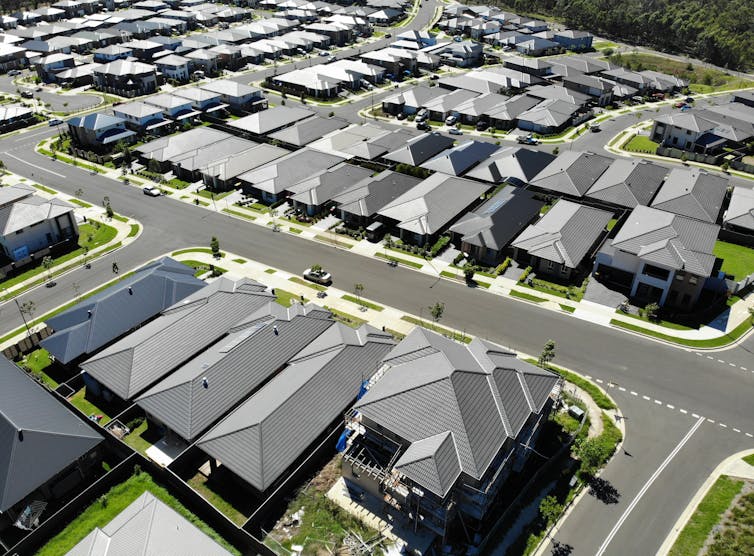
If you visit southern Greece or Tunisia, you might notice lots of white rooftops and white buildings to reflect the intense heat and keep residents cooler.
It’s very different in Australia. New housing estates in the hottest areas around Sydney and Melbourne are dominated by dark rooftops, black roads and minimal tree cover. Dark colours trap and hold heat rather than reflect it. That might be useful in winters in Tasmania, but not where heat is an issue.
A dark roof means you’ll pay considerably more to keep your house cool in summer. Last year, the average household in New South Wales paid A$1827 in electricity. But those with a lighter-coloured cool roof can pay up to $694 less due to lower cooling electricity needs. Put another way, a dark roof in Sydney drives up your power bill by 38%.
When suburbs are full of dark coloured roofs, the whole area heats up. And up. And up. This is part of the urban heat island effect. In January 2020, Penrith in Western Sydney was the hottest place on Earth.
Cool roofs have many benefits. They slash how much heat gets into your house from the sun, keep the air surrounding your home cooler, boost your aircon efficiency, and make your solar panels work more efficiently.
State governments could, at a stroke, penalise dark roofs and give incentives for light-coloured roofs. Scaled up, it would help keep our cities cooler as the world heats up. But outside South Australia, it’s just not happening.

Why Won’t State Governments Act?
To date, our leaders show no interest in encouraging us to shift away from dark roofs.
In New South Wales, plans to ban dark roofs were axed abruptly in 2022 after pushback from developers.
The current NSW planning minister, Paul Scully, has now paused upgrades to the state’s sustainability building standards which would have encouraged light-coloured roofs. Other Australian states and territories have also paused the rollout of new, more ambitious building sustainability standards.
This is short-sighted for several reasons:
- it costs the same for a light- or dark-coloured roof
- owners will pay substantially higher electricity bills to keep their houses cool for decades
- keeping the building status quo makes it harder to reach emission targets
- dark roofs cut how much power you get from your rooftop solar, especially when it’s hot. This is doubly bad, as blackouts are most likely during the heat.
At present, South Australia is the only state or territory acting on the issue. Early this year, housing minister Nick Champion announced dark roofs will be banned from a large new housing development in the north of Adelaide.
What’s At Stake?
At present, the world’s cities account for 75% of all energy-related carbon dioxide emissions. It’s vitally important we understand what makes cities hotter or cooler.
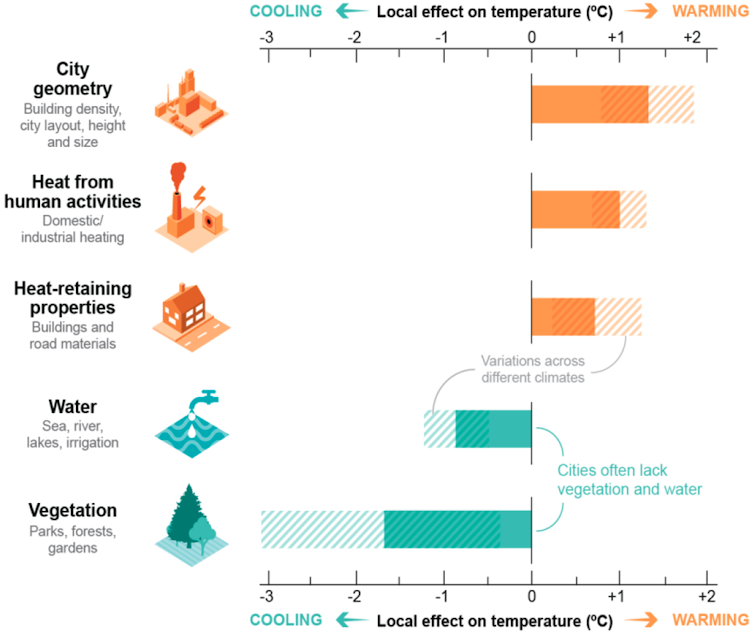
Brick, concrete, tarmac and tiles can store more heat than grass and tree-covered earth can, and release it slowly over time. This keeps the air warmer, even overnight.
Built-up areas also block wind, which cuts cooling. Then there’s transport, manufacturing and air-conditioning, all of which increase heat.
Before aircon, the main way people had to keep cool was through how they designed their homes. In hot countries, buildings are often painted white, as well as having small windows and thick stone walls.

The classic Queenslander house was lifted off the ground to catch breezes and had a deeply shaded veranda all around, to reduce heat.
But after aircon arrived, we gradually abandoned those simple cooling principles for our homes, like cross-ventilation or shade awnings. We just turned on air conditioning instead.
Except, of course, the heat doesn’t go away. Air conditioning works by exchanging heat, taking the heat out of air inside our house and putting it outside.
As climate change intensifies, it makes hot cities even hotter. Heatwaves are projected to be more frequent, including in spring and autumn, while overnight temperatures will also increase.
As cities grow, suburbs can push into hotter areas. The 2.5 million residents of Western Sydney live at least 50km from the sea, which means cooling sea breezes don’t reach them.
Sweltering cities aren’t just uncomfortable. They are dangerous. Extreme heat kills more people in Australia than all other natural disasters combined.
How Can We Cool Our Cities?
We don’t have to swelter. It’s a choice. Light roofs, light roads and better tree cover would make a real difference.
There’s a very practical reason Australians prize “leafy” suburbs. If your street has established large trees, you will experience less than half the number of days with extreme heat compared on residents on treeless streets. If you live in a leafy street, your home is also worth more.
Blacktop roads are a surprisingly large source of heat. In summer, they can get up to 75°C. Our research shows reflective sealants can cut the temperatures up to 13°C. Some councils have experimented with lighter roads, but to date, uptake has been minimal.
Cool roofs markedly reduce how much energy you need to cool a house. When used at scale, they lower the air temperatures of entire suburbs.
The simplest way to get a cool roof is to choose one with as light a colour as possible. There are also high-tech options able to reflect even more heat.
Soon, we’ll see even higher performance options available in the form of daytime radiative coolers – exceptional cooling materials able to reflect still more heat away from your house and cut glare.
Until we choose to change, homeowners and whole communities will keep paying dearly for the luxury of a dark roof through power bill pain and sweltering suburbs.![]()
Sebastian Pfautsch, Research Theme Fellow - Environment and Sustainability, Western Sydney University and Riccardo Paolini, Associate Professor, School of Built Environment, UNSW Sydney
This article is republished from The Conversation under a Creative Commons license. Read the original article.
‘The ghost has taken the spirit of the Moon’: how Torres Strait Islanders predict eclipses

It’s eclipse season. The Sun, Earth and Moon are aligned so it’s possible for the Earth and Moon to cast each other into shadow.
A faint lunar eclipse will occur on March 25, visible at dusk from Australia and eastern Asia, at dawn from western Africa and Europe, and for much of the night from the Americas. Two weeks later, on April 8, a total solar eclipse will sweep across North America.
These events are a good time to think about an infamous incident 520 years ago, in which an eclipse prediction was supposedly used to exploit an Indigenous population. The incident has shaped how we think about astronomy and Indigenous cultures – but the real story is far more complex.
Columbus And The Eclipse
In June 1503, on his fourth voyage to the Americas, Italian explorer Christopher Columbus and his crew became stranded on Jamaica. They were saved by the Indigenous Taíno people, who gave them food and provisions.
As months passed, tensions grew. Columbus’s crew threatened mutiny, while the Taíno grew frustrated with providing so much for so little in return. By February, the Taíno had reached their breaking point and stopped providing food.
Supposedly, Columbus then consulted an astronomical almanac and discovered a lunar eclipse was forecast for February 29 1504. He took advantage of this knowledge to trick the Taíno, threatening to use his “magic power” to turn the Moon a deep red – “inflamed with wrath” – if they refused to provide supplies.

According to Columbus, this worked and the fearful Taíno continued to supply his crew until relief arrived months later. This incident inspired the idea of the “convenient eclipse”, which has become a familiar trope in works including Mark Twain’s A Connecticut Yankee in King Arthur’s Court (1889) and The Adventures of Tintin (1949).
But is there truth to the trope? How much did Indigenous peoples really know about eclipses?
Merlpal Maru Pathanu
In the Torres Strait, knowledge of the stars is central to culture and identity. Traditionally, special people were chosen for years of intense instruction in the art of star knowledge, which occurred in a secretive place of higher learning called the kwod. They would be initiated as “Zugubau Mabaig”, a western Islander term meaning “star man” – an astronomer.

Mualgal man David Bosun, a talented artist and son of a Zugubau Mabaig, explains that these individuals paid careful attention to all things celestial. They kept constant watch over the stars to inform their Buai (kinship group) when to plant and harvest gardens, hunt and fish, travel and hold ceremonies.
The final stage of Zugubau Mabaig initiation involved a rare celestial event. Initiates were required to prove their bravery as well as their mental skill by taking the head of an enemy, particularly a sorcerer. In this way they would absorb that person’s powerful magic.
Headhunting raids occurred immediately after a total lunar eclipse, signalled by the blood red appearance of the Moon. During the eclipse, communities performed a ceremony in which dancers donned a special dhari (headdress) as they systematically chanted the names of all the surrounding islands.
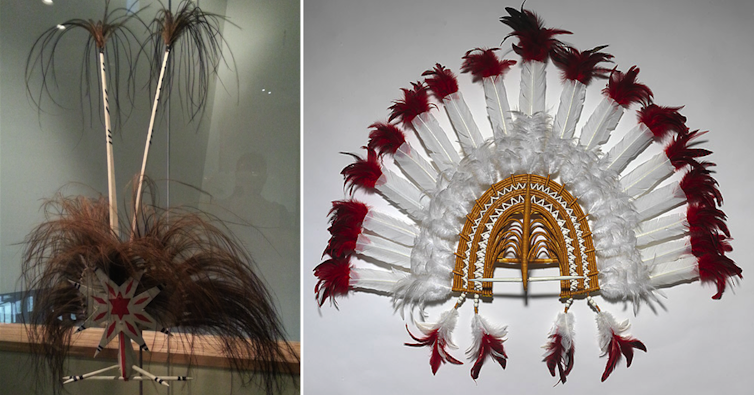
The island named when the Moon emerged from the eclipse was the home of the sorcerers they planned to attack. Women and children sought shelter while the men prepared for war. The ceremony, named Merlpal Maru Pathanu (“the ghost has taken the spirit of the Moon”), was planned well in advance by the Zugubau Mabaig.
How was this done?
Predicting An Eclipse
The Moon does not orbit Earth in the same plane Earth orbits the Sun. It’s off by a few degrees. The position of the Moon appears to zigzag across the sky over a 29.5-day lunar month. When it crosses the plane connecting Earth and the Sun, and the three bodies are in a straight line, we see an eclipse.
We know that ancient cultures including the Chinese and Babylonians possessed the ability to predict eclipses, and it is rather difficult to do. How did the Zugubau Mabaig accomplish it?
There are some things they would know. First, lunar eclipses only occur during a full moon, and solar eclipses during a new moon.
Second are the “eclipse seasons”: times when the planes of Earth, Moon and the Sun can intersect to form an eclipse. This happens twice a year. Each season lasts around 35 days, and repeats six months later.
Third is the Saros cycle: eclipses repeat every 223 lunar months (approximately 18 years and 11.3 days).
The details are highly complex. But it’s clear that predicting an eclipse requires careful, long-term observations and keeping detailed records, skills Torres Strait Islander astronomers have long possessed.
Flipping The Narrative
The Zugubau Mabaig eclipse forecasts turn a common understanding of the history of science on its head. Indigenous peoples did, in fact, develop the ability to predict eclipses.
Perhaps the real situation is better captured in a short story called El Eclipse (1972), by Honduran writer Augusto Monterroso.
In the story, a Spanish priest is captured by Maya in Guatemala, who opt to sacrifice him. He tries to exploit his knowledge that a solar eclipse will occur that day to trick his captors, but the Maya look at the priest with a sense of incredulity. Two hours later, he meets his fate on the altar during the totality of the eclipse.
As the Sun goes dark and the priest’s blood is spilled, a Maya astronomer recites the dates of all the upcoming eclipses, solar and lunar. The Maya had already predicted them.
The truth behind this story is found in the Dresden Codex, a thousand-year-old book of Maya records that includes tables of eclipse predictions.
Learn more at www.aboriginalastronomy.com.au![]()
Duane Hamacher, Associate Professor, The University of Melbourne and David Bosun, Mualgal man, Moa Island, Torres Strait, Indigenous Knowledge
This article is republished from The Conversation under a Creative Commons license. Read the original article.
We have revealed a unique time capsule of Australia’s first coastal people from 50,000 years ago
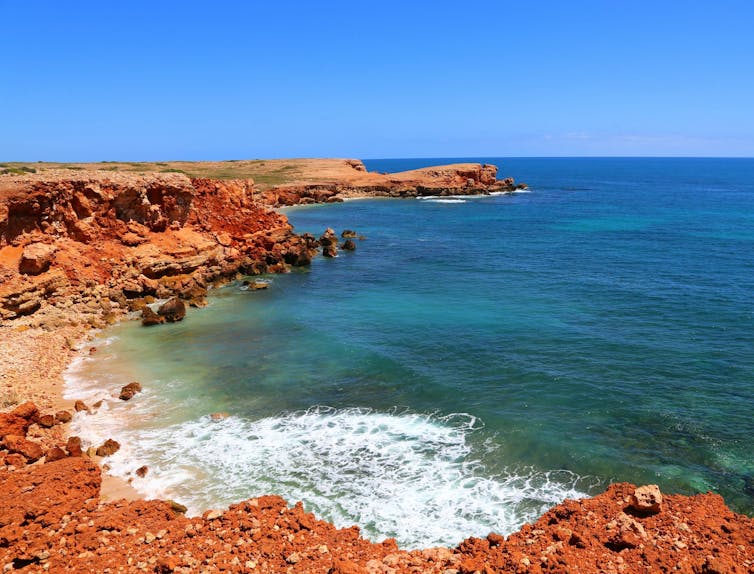
Barrow Island, located 60 kilometres off the Pilbara in Western Australia, was once a hill overlooking an expansive coast. This was the northwestern shelf of the Australian continent, now permanently submerged by the ocean.
Our new research, published in Quaternary Science Reviews, shows that Aboriginal people repeatedly lived on portions of this coastal plateau. We have worked closely with coastal Thalanyji Traditional Owners on this island work and also on their sites from the mainland.
This use of the plain likely began 50,000 years ago, and the place remained habitable until rising sea levels cut the island off from the mainland 6,500 years ago.
A Unique Time Capsule
The northwestern shelf and the submerged coastlines of Australia are immensely significant for understanding how and where First Nations people lived before and during the last ice age.
When the last ice age was at its coldest (24,000 to 19,000 years ago), sea levels worldwide were about 130 metres below current levels. As the ice melted, the sea rose rapidly, eventually flooding the connection between Barrow Island and the mainland.
Since Aboriginal people did not occupy the island after this time, the human archaeological record of Barrow Island is a time capsule, unique in Australia. Most other coastal occupation areas from this period are now beneath the sea, but these drowned landscapes were once vast and habitable.
The largest rock shelter on the island is Boodie Cave, one of Western Australia’s oldest archaeological sites. Excavations here revealed evidence of Aboriginal occupation dating back at least 50,000 years.
As sea levels fluctuated through time, the distance from Boodie Cave to the seashore varied significantly. Aboriginal people brought shellfish back to Boodie Cave even when it was many kilometres from the coast.
As the sea rose, people’s diets changed. The quantity of shellfish, crabs, turtles and fish consumed in the cave increased through time.
Aboriginal people here mainly used local, silica-rich limestone for crafting their stone tools. While this material was readily accessible, it blunted easily. Instead, people used thick and hard shells from large Baler sea snails to make knives for butchering turtles and dugong.
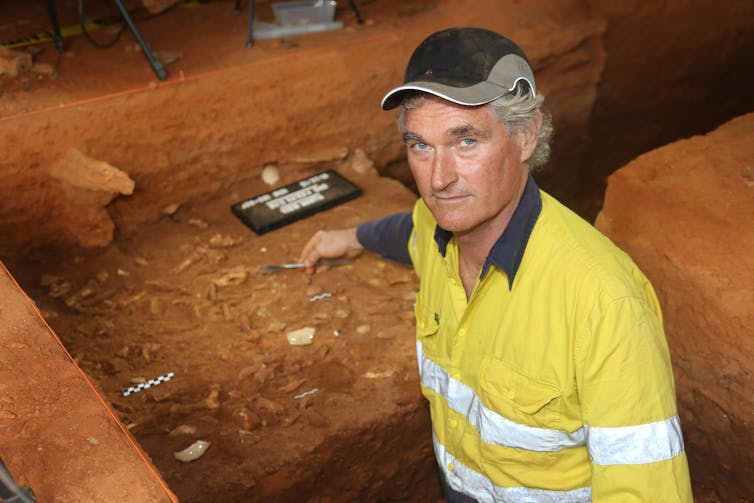
43,000 Years Of Exchange
In contrast to the cave deposits, the open-air archaeological sites present a different picture. Three years of systematic field surveys recorded over 4,400 flaked and ground stone artefacts from nearly 50 locations.
Excluding one limestone source, most of these stone tools represent geological sources not found on the island. This means they were made out of rocks more typical of the west Pilbara and Ashburton regions.
The artefacts we’ve found on Barrow Island show that Aboriginal people transported and exchanged stone materials from inland or places now under the sea for over 43,000 years.
We don’t yet know why the artefacts in the cave are so different to the ones found in the open air.
The numerous open sites leave a record of how Aboriginal people adapted to sea-level changes. Both the surface and cave records suggest that Aboriginal people used more local limestone and shell tools as rising sea levels cut off access to the mainland or drowned sources.
Imported stone tools were precious and therefore conserved and heavily used for grinding seeds, working harder materials such as wood, and likely for cutting softer materials such as skins and plant fibre.
While early Aboriginal people continued to use coastal resources, they maintained social networks and exchanges with the mainland. The open sites from Barrow Island provide one line of evidence connecting contemporary Aboriginal people to the now-drowned coastal plains, coastlines and continental islands.
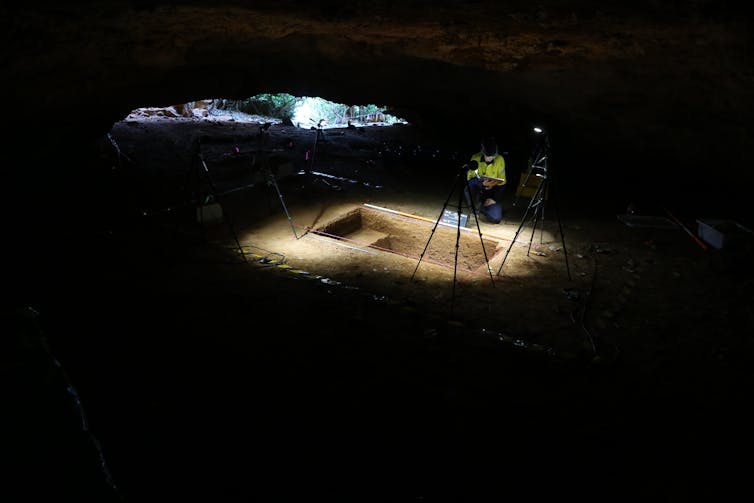
An Ancestral Connection For Thalanyji Peoples
Despite the distance of Barrow Island from the mainland for most of the last 6,500 years, Thalanyji knowledge holders refer to the use of the island from both historic-era fishing activities and as forced labourers in the early pearling industry.
They know the Sea Country between the islands, and the songline connections linking the mainland to the islands. Traditional Owners involved in our project see the artefacts as evidence of their ancestral connection to the island, old coastlines and now drowned coastal plain.
The Barrow Island open-air sites are a significant time capsule, offering unique insights into coastal Aboriginal lifeways over tens of thousands of years.
These sites, combined with the cave records, provide scientists and Traditional Owners with invaluable opportunities to understand and preserve Australia’s rich and deep history.
The authors would like to acknowledge the Buurabalayji Thalanyji Aboriginal Corporation, recognised communally according to their cultural preference, as co-authors of this study.![]()
Peter Veth, Laureate Professor in Archaeology, The University of Western Australia; David W. Zeanah, Professor, California State University, Sacramento; Fiona Hook, Adjunct associate, The University of Western Australia; Kane Ditchfield, Postdoctoral Research Fellow, The University of Western Australia, and Peter Kendrick, Adjunct Research Fellow, School of Biological Sciences, The University of Western Australia
This article is republished from The Conversation under a Creative Commons license. Read the original article.
Finding Endangered Frogs On Tall Plateaus - Saving Our Species: Field Notes
Video by the NSW Dept. of Environment and Heritage
Published 20 Mar 2024
After months of hiking and tirelessly searching, the Saving our Species and NSW National Parks team have been making epic discoveries on top of the infamous multi-tiered sandstone monoliths of the Budawangs, in Morton National Park on Yuin Country.
They confirmed breeding populations of endangered southern heath frogs (Litoria watsoni)!
Learn more about about this project, and many other frog projects that are part of the Saving our Species program, at: www.environment.nsw.gov.au/news/lets-talk-about-frogs
A eucharist of sourdough or wafer? What a thousand-year-old religious quarrel tells us about fermentation
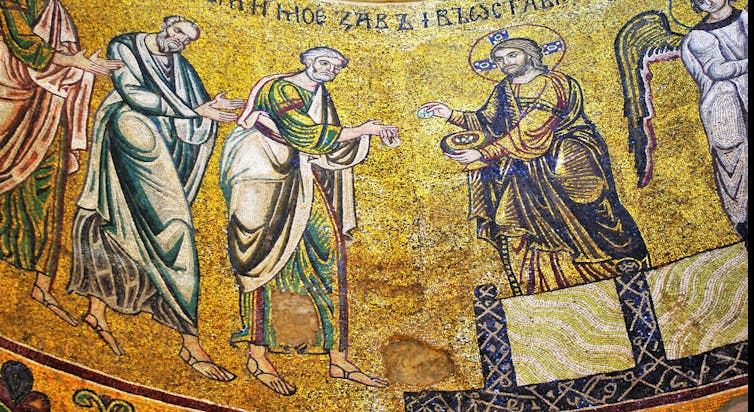
A nasty quarrel arose in the 11th century over what kind of bread should be used in holy communion.
The view in Constantinople was the bread for the eucharist must be sourdough. But in Rome, an unleavened wafer had been used for longer than anyone could remember and the Vatican argued unleavened bread was more authentic.
It might sound like a storm in a chalice, but it mattered a lot because church authority seemed to be at stake.
Neither side could back down, and the grand fracas – known as the “azyme controversy of 1054” – became so divisive that it led, among other quibbles, to the schism of east and west. Today, the sourdough loaf in the Orthodox liturgy is cut up and mixed with wine, while the Catholic church still uses a small circular wafer.
Scholars have difficulty accounting for this unfortunate brawl. Was it politically motivated, or just an escalation of insults among bickering headstrong men that’s best forgotten?
But rather than reading the controversy as a case study in antagonism, it occurred to me the historical record is useful in illuminating medieval attitudes to bread and fermentation.
Christ’s Sacrifice
The Byzantine Greeks had a gut reaction to the Latin wafer or matzo (azymon). They were disgusted by the idea of an inflexible board representing the Saviour. The Lord’s body had to be figured in a more flesh-like genuine bread.
They accused the Latin wafer of being like the clay of a brick; the Latin unleavened bread as being “dead” (nekron). Even in the 8th century, John of Damascus described this characterless wafer as “insipid” (moron).
Much of the debate concerned doctrine.
The Byzantines thought the Latins didn’t really understand the point of the sacrament, because their unleavened bread was a throw-back to Jewish practice. The Byzantines said they must not Judaicise (ioudaïzein) the holiest rite, which is all about Christ’s sacrifice that Jews don’t recognise.

Aside from these dogmatic arguments, an important part of the Greek revulsion against the wafer was aesthetic. The leaven in the sourdough process was identified with life and warmth and the bread itself – though technically sour – is endowed with sweetness (hedytes).
The Latin church retorted the fermentation of the dough introduces an impurity into the angelic substance of the eucharist. After all, they said, the process of sourdough must be a bit like rot or putrefaction.
It seemed to them the original unadulterated ingredients of wheat and flour are sullied by (the then) unknown alien substance that eventually results in degradation and spoiling (vitiatio).
Observing The Yeast
Behind this disagreeable theological dispute between eastern and western churches, we gain precious insight into how the premodern mind understood fermentation, and especially what distinguishes it from rot and decay.
The debate brings out intuitions that anticipate the findings of Louis Pasteur 800 years later, who understood the action of yeasts as an additive process rather than a form of decay.
Actually, the positive interpretation of yeast begins with Jesus himself. In a Biblical verse quoted repeatedly during the squabble, Jesus compares heaven to sourdough:
The kingdom of heaven is like unto leaven (zyme), which a woman took, and hid in three measures of meal, till the whole was leavened.
As the Byzantines argued, Jesus wouldn’t have proposed this analogy if he thought the leaven was some form of corruption that takes over and damages the food.

His parable envisages good things (think divine love) spreading miraculously in the holy environment, in the same way the lump of dough is enriched by the discrete amounts of leaven that end up permeating it.
The Byzantines and Pasteur would agree with Jesus. Following Pasteur, we identify the wild yeast in sourdough as lactobacillus – but there was no microscope in the middle ages and a scientific approach could only be based on what could be seen, which is marvellously enigmatic.
The Latin view rejected the homely Greek interpretation. Their Vulgate Bible mistranslates a line of Paul, saying “a little leaven spoils (corrumpit) the whole lump”, instead of “a little leaven leaveneth (zymoi) the whole lump”.
A belligerent Cardinal Humbert dismissed the analogy of heaven and leaven, scoffing that Jesus also compares heaven to a seed of mustard.
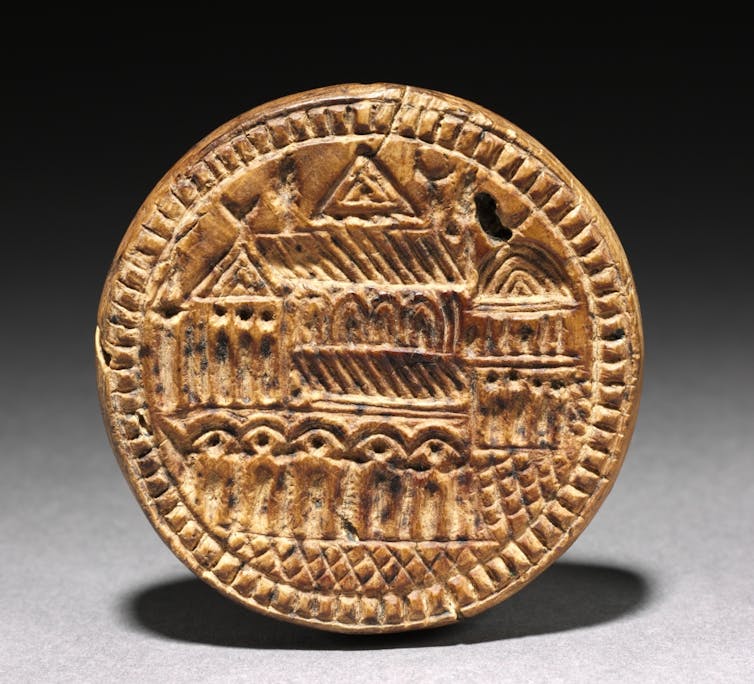
Humbert argued the yeast in the leaven has to come from somewhere: its origins belong with similar yeasts in beer, and these in turn are related to the scum of foul organic matter.
Humbert also reminds us of what happens when you leave the leavened dough for too long: it goes off and becomes inedible.
Heavenly Sourdough
Today we might say that the Latins came to the wrong biochemical conclusions, but in many ways their approach was more empirical and scientific. Observing how leavened dough easily becomes foul, they reasoned that fermentation must involve impurities.
For those of us who haven’t looked at a microscope since high school, the Byzantine polemic in general helps us understand how we still imagine microbiological processes without being able to see or name the various bacteria and enzymes at work.

Even after peak sourdough during the lockdowns, sourdough strikes me as mysterious as a process and seductive in its results, with a tough texture and pleasantly sour taste arising from unseen bugs.
And though our secular bakers are remote from the passionate theology of Byzantine clerics, we know deep down that sourdough is heavenly and the most charismatic of breads.![]()
Robert Nelson, Honorary Principal Fellow, The University of Melbourne
This article is republished from The Conversation under a Creative Commons license. Read the original article.
The rocking story of how religion crept into popular music – where it remains even today
Panizza Allmark, Edith Cowan UniversityIt’s Easter weekend, which means many of us will be kicking back with the greatest hits on repeat. But whether you’re a boomer, or an ‘80s or '90s kid, you might be surprised to find many of your favourite tunes are more concerned about Jesus and God than you’d realised.
Many chart-topping songs in Western music delve into themes of faith (especially Christianity), spirituality and divinity. But unlike Christmas music, most of these come from a rock tradition.
Early Gospel Makes The Charts
Hits by some of rock’s greatest guitarists, such as George Harrison, Lenny Kravitz and Prince, feature strong guitar riffs that create a sense of aural transcendence. These riffs, which involve a repeated note sequence or chord progression, help to define their songs.
This intertwining of guitar and Christian spirituality dates back to the emergence of rock music in the 1940s. American rock pioneer Sister Rosetta Tharpe (1915–73), from the Pentecostal church, used powerful guitar riffs that surged with soulfulness.
Tharpe’s 1944 gospel song Strange Things Happening Every Day – covered by Yola for the 2022 film Elvis – is a great example.
Using electric guitar, and the theological message “Jesus is the holy light”, Tharpe’s was the first song to cross over from gospel into a mainstream “race” chart in the US. “Race music”, which eventually became R&B, was the term used to describe African American music (but generally just referred to secular music).
The Rise Of Spirituality And Counterculture
Christian rock also has roots in the 1960s US counterculture “hippie” movement. The Jesus People brought a Christian vibe to this movement, leading to works such as Andrew Lloyd Webber’s 1971 rock opera Jesus Christ Superstar, which is still being performed more than 50 years later.
Throughout the 1960s and '70s, plenty of songs exploring themes of God, faith and spirituality climbed their way into the Top 20. For example, Norman Greenbaum’s 1970 track Spirit in the Sky became popular during the Christian rock movement.
It was joined in the same year by Harrison’s hit My Sweet Lord, which is particularly interesting because of its mix of spiritual undertones, which reflect the West’s growing interest in Eastern spirituality at the time.
Along with the repetition of “lord” (which is said around 40 times) and the use of the Christian/Hebrew word “Hallelujah”, the song also includes chants of “Hare Krishna” and “Hare Rama”, praising the Hindu gods.
My Sweet Lord became the highest-selling single in the United Kingdom in 1971, as well as the first solo number-one hit by a member of the Beatles. It wasn’t all smooth sailing, though. The song sparked controversy, and a lawsuit that claimed it was too similar to The Chiffons’s 1963 hit He’s So Fine.
For some, My Sweet Lord is considered a Christian song – at least the until the Hindu chants begin. But the mixing of religious elements was seen by some conservative Christians as satanic, or pagan (even though Hinduism isn’t a pagan religion).
Music throughout the 1960s and '70s, while it still touched on religious themes, grew much more rebellious and edgy with bands like The Rolling Stones and Black Sabbath.
Topics such as sex, drugs and hedonism became common – as did protesting against traditional values. From this cocktail emerged the view that rock was the devil’s music.
The 80s: When Religion Met Raunchy
The 1980s and '90s continued the trend of intertwining spirituality and popular music. Many of these tracks stirred deep discussions on faith, cementing music’s power as a medium for expressing complex themes.
Lenny Kravitz’s Are You Gonna Go My Way (1993) was written to sound like the lyrics came from Jesus himself:
I was born long ago, I am the chosen. I’m the one. I have come to save the day, and I won’t leave until I’m done […] But what I really want to know is, are you gonna go my way?
Prince’s Lets Go Crazy (1984) was a metaphor for God and Satan, hinted at in the line “are we gonna let the elevator bring us down? Oh no let’s go!”
Meanwhile, Madonna’s 1989 smash Like a Prayer made more than one wave when it topped the charts 35 years ago. The music video stirred up quite a controversy by mixing the sacred with the profane. Among other things, Madonna is shown dancing among burning crosses, and kissing a black Christ who comes to life from being a statue.
The video conveys messages about prejudice, racism, violence and sexuality. Some networks refused to show it, deeming it inappropriate for children. Others aired it with a warning it might offend viewers. The Catholic Church was outraged and the Vatican condemned it.
Nonetheless, the video achieved huge commercial success, winning MTV’s 1989 Video Music Award for Viewer’s Choice. Even now, it remains a pinnacle of music video art.
Religion Is Still Everywhere In Music
Today, most of us won’t bat an eyelid when we see Lil Nas X giving Satan a lapdance, and that’s probably because of the work of artists like Madonna.
It’s interesting that, despite a rise in secularism, the intersection of the sacred and secular in music has persisted. Leonard Cohen’s Hallelujah, with its intermingling spiritual and sexual themes, is still one of the most popular songs of all time.
Today, many of the world’s most famous contemporary artists continue the tradition of engaging with spiritual and religious themes. Take Drake’s 2018 hit God’s Plan, or The Weeknd’s highly acclaimed 2022 album Dawn FM, replete with spiritual undertones and religious symbolism.
Perhaps it’s just in the nature of religion to evoke feeling and inspire, even for those who aren’t “religious” themselves. Or perhaps we’ve collectively realised musicians can experiment with themes and take risks, and it won’t bring about the end of the world. ![]()
Panizza Allmark, Professor Visual & Cultural Studies, Edith Cowan University
This article is republished from The Conversation under a Creative Commons license. Read the original article.
Music To The Ears: New Recording And Touring Grants
Applications open on 20 March and close 20 May 2024.
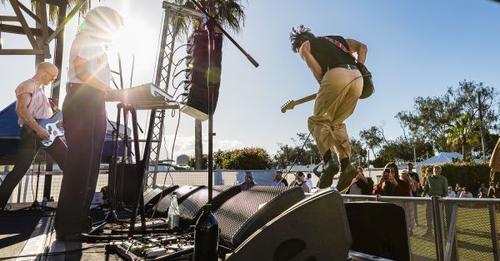 Musicians and artists are set to receive a boost under the NSW Government with the opening of grants focused on rebuilding the NSW touring circuit.
Musicians and artists are set to receive a boost under the NSW Government with the opening of grants focused on rebuilding the NSW touring circuit.
Sound NSW’s new Touring and Travel Fund and Recording and Promotion Grants will inject $3 million into the local contemporary music sector to deliver more new and original music, enable touring opportunities, and open doors for career-defining professional development.
With a focus on fostering growth and sustainability for the contemporary music industry, the programs support NSW artists to be globally competitive, develop industry networks and connect with new audiences locally and internationally.
Touring and Travel Fund
Designed to address the time-sensitive nature of venue availability and performance opportunities, Sound NSW’s $2 million Touring and Travel Fund offers quick response grants of up to $2500 per person for domestic activity and up to $7500 per person for international activity.
Applications for Sound NSW’s Touring and Travel Fund will be assessed on a quick-response basis against eligibility criteria.
Applications open on 20 March via nsw.gov.au/sound-nsw and close 20 May 2024.
Recording and Promotion Grants
Sound NSW’s $1 million Recording and Promotion Grants program will support NSW contemporary musicians to record and release new, original creative projects. NSW artists can apply for grants of:
- up to $25,000 for short-form releases, such as a single or EP
- up to $50,000 for long-form releases, such as an album
- up to $25,000 matched funding for artists signed to a major label.
Applications open 20 March and close 17 April 2024 at nsw.gov.au/sound-nsw
Minister for the Arts John Graham said:
“We are determined to rebuild the touring circuit, up and down the NSW coast, through our inland tours and suburbs. This fund will do just that.
“We’re delivering on our commitment to bring music back in NSW with this much-needed investment. These fast-response grants will support more new and original music from our musicians, enable tours across Australia and the world, and move NSW a step closer to being a global powerhouse for contemporary music.”
Head of Sound NSW Emily Collins said:
“Recording, releasing and performing new music is essential to the contemporary music industry and the growth and sustainability of artists’ careers, but the upfront costs are often greater than the income generated for many musicians.
“Sound NSW is excited to help bridge this gap by providing this vital funding, removing these prohibitive barriers and supporting NSW artists to do what they do best – making great music.”
NSW Youth Week 2024: Express. Empower. Get Loud!
- share ideas
- attend live events
- have your voice heard on issues of concern to you
- showcase your talents
- celebrate your contribution to the community
- take part in competitions
- have fun!
- Express – Youth week is a chance for every young person from across NSW to be themselves! It gives young people the opportunity to showcase their talents and getting involved.
- Empower – It’s time for young people in NSW to have their voices heard on issues that matter to you. Register here to participate in the Advocate for Children and Young People’s opportunities to have your say.
- Get loud! – Get loud and celebrate together at local community events happening in your local community and across NSW.
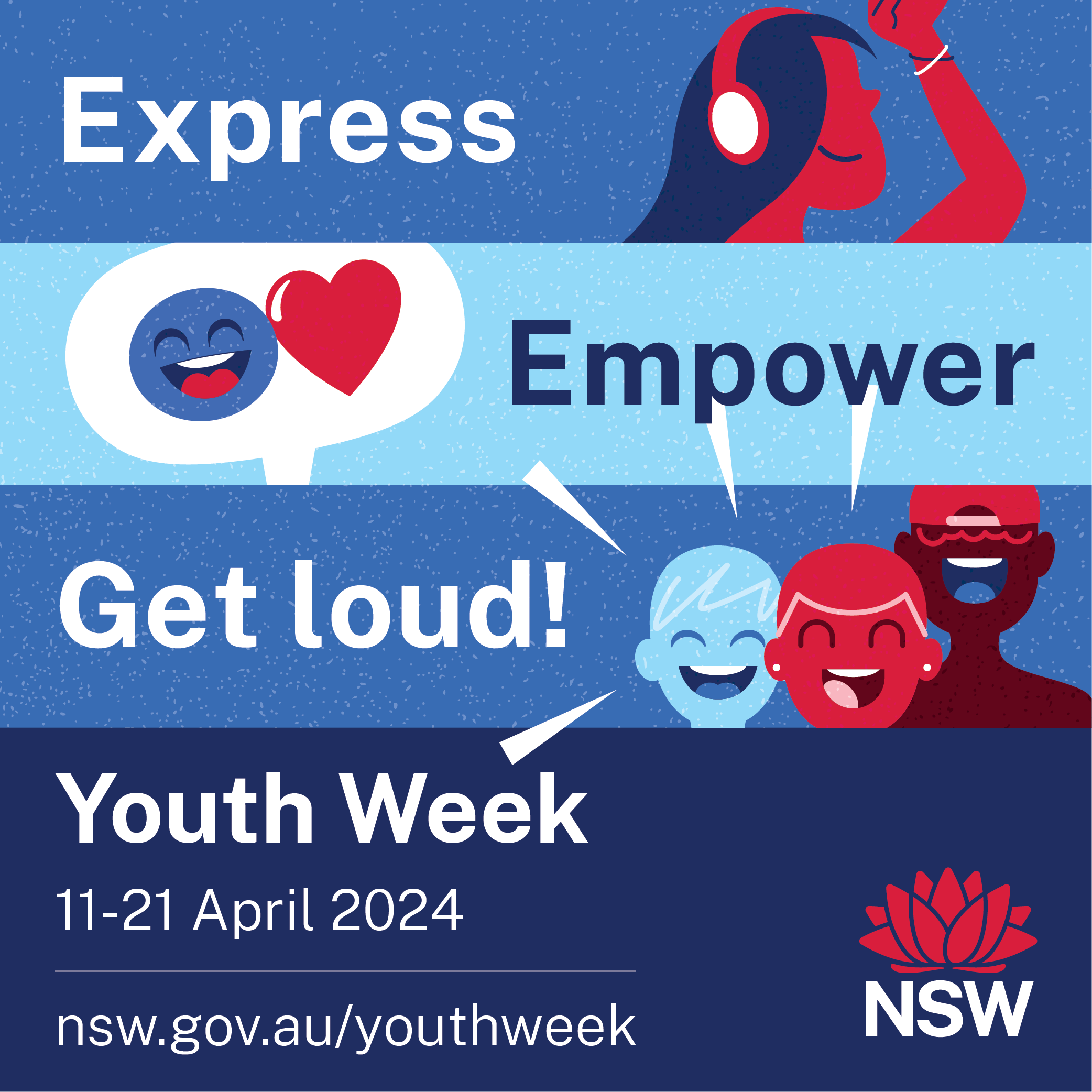
2024 Young Writers' Competition
Celebrating 15 years of the Young Writers' Competition, the 2024 theme word is 'crystal'. Council are looking for the next sparkling young creative writers on the Beaches.
Are you gazing into a crystal ball or standing under a sparkling crystal chandelier? Swimming through crystal blue waters or hunting for a magical crystal guarded by a monstrous beast? Is your story becoming crystal clear?
Write an original creative piece of work using this year's theme word 'crystal' for a chance to win prizes, meet our author judges and receive personalised feedback on your entry.
Open to students up to Year 12.
How to Enter
Visit the council webpage for more information and Conditions of Entry.
Enquiries: writers.comp@northernbeaches.nsw.gov.au
This event is delivered by Council's Library Programs Team as part of NSW Youth Week.
Finalists will be celebrated in an awards event and their creative works published in a library eBook. Entries are judged according to characterisation, plot, originality, and use of language and arranged into six different age group categories.
Four finalists are chosen in each age category and invited to a presentation event where a winner, runner-up and two highly commended prizes are awarded. Finalists from each category will have their stories published in an eBook that will be added to our collection.
All finalists receive a prize bag. Top prizes per category:
- Years K-2 - $70 voucher
- Years 3-4 - $85 voucher
- Years 5-6 - $100 voucher
- Years 7-8 - $125 voucher
- Years 9-10 - $150 voucher
- Years 11-12 - $175 voucher
Entries close May 15, 2024 at 5pm
This is a Free event.
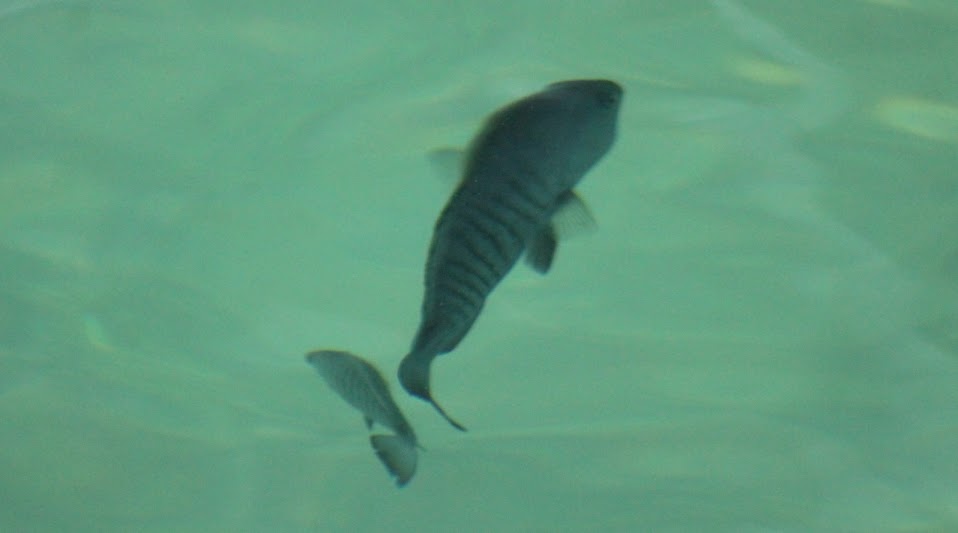
Nominate For 2024 Public Education Awards
Nominations for the 2024 Public Education Awards are now open.
The awards showcase the exceptional work occurring every day across NSW public education - by schools, students, teachers, employees and parents - and were previously known as the Minister’s and Secretary’s Awards for Excellence.
Among the seven award categories in 2024 is the Secretary’s Award for Diversity, Inclusion and Belonging.
This award recognises and celebrates those in NSW public education who proactively advocate for and celebrate diversity, inclusion and belonging.
It is open to all current employees of the NSW Department of Education, including casual staff, temporary staff and contractors.
The seven award categories for 2024 are:
- Minister’s Award for Excellence in Student Achievement
- Minister’s Award for Excellence in Teaching
- Secretary’s Award for Excellent Service - Teaching and School Operations
- Secretary's Award for Diversity, Inclusion and Belonging
- Secretary’s Award for an Outstanding School Initiative
- Secretary’s School Achievement Award
- Public School Parent of the Year
Award nominations close on 14 May and the winners will be announced at a gala event at Sydney Town Hall on Monday 5 August.
More information is available on the Public Education Foundation website
Living Ocean 'No Plastics Please' Beach Clean Up; South Avalon Beach
LIVING OCEAN'S - 'NO PLASTIC PLEASE' PROGRAM IS BACK!
Join them for the Living Ocean community beach clean as they re-launch their monthly program and microplastics analysis initiative.
Where: South Avalon Beach
When: Sunday 14th April 9:30am
Bring: Gloves & Buckets
They’ll be meeting at the clearing under the pine trees for an initial brief, and then head to the beach for a short 10-15mins intro and demonstration into microplastics by Living Ocean’s lead scientist Bill Fulton.
At 10am they will be starting their clean which will run for about an hour.
''Everyone is welcome to this family friendly event. Come along, make some new friends and do some good for the local environment!
Please invite family and friends and share this event. LO hope to see you all there!'' - LO
Let them know you are coming at: HERE
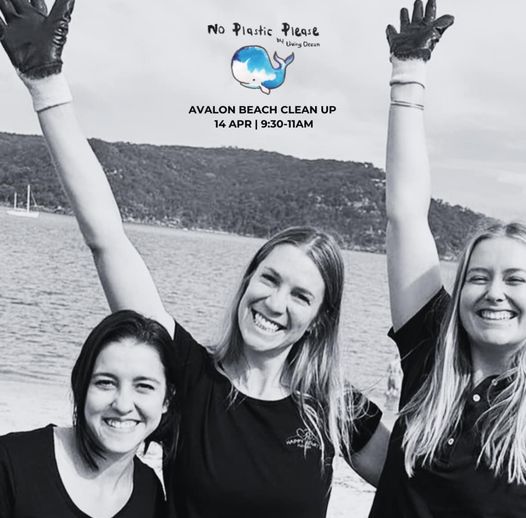
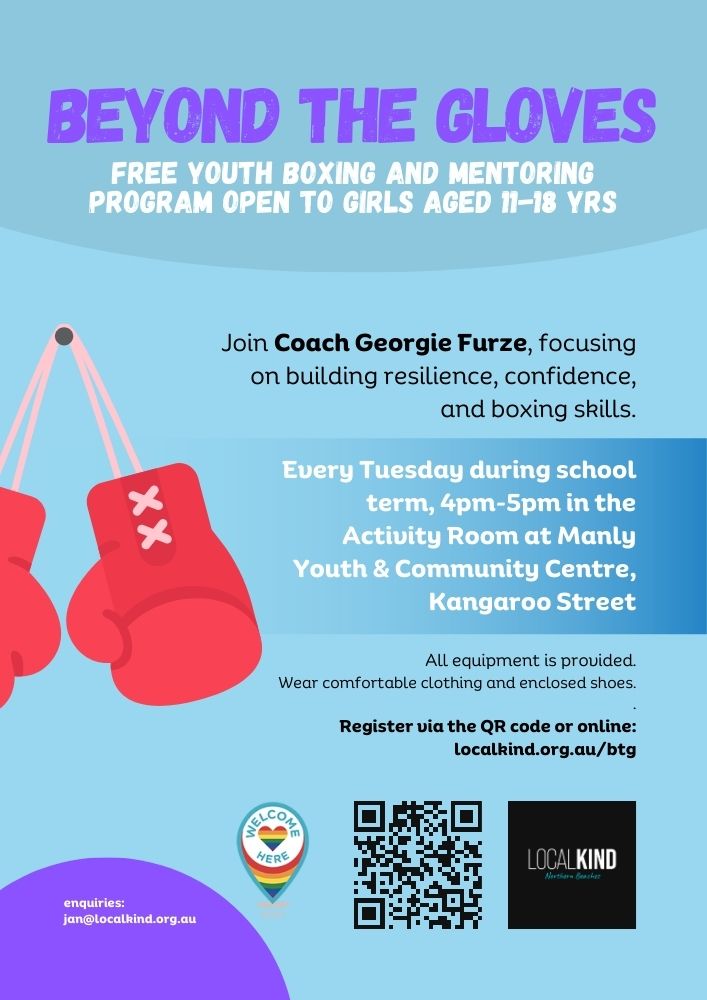
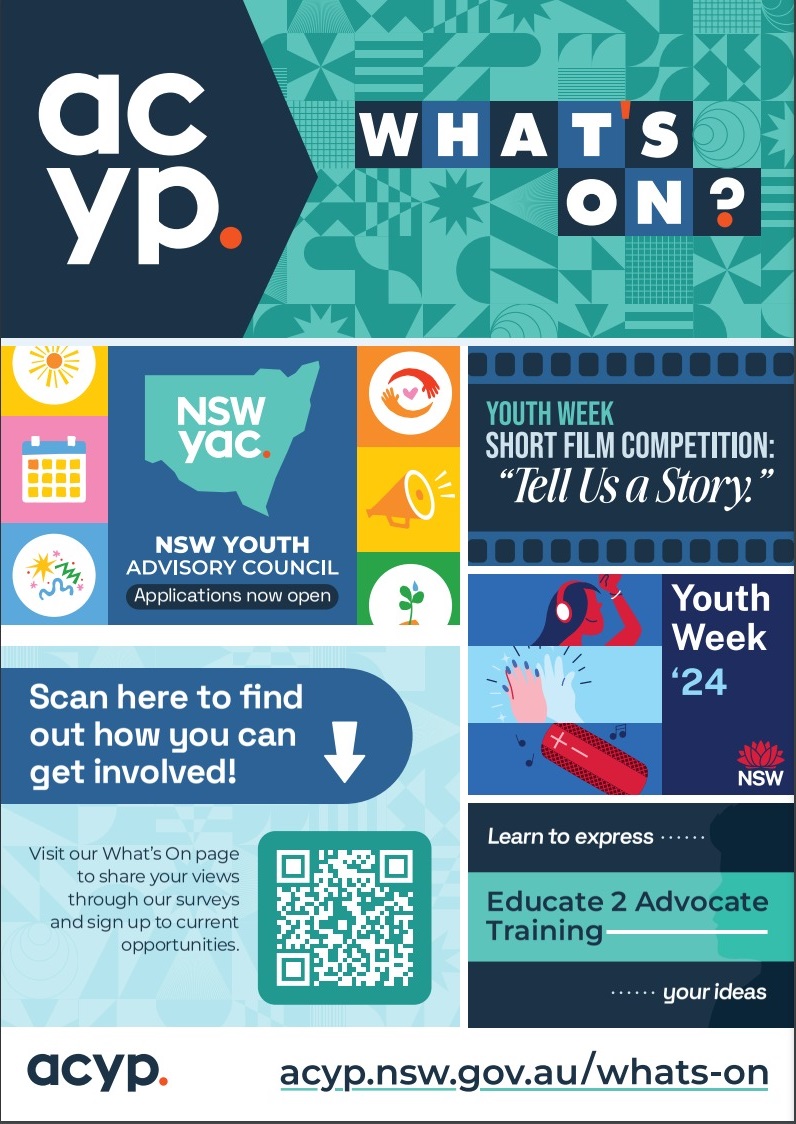
School Leavers Support
- Download or explore the SLIK here to help guide Your Career.
- School Leavers Information Kit (PDF 5.2MB).
- School Leavers Information Kit (DOCX 0.9MB).
- The SLIK has also been translated into additional languages.
- Download our information booklets if you are rural, regional and remote, Aboriginal or Torres Strait Islander, or living with disability.
- Support for Regional, Rural and Remote School Leavers (PDF 2MB).
- Support for Regional, Rural and Remote School Leavers (DOCX 0.9MB).
- Support for Aboriginal and/or Torres Strait Islander School Leavers (PDF 2MB).
- Support for Aboriginal and/or Torres Strait Islander School Leavers (DOCX 1.1MB).
- Support for School Leavers with Disability (PDF 2MB).
- Support for School Leavers with Disability (DOCX 0.9MB).
- Download the Parents and Guardian’s Guide for School Leavers, which summarises the resources and information available to help you explore all the education, training, and work options available to your young person.
School Leavers Information Service
- navigate the School Leavers Information Kit (SLIK),
- access and use the Your Career website and tools; and
- find relevant support services if needed.
Word Of The Week: Dance
Verb
1. move rhythmically to music, typically following a set sequence of steps. 2. (of a person) move in a quick and lively way.
Noun
1. a series of steps and movements that match the speed and rhythm of a piece of music.
Similar: trip, sway, spin, whirl, twirl, pirouette, waltz, shake a leg, cut a rug, tread a measure.
From c. 1300, dauncen, "move the body or feet rhythmically to music," from Old French dancier (12c., Modern French danser), which is of unknown origin, perhaps from Low Frankish dintjan and akin to Old Frisian dintje "tremble, quiver." Through French influence in arts and society, it has become the primary word for this activity from Spain to Russia (Italian danzare, Spanish danzar, Romanian dansa, Swedish dansa, German tanzen.
In English it replaced Old English sealtian, itself a borrowing from Latin saltare "to dance," frequentative of salire "to leap" ; "dance" words frequently are derived from words meaning "jump, leap"). Native words used for the activity in Old English included tumbian (tumble (v.)), hoppian (see hop (v.1)).
Meaning "to leap or spring with regular or irregular steps as an expression of some emotion" is from late 14c. Of inanimate things, "move nimbly or quickly with irregular motion," 1560s. Transitive sense of "give a dancing motion to" is from c. 1500. To dance attendance; "strive to please and gain favour by obsequiousness" is from late 15c.
Dance, the movement of the body in a rhythmic way, usually to music and within a given space, for the purpose of expressing an idea or emotion, releasing energy, or simply taking delight in the movement itself.
Dance is a powerful impulse, but the art of dance is that impulse channelled by skilful performers into something that becomes intensely expressive and that may delight spectators who feel no wish to dance themselves. These two concepts of the art of dance—dance as a powerful impulse and dance as a skilfully choreographed art practiced largely by a professional few—are the two most important connecting ideas running through any consideration of the subject. In dance, the connection between the two concepts is stronger than in some other arts, and neither can exist without the other.
Although the above broad definition covers all forms of the art, philosophers and critics throughout history have suggested different definitions of dance that have amounted to little more than descriptions of the kind of dance with which each writer was most familiar. Thus, Aristotle’s statement in the Poetics that dance is rhythmic movement whose purpose is “to represent men’s characters as well as what they do and suffer” refers to the central role that dance played in classical Greek theatre, where the chorus through its movements re-enacted the themes of the drama during lyric interludes. - Encyclopaedia Britannica
How Spanish conquistadors, and a tiny cactus-dwelling insect, gave the world the colour red

When you think about a red object, you might picture a red carpet, or the massive ruby in the Queen’s crown. Indeed, Western monarchies and marketing from brands such as Christian Louboutin have cemented our association of the colour red with power and wealth.
But what if I told you this connection has been pervasive across time and cultures? In fact, the red pigment has fascinated humans for millennia.
Prickly Pear Blood
The vibrant red we often see in cosmetics, food and drinks is actually derived from a tiny insect called the cochineal, which lives on prickly pear cacti and today is harvested mainly from Peru and the Canary Islands. The cochineal’s ubiquitous crimson dye is also known as Carmine, Natural Red or E120.
The links between red and esteem and power can be traced back to the Inca civilisation that flourished in the Andean region of South America from around 1400 to 1533.
Red carries profound symbolism in Inca mythology, intertwined with the legendary story of Mama Huaco – the inaugural warrior queen – who was often envisioned as emerging in a resplendent red dress.
The historical journey of the cochineal mirrors the journeys of several other global staples – such as potatoes, chilli and tomatoes – that originated from pre-Columbian Mexico and South America.

The cochineal insect was brought to Europe by Spanish conquistadors in the 15th century, and held a worth akin to gold and silver. It strengthened Spain’s economic influence, provided support for the Spanish empire’s expansion, and stimulated global trade.
Cultivation and harvest were carried out by the Indigenous Mesoamerican peoples living under Spanish rule, who had already been doing this for centuries. They were paid in pennies while their labour allowed Spain to maintain its monopoly on the valuable red dye.
The King’s Shoes
Before the conquistadors began the cochineal trade, achieving a rich red hue was a challenge, which meant European nobility had to use purple and blue instead.
But by the 1460s, the cochineal gained such popularity in Europe that it superseded Tyrian purple as the traditional colour of the cardinals of the Roman Catholic Church. This red was unmatched in vibrancy. Its depth and rarity eventually made it among the most expensive dyes of the time.
It became a prominent feature in European Baroque art – characterised by its intensity and drama. And its widespread uptake by European royalty further solidified its connection with power and wealth.

In France, King Louis XIV’s (1638-1715) penchant for red was evident in his lavish décor choices, which included 435 red beds in his palace at Versailles. He displayed red in the soles of his shoes. He even instituted a law in 1673 restricting the coveted red heels to aristocrats who were granted permission by the monarch himself, effectively making them a hallmark of royal favour.
Spiritual Significance
The colour red holds significant spiritual symbolism across various religions. In Judeo-Christian traditions, an intriguing connection exists between the Hebrew word for “man” (Adam), “red” and “blood”, all stemming from a common etymological root.
According to Biblical accounts, Adam, the first man, was formed from the Earth – and the colour red could symbolise the richness of the soil or clay from which Adam was created. This interplay of language and symbolism underscores a profound interconnectedness between red and spiritual belief systems.
This spiritual significance reverberates across cultures. In Hindu tradition, red is imbued with sacred meaning symbolising fertility, purity and prosperity. In Chinese culture, it is considered auspicious, and signifies joy and prosperity.

Red hues have also been viewed as a symbol of vitality across spiritual and cultural groups, as they emulate blood, our life force. In Roman Catholic tradition, red is symbolic of martyrdom, the spirit and the blood of Christ.
The Colour Of Champions
In terms of visibility, red has the longest wavelength. This might help explain our longstanding cross-cultural attraction to it: studies show it stimulates excitement and energy when viewed, which can cause physical effects such as an increased heart rate. It has even been shown to increase our appetite.
Psychologically, red seems to have more influence on humans compared with other colours in the spectrum. In an experiment at the 2004 Athens Olympics, athletes across four contact sports were randomly clad in either red or blue. Those who wore red were more often victorious.
Another study of English football teams over a 55-year period found wearing red shirts was associated with greater success on the field. That’s because red is linked to a heightened sense of determination and endurance, which can translate to better focus. From this angle, red seems to be the colour of champions.
The “red carpet” tradition itself is thousands of years old. The first known reference to it comes from the ancient Greek play Agamemnon, written in 458 BCE, in which a red path (said to be reserved for the gods) is laid out for King Agamemnon by his wife as he returns from the Trojan war. The twist is that Clytemnestra seeks to lead him to his death:
Let all the ground be red / Where those feet pass; and Justice, dark of yore, / Home light him to the hearth he looks not for.
This symbol has since morphed into the celebrity red carpet, graced by pop culture “royalty”.
Meanwhile, red also has also garnered some alarming associations in our everyday vernacular, with “red pills”, “red flags” and “seeing red” being just a few examples.
This potent symbol continues to have diverse interpretations, representing not only achievement, but also the power – and sometimes the dangers – that come with it.![]()

Panizza Allmark, Professor Visual & Cultural Studies, Edith Cowan University
This article is republished from The Conversation under a Creative Commons license. Read the original article.
A cosmic ‘speed camera’ just revealed the staggering speed of neutron star jets in a world first

How fast can a neutron star drive powerful jets into space? The answer, it turns out, is about one-third the speed of light, as our team has just revealed in a new study published in Nature.
Energetic cosmic beams known as jets are seen throughout our universe. They are launched when material – mainly dust and gas – falls in towards any dense central object, such as a neutron star (an extremely dense remnant of a once-massive star) or a black hole.
The jets carry away some of the gravitational energy released by the infalling gas, recycling it back into the surroundings on far larger scales.
The most powerful jets in the universe come from the biggest black holes at the centres of galaxies. The energy output of these jets can affect the evolution of an entire galaxy, or even a galaxy cluster. This makes jets a critical, yet intriguing, component of our universe.
Although jets are common, we still don’t fully understand how they are launched. Measuring the jets from a neutron star has now given us valuable information.
Jets From Stellar Corpses
Jets from black holes tend to be bright, and have been well studied. However, the jets from neutron stars are typically much fainter, and much less is known about them.
This presents a problem, since we can learn a lot by comparing the jets launched by different celestial objects. Neutron stars are extremely dense stellar corpses – cosmic cinders the size of a city, yet containing the mass of a star. We can think of them as enormous atomic nuclei, each about 20 kilometres across.
In contrast to black holes, neutron stars have both a solid surface and a magnetic field, and gas falling onto them releases less gravitational energy. All of these properties will have an effect on how their jets are launched, making studies of neutron star jets particularly valuable.
One key clue to how jets are launched comes from their speeds. If we can determine how jet speeds vary with the mass or spin of the neutron star, that would provide a powerful test of theoretical predictions. But it is extremely challenging to measure jet speeds accurately enough for such a test.
A Cosmic Speed Camera
When we measure speeds on Earth, we time an object between two points. This could be a 100-metre sprinter running down the track, or a point-to-point speed camera tracking a car.
Our team, led by Thomas Russell from the Italian National Institute of Astrophysics in Palermo, conducted a new experiment to do this for neutron star jets.
What has made this measurement so difficult in the past is that jets are steady flows. This means there is no single starting point for our timer. But we were able to identify a short-lived signal at X-ray wavelengths that we could use as our “starting gun”.
Being so dense, neutron stars can “steal” matter from a nearby orbiting companion star. While some of that gas is launched outwards as jets, most of it ends up falling onto the neutron star. As the material piles up, it gets hotter and denser.
When enough material has built up, it triggers a thermonuclear explosion. A runaway nuclear fusion reaction occurs and rapidly spreads to engulf the entire star. The fusion lasts for a few seconds to minutes, causing a short-lived burst of X-rays.
One Step Closer To Solving A Mystery
We thought this thermonuclear explosion would disrupt the neutron star’s jets. So, we used CSIRO’s Australia Telescope Compact Array to stare at the jets for three days at radio wavelengths to try and catch the disruption. At the same time, we used the European Space Agency’s Integral telescope to look at the X-rays from the system.
To our surprise, we found the jets got brighter after every pulse of X-rays. Instead of disrupting the jets, the thermonuclear explosions seemed to power them up. And this pattern was repeated ten times in one neutron star system, and then again in a second system.
We can explain this surprising result if the X-ray pulse causes gas swirling around the neutron star to fall inwards more quickly. This, in turn, provides more energy and material to divert into the jets.
Most importantly, however, we can use the X-ray burst to indicate the launch time of the jets. We timed how long they took to move outwards to where they became visible at two different radio wavelengths. These start and finish points provided us with our cosmic speed camera.
Interestingly, the jet speed we measured was close to the “escape speed” from a neutron star. On Earth, this escape speed is 11.2 kilometres per second – what rockets need to achieve to break free of Earth’s gravity. For a neutron star, that value is around half the speed of light.
Our work has introduced a new technique for measuring neutron star jet speeds. Our next steps will be to see how the jet speed changes for neutron stars with different masses and rotation rates. That will allow us to directly test theoretical models, taking us one step closer to figuring out how such powerful cosmic jets are launched.![]()
James Miller-Jones, Professor, Curtin University
This article is republished from The Conversation under a Creative Commons license. Read the original article.
Australia just committed $207 million to a major satellite program. What is it, and why do we need it?
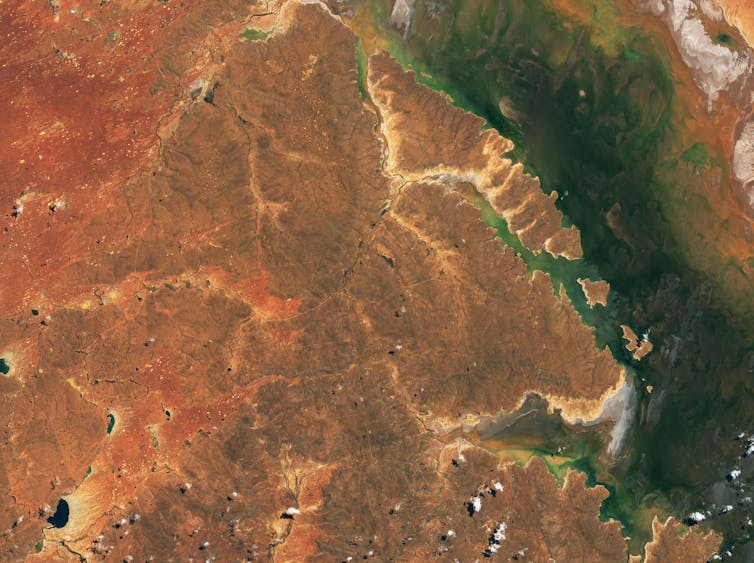
Last week, the federal minister for Resources and Northern Australia, Madeleine King, signed a A$207 million commitment with the United States in support of “Landsat Next”.
Aptly named, this is the next generation of an Earth observation satellite program from which Australia has benefited for over 40 years.
The commitment means we will make a critical contribution to global Earth observation efforts with our cutting-edge data management. In essence, we will be the custodians of data downloaded from new Landsat satellites – a major role.
What Is Earth Observation?
Earth observation satellites provide the world with more than half of all climate change data – and some of that data can come from nowhere else but space. They also provide over 90% of weather data, which the Bureau of Meteorology uses to give us our daily forecasts.
In Australia, Earth observation data is also critical for supporting agriculture, fisheries, mining, land and water policies, bushfire response, and national security needs. In 2020, the economic benefits of Earth observation data were estimated at over A$2.4 billion.
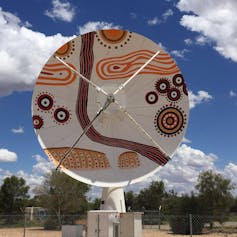
Furthermore, such data brings immense benefits to First Nations people, particularly in northern Australia. Indigenous rangers use Earth observation data to augment their traditional land and water management practices.
Importantly, Geoscience Australia and CSIRO work closely with the Centre for Appropriate Technology, an Indigenous business in Alice Springs. This business owns a satellite dish that receives data from Landsat and other Earth observation satellites.
What Is Landsat?
Landsat is a program led by NASA and the US Geological Survey. For more than 50 years it has provided the “longest continuous space-based record of Earth’s land in existence”.
This means since 1972 we’ve had continuous data on ice melts, weather and temperature changes, and changes in the planet’s landscapes and freshwater sources.
Australia has been a Landsat beneficiary and partner since the early 1970s. Just earlier this year, emergency services in Queensland facing Cyclone Kirilly depended on Landsat data to help mitigate potential flooding. Geoscience Australia has also used Landsat data gathered over decades to map changes in Australia’s shorelines.
And during the Black Summer megafires of 2019–20, the worst bushfire season New South Wales has ever recorded, Landsat images were critical in predicting where the bushfires would be worst, and assisting in real-time response.
The new agreement places us at the centre of data management for the next generation of Landsat.
What Is Landsat Next?
There have been nine Landsat satellites since 1972, of which eight are operational today. Landsat Next will add three more satellites to this, with new capabilities. As a result, we will get more data more often, and at a higher resolution.
Landsat Next will significantly improve image resolution of some of the original satellites. This means, for example, that 40% more detail can be captured for agricultural sowing, irrigation and harvesting needs.
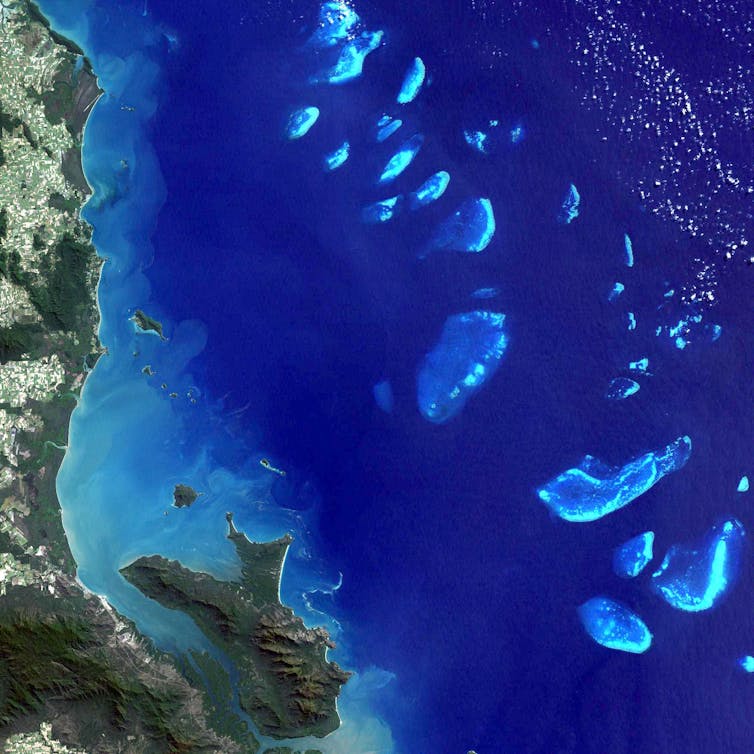
The current Landsat satellites cover 11 spectral bands. These are wavelengths of light captured by satellite sensors, ranging from visible light which we can see with the naked eye to invisible wavelengths like infrared and ultraviolet.
Landsat Next will increase this to up to 26 bands, which makes it possible to track water quality at much greater accuracy. This is helpful, for example, in detecting harmful algal blooms.
Landsat satellites also sense thermal bands. This is a measurement of surface temperatures so we can understand soil health and water levels, and track bushfires.
Landsat Next will improve the resolution of temperature measurements, providing improved climate change data and more accurate information for farmers and sustainable urban planning.
Australia Is Great At Satellite Data
The new commitment builds on what Australia already does, and is really good at – the ground and data segments of Earth observation satellite systems. In fact, we are a world leader in Earth observation data management.
We have excellent geography for collecting data from the satellites via large satellite dishes in Alice Springs. We also have a longstanding tradition of being the data custodians and stewards for our US and European partners.
The Landsat Next agreement fulfils one aspect of the planned National Space Mission for Earth Observation (NSMEO) which was cancelled last year due to major budget cuts. This was a disappointment to many people in Australia, and to our international partners.
This new commitment to Landsat Next puts in place part of what we were already planning to do through the NSMEO, and will make us a more important partner in global Earth observation infrastructure.
With our unique geography, Australia is a heavy user of Earth observation data, and this agreement means we can be bigger contributors, as well.![]()
Cassandra Steer, Deputy Director, Institute for Space (InSpace), Australian National University
This article is republished from The Conversation under a Creative Commons license. Read the original article.
Think $5.50 is too much for a flat white? Actually it’s too cheap, and our world-famous cafes are paying the price
Emma Felton, University of South AustraliaEven in a stubborn cost-of-living crisis, it seems there’s one luxury most Australians won’t sacrifice – their daily cup of coffee.
Coffee sales have largely remained stable, even as financial pressures have bitten over the past few years.
So too have prices. Though many of us became upset when prices began to creep up last year, they’ve since largely settled in the range between $4.00 and $5.50 for a basic drink.
But this could soon have to change. By international standards, Australian coffee prices are low.
No one wants to pay more for essentials, least of all right now. But our independent cafes are struggling.
By not valuing coffee properly, we risk losing the internationally renowned coffee culture we’ve worked so hard to create, and the phenomenal quality of cup we enjoy.
Coffee Is Relatively Cheap In Australia
Our recent survey of Australian capital cities found the average price of a small takeaway flat white at speciality venues is A$4.78.
But in some international capitals, it’s almost double this, even after adjusting for local purchasing power parity.
In London, a small flat white costs about A$6.96. Singapore, A$8.42. In Athens, as much as A$9.95.
The Cafe Business Is Getting Harder
Over the past few decades, coffee prices haven’t kept pace with input costs. In the early 2000s, after wages, food costs, utilities and rent, many cafes earned healthy profit margins as high as 20%.
The most recent data from IBISWorld show that while Australian cafe net profits have recovered from a drop in 2020, at 7.6%, they remain much lower than the Australian average business profit margin of 13.3%.
For an independent owner operating a cafe with the average turnover of A$300,000, this would amount to a meagre A$22,800 annual net profit after all the bills are paid.
What Goes Into A Cup?
Just looking at the cost of raw inputs – milk, beans, a cup and a lid – might make the margin seem lucrative. But they don’t paint the whole picture.
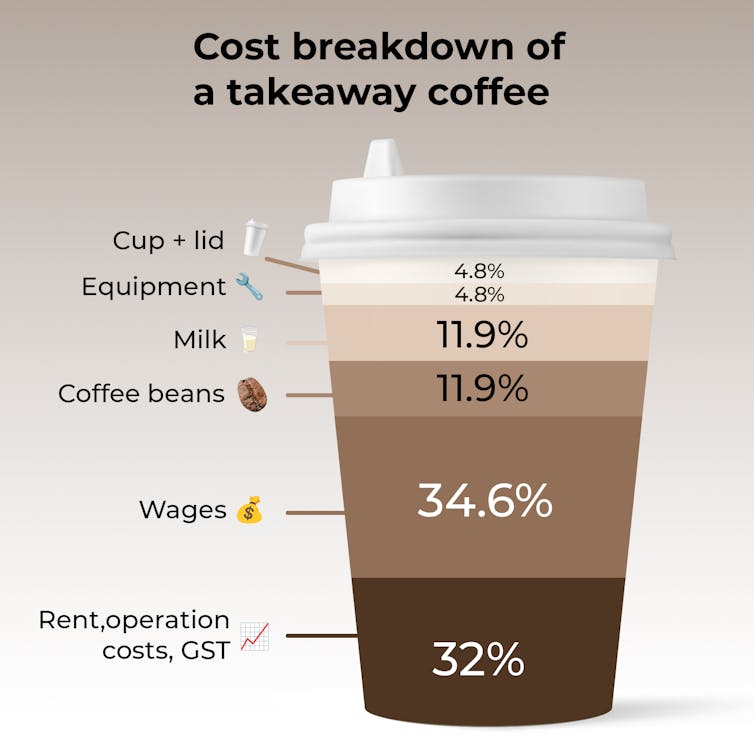
Over the past few years, renting the building, keeping the lights on and paying staff have all become much bigger factors in the equation for coffee shop owners, and many of these pressures aren’t easing.
1. Green coffee price
Increasingly subject to the effects of climate change, the baseline commodity price of green (unroasted) coffee is going up.
Arabica – the higher quality bean you’re most likely drinking at specialty cafes – is a more expensive raw product. Despite levelling off from post-pandemic highs, its price is still trending up. In 2018, it sold for US$2.93 per kilogram, which is projected to increase to US$4.38 dollars in 2025.
Robusta coffee is cheaper, and is the type typically used to make instant coffee. But serious drought in Vietnam has just pushed the price of robusta to an all-time high, putting pressure on the cost of coffee more broadly.
2. Milk prices
The price of fresh milk has risen by more than 20% over the past two years, and remains at a peak. This has put sustained cost pressure on the production of our most popular drink orders: cappuccinos and flat whites.
3. Wages and utilities
Over the past year, Australian wages have grown at their fastest rate since 2009, which is welcome news for cafe staff, but tough on operators in a sector with low margins.
Electricity prices remain elevated after significant inflation, but could begin to fall mid-year.
Specialty Vs. Commodity Coffee: Why Price Expectations Create An Industry Divide
One of the key factors keeping prices low in Australia is consumer expectation.
For many people coffee is a fundamental part of everyday life, a marker of livability. Unlike wine or other alcohol, coffee is not considered a luxury or even a treat, where one might expect to pay a little more, or reduce consumption when times are economically tough. We anchor on familiar prices.
Because of this, it really hurts cafe owners to put their prices up. In touch with their customer base almost every day, they’re acutely aware of how much inflation can hurt.

But in Australia, a huge proportion of coffee companies are also passionate about creating a world-class product by only using “specialty coffee”. Ranked at least 80 on a quality scale, specialty beans cost significant more than commodity grade, but their production offers better working conditions for farmers and encourages more sustainable growing practices.
Although not commensurate with the wine industry, there are similarities. Single origin, high quality beans are often sourced from one farm and demand higher prices than commodity grade coffee, where cheaper sourced beans are often combined in a blend.
Running a specialty cafe can also mean roasting your own beans, which requires a big investment in expertise and equipment.
It’s an obvious example of doing the right thing by your suppliers and customers. But specialty cafes face much higher operating costs, and when they’re next to a commodity-grade competitor, customers are typically unwillingly to pay the difference.
Approach Price Rises With Curiosity, Not Defensiveness
When cafe owners put up their prices, we often rush to accuse them of selfishness or profiteering. But they’re often just trying to survive.
Given the quality of our coffee and its global reputation, it shouldn’t surprise us if we’re soon asked to pay a little bit more for our daily brew.
If we are, we should afford the people who create one of our most important “third spaces” kindness and curiosity as to why. ![]()
Emma Felton, Adjunct Senior Researcher, University of South Australia
This article is republished from The Conversation under a Creative Commons license. Read the original article.
Celebrities, influencers, loopholes: online gambling advertising faces an uncertain future in Australia
Gianluca Di Censo, University of Adelaide and Paul Delfabbro, University of AdelaideSports betting is most popular among Australian young people than any other age group, and this trend has only increased over the past 15 years.
Young males, in particular, are the group most likely to participate in sports betting and face a higher risk of developing gambling issues.
Environmental factors, such as advertising, can make young people more likely to bet on sports. So regulation is essential if we want to prevent young people from gambling-related harm.
Advertising, Promotions And Marketing Techniques
Advertising serves two different purposes. There is the advertising that companies use to set their products apart from their competitors (known as competitive advertising). There is also the advertising companies use to make people more interested in a product (known as primary demand advertising).
Sports betting companies use competitive advertising by promoting their products’ unique features, such as chat features and live match updates, or by offering promotions, such as bonus bets and deposit matches. This type of advertising is most likely to appeal to people who are already involved in sports betting. They are looking for more affordable ways to bet, ways to maximise their winnings, and better features.
Promotions are an effective way to make people bet more. They may be more likely to influence people who gamble to risky levels. Because of this, Australia has taken steps to ban some of these promotions, including sign-up and refer-a-friend offers.
Sports betting companies use a variety of marketing strategies to generate interest in sports betting. For example, they often advertise during live sports broadcasts to generate interest in sports gambling.
This serves two purposes: it presents sports betting as a normal part of being a sports fan and aligns sports betting with the positive values people associate with sports, such as fairness, success and competence.
The Impact Of Celebrities And Influencers
Sports betting companies often feature celebrities and athletes in their advertising. This can enhance the appeal of betting, as people transfer their favourable opinions of celebrities and athletes to sports betting.
However, companies can use social media influencers to do this much more effectively. This is because influencers engage more with their followers and appear more relatable than more well-known celebrities.
Companies can use influencers in various ways to promote sports betting. One approach is to pay influencers to appear in advertising campaigns, known as influencer endorsements.
Another approach is sponsored content, where a company pays an influencer to promote its brand or product in its own content. For example, an influencer might create a video about sports betting and mention they bet with a specific betting company.
Content advertising has become increasingly popular in the digital age as people consume more content on a daily basis.
Companies use this strategy by creating content that appeals to their target audience without directly advertising their products. A sports betting company might create a website that shares sports-related news, which would appeal to their target audience of sports fans. This advertising strategy cultivates brand awareness and fosters customer loyalty.
In essence, sports betting advertising goes beyond what people see during commercial breaks. Like all advertising, it appears wherever content is generated and wherever a brand’s target audience is expected to engage with it.
The Complexities Of A Potential Ban
Last year’s parliamentary inquiry into online gambling outlines recommendations for a gradual ban of online gambling advertising by 2026. Whether these recommendations are implemented remains to be seen, but it is important to recognise that advertising is now more complex and global than ever before.
How will this recommended ban account for influencer advertising, content advertising, or subtle references to odds on websites that provide scores and live updates of sports events?
How gambling advertising is defined will likely become a crucial issue. In 2018, Italy banned all direct advertising for gambling. To circumvent this ban, betting companies established websites solely focused on sharing sports-related news content using the same name as their betting brand. This allowed them to openly advertise their betting brand during live sporting events.
A Holistic Approach
A complete ban on gambling advertising may soon be implemented in Australia, but it is crucial to consider what exactly defines gambling advertising.
It’s important to involve marketers in the process of implementing an advertising ban because they have the most up-to-date knowledge of current advertising trends; policymakers and researchers might not know about them until years later.
This is a critical step towards preventing sports betting companies from potentially exploiting regulatory loopholes.
A future advertising ban must consider advances in social media marketing strategies, all of which are especially significant for young people.![]()
Gianluca Di Censo, PhD Candidate, University of Adelaide and Paul Delfabbro, Professor, School of Psychology, University of Adelaide
This article is republished from The Conversation under a Creative Commons license. Read the original article.
Algorithms that predict crime are watching – and judging us by the cards we’ve been dealt

Your money, postcode, friends and family can make all the difference to how the criminal system treats you.
The New South Wales police recently scrapped a widely condemned program known as the Suspect Targeting Management Plan. It used algorithmic risk scores to single out “targets”, some as young as ten years old, for police surveillance.
But similar programs remain in place. For instance, Corrective Services NSW uses a statistical assessment tool called LSI-R to predict whether prisoners will reoffend.
“High risk” prisoners receive “high intensity interventions”, and may be denied parole. The risk scores are calculated from facts such as “criminal friends”, family involvement in crime or drugs, financial problems, living in a “high crime neighbourhood” and frequent changes of address.
A predictive algorithm is a set of rules for computers (and sometimes people) to follow, based on patterns in data. Lots has been written about how algorithms discriminate against us, from biased search engines to health databases.
In my newly published book, Artificial Justice, I argue the use of tools that predict our behaviour based on factors like poverty or family background should worry us, too. If we are punished at all, it should be only for what we have done wrong, not for the cards we have been dealt.
Algorithms Are Watching Us
Algorithms generate risk scores used in criminal justice systems all over the world. In the United Kingdom, the OASys (Offender Assessment System) is used as part of the pre-sentence information given to judges – it shapes bail, parole and sentencing decisions. In the United States, a tool known as COMPAS does something similar.
Risk scores are used beyond criminal justice, too, and they don’t always need computers to generate them. A short survey known as the Opioid Risk Tool helps doctors in Australia and across the world decide whether to prescribe pain relief for acute and chronic illness, by predicting whether patients will misuse their medications.
Predictive algorithms literally save lives: they are used to allocate donor organs, triage patients and make urgent medical treatment decisions. But they can also create and sustain unjustified inequalities.
Imagine that we develop an algorithm – “CrimeBuster” – to help police patrol crime “hot spots”. We use data that links crime to areas populated by lower income families. Since we cannot measure “crime” directly, we instead look at rates of arrest.
Yet the fact that arrest rates are high in these areas may just tell us that police spend more time patrolling them. If there is no justification for this practice of intensive policing, rolling out CrimeBuster would give these prejudices the status of policy.
Algorithms Are Judging Us
The trouble deepens when we use statistics to make predictions about intentional action – the things that we choose to do.
This might be a prediction about whether someone will be a “toxic” employee, commit crimes or abuse drugs.
The factors that influence these predictions are rarely publicised. For the British sentencing algorithm OASys, they include whether someone has been the victim of domestic violence.
The American COMPAS system captures parental divorce and childhood abuse. The Opioid Risk Tool asks whether the patient’s family has a history of substance abuse, and whether the patient (if female) has a history of “preadolescent sexual abuse”.
In each case, these facts make it more likely that someone will go to prison, miss out on medical treatment, and so on.
We all want to have the chance to make choices true to who we are, and meet our needs and goals. And we want to be afforded the same choices as other people, rather than be singled out as incapable of choosing well.
When we punish someone because of facts they can’t easily influence, we do just this: we treat that person as if they simply cannot help but make bad choices.
We Can’t Lock People Up Just In Case
The problem isn’t the use of algorithms per se. In the 19th century, Italian physician Cesare Lombroso argued we could identify “the born criminal” from physical characteristics – a misshapen skull, wide jaw, long limbs or big ears.
Not long after, British criminologist Charles Goring ran with this idea and argued that certain “defective” mental characteristics made “the fate of imprisonment” inevitable.
Algorithms simply make it much harder to see what’s going on in the world of crime risk assessment.
But when we look, it turns out what’s going on is something pretty similar to the Lombroso-Goring vision: we treat people as if they are fated to do wrong, and lock them up (or keep them locked up) just in case.
Public bodies should be required to publish the facts that inform the predictions behind such decisions. Machine learning should only be used if and to the extent that these publication requirements can be met. This makes it easier to have meaningful conversations about where to draw the line.
In the context of criminal justice, that line is clear. We should only deal out harsher penalties for bad behaviour, not other physical, mental or social characteristics. There are plenty of guidelines that take this approach, and this is the line that Australian institutions should toe.
Once penalties for their crime have been applied, prisoners should not be treated differently or locked up for longer because of their friends and family, their financial status or the way in which they’ve been treated at the hands of others.![]()
Tatiana Dancy, Associate Professor, The University of Melbourne
This article is republished from The Conversation under a Creative Commons license. Read the original article.
We went looking for glowing interstellar gas – and stumbled on 49 unknown galaxies
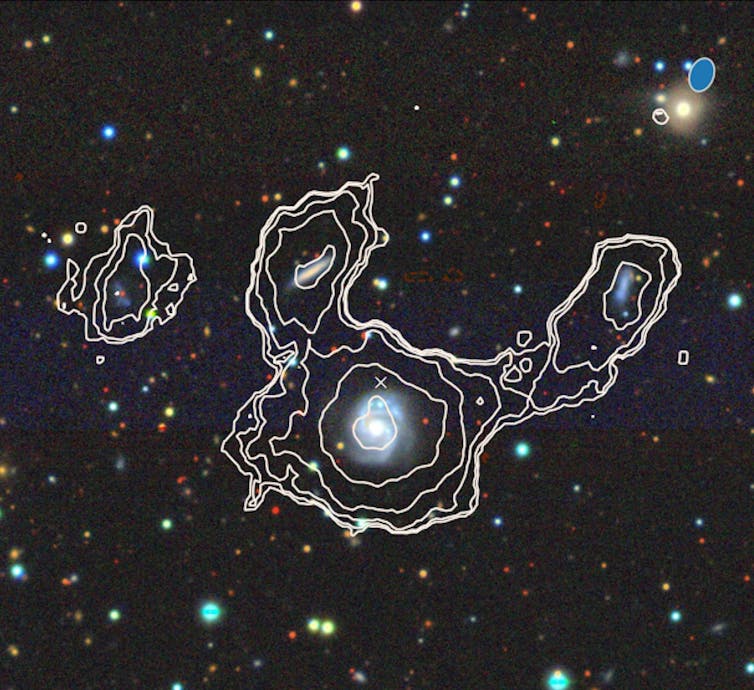
Stars are born from huge clouds of mostly hydrogen gas floating in space. Astronomers like me study this gas because it helps us understand how stars and galaxies form and grow.
Hydrogen gas gives off a faint glow that is invisible to human eyes but can be observed with a telescope tuned to detect radio waves.
Recently, my colleagues and I were using a telescope like this – a radio telescope called MeerKAT, in South Africa – to look for hydrogen gas in a particular galaxy. We were only observing for less than three hours, which is quite a short amount of time since the hydrogen glow is so faint.
When we looked at the results, we were in for a huge surprise. Instead of discovering hydrogen gas in the galaxy we aimed at, we spotted it in no less than 49 previously unknown galaxies. Our findings are published in the Monthly Notices of the Royal Astronomical Society.
Gas In Galaxies
The giant clouds of gas in which stars are born are called nebulae. When stars eventually die, they expel their gas into their surrounding environment, where it eventually cools and forms new nebulae.
Galaxies are like huge factories where the life cycle of stars repeats itself over and over. To properly understand galaxies and how they grow and evolve, astronomers need to consider both the stars and the gas making up the galaxy.
One thing we are particularly interested in is “merger events”, when two galaxies collide and merge into a single, larger galaxy. These events can also impact the gas, and kickstart star formation.
Studying gas can often help us understand a galaxy’s history. Gas often extends far further out than the stars in galaxies.
When we see trails of disturbed gas, it is a classic clue that a recent galaxy merger or interaction has occurred.
But we don’t see galactic gas easily with optical telescopes. Thankfully, radio telescopes are a great tool for finding hydrogen gas.

The MeerKAT Radio Telescope
The MeerKAT radio telescope in South Africa recently celebrated its fifth birthday. It is one of the “pathfinder” telescopes for the much larger Square Kilometre Array (SKA), a project under construction in South Africa and Australia.
MeerKAT has already achieved some great results, from detecting giant radio galaxies to studying the centre of our own galaxy, the Milky Way.
There are large survey projects underway with MeerKAT to study the star-forming hydrogen gas in galaxies. These include the MIGHTEE-HI and LADUMA surveys, the latter of which will use MeerKAT for more than 3,000 hours searching one part of the sky for hydrogen gas in very distant galaxies. These surveys are specifically focused on finding hydrogen gas and are carefully planned and carried out with that goal in mind.
But that’s not the only way MeerKAT can be used. Astronomers can also pitch ideas for “open time” observations to tackle other science questions or goals.
That’s how this discovery came about. I was hoping to detect hydrogen gas in one specific galaxy with MeerKAT, as it is the most sensitive telescope for these studies.
We did not find hydrogen gas in that galaxy, which was fine. We astronomers don’t always find what we are looking for.
But when I inspected the MeerKAT data, I spotted some gas located away from the target galaxy. So we investigated further.
By using techniques developed for the larger MeerKAT science surveys such as LADUMA, we found a lot more gas. In total, we had 49 detections.

Meet The 49ers
Each detection of the gas in these galaxies was brand new. In little more than two hours of observing time, MeerKAT had revealed several collections of neighbouring galaxies.
Some of these neighbours are even interacting with each other, as their gas content shows. This was not at all obvious from just looking at the optical images of their stars.
In one case, a galaxy is stealing gas from two companion galaxies, and using it to fuel its own star formation.
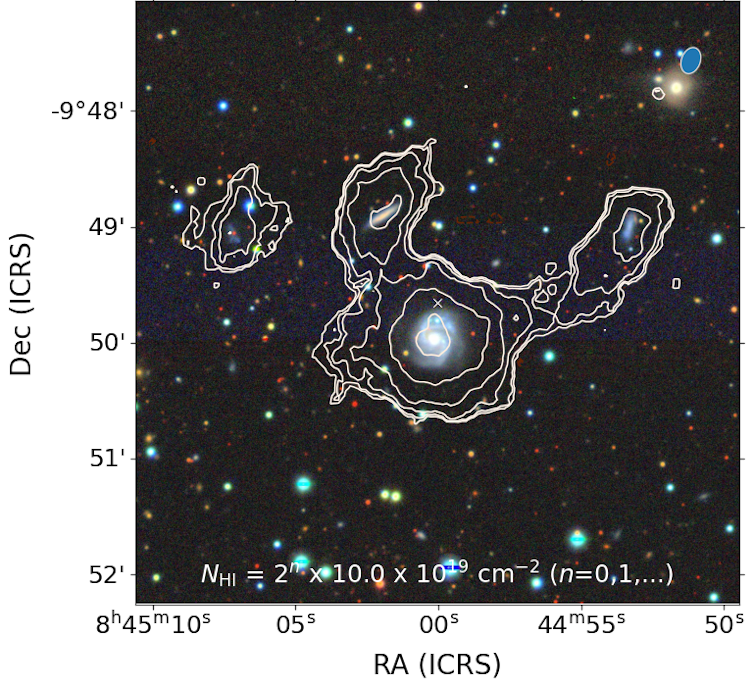
I’ve informally nicknamed this collection of galaxies the 49ers, a reference to the miners of the 1849 California gold rush.
While MeerKAT took the observations containing the 49 gold nuggets in just a couple of hours, winnowing them out required several other tools. These included the ilifu cloud supercomputer, where we reduced the MeerKAT observations (“data reduction” is a kind of pre-processing that makes the raw observations useful) and a data visualisation tool called CARTA which we used for the initial discovery of the 49 new galaxies.
We also examined our data with iDaVIE-v, a virtual reality software for viewing astronomical datasets in 3D. This software has already been used for new discoveries such as polar ring galaxies.
More Gold Nuggets To Be Found
Finding 49 new galaxies in such a short amount of observation time is quite unusual, even with a telescope as powerful as MeerKAT. However, we know there are more galaxies waiting to be found in upcoming and existing MeerKAT observations.
In some other recent work, our team found traces of gas in more than 80 galaxies (most brand new) across three separate MeerKAT observations. Each of these observations was originally focused on a single galaxy, like the “open time” observation in which we found the 49ers.
What will we find next? We don’t know, but with MeerKAT – and eventually its more powerful successor, the SKA telescope – we’re confident astronomers will turn up plenty more pieces of gold.![]()
Marcin Glowacki, Research Associate, Curtin University
This article is republished from The Conversation under a Creative Commons license. Read the original article.
Books Of The Month - April 2024: Sense And Sensibility + Robinson Crusoe
Sense and Sensibility is the first novel by the English author Jane Austen, published in 1811. It was published anonymously; By A Lady appears on the title page where the author's name might have been. It tells the story of the Dashwood sisters, Elinor (age 19) and Marianne (age 16½) as they come of age. They have an older half-brother, John, and a younger sister, Margaret (age 13).
The novel follows the three Dashwood sisters and their widowed mother as they are forced to leave the family estate at Norland Park and move to Barton Cottage, a modest home on the property of distant relative Sir John Middleton. There Elinor and Marianne experience love, romance, and heartbreak. The novel is set in South West England, London, and Sussex, probably between 1792 and 1797.
The novel, which sold out its first print run of 750 copies in the middle of 1813, marked a success for its author. It had a second print run later that year. It was the first Austen title to be republished in England after her death, and the first illustrated Austen book produced in Britain, in Richard Bentley's Standard Novels series of 1833. The novel has been in continuous publication since 1811, and has many times been illustrated, excerpted, abridged, and adapted for stage, film, and television.
Robinson Crusoe is an English adventure novel by Daniel Defoe, first published on 25 April 1719. Written with a combination of Epistolary, confessional, and didactic forms, the book follows the title character (born Robinson Kreutznaer) after he is cast away and spends 28 years on a remote tropical desert island near the coasts of Venezuela and Trinidad, encountering cannibals, captives, and mutineers before being rescued. The story has been thought to be based on the life of Alexander Selkirk, a Scottish castaway who lived for four years on a Pacific island called "Más a Tierra" (now part of Chile) which was renamed Robinson Crusoe Island in 1966. Pedro Serrano is another real-life castaway whose story might have inspired the novel.
The first edition credited the work's protagonist Robinson Crusoe as its author, leading many readers to believe he was a real person and that the book was a non-fiction travelogue. Despite its simple narrative style, Robinson Crusoe was well received in the literary world and is often credited as marking the beginning of realistic fiction as a literary genre. It is generally seen as a contender for the first English novel. Before the end of 1719, the book had already run through four editions, and it has gone on to become one of the most widely published books in history, spawning so many imitations, not only in literature but also in film, television, and radio, that its name is used to define a genre, the Robinsonade.
RPAYC Etchells Worlds Victory
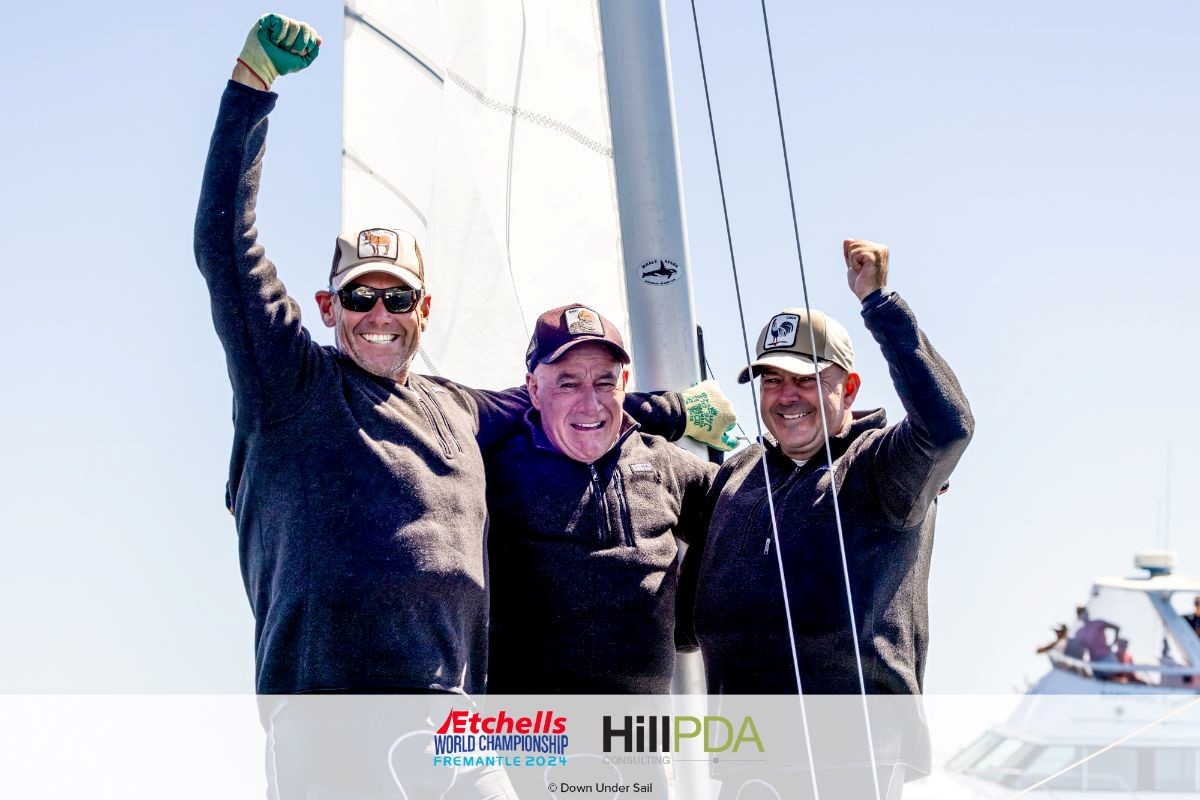
Broken Bay Island Series
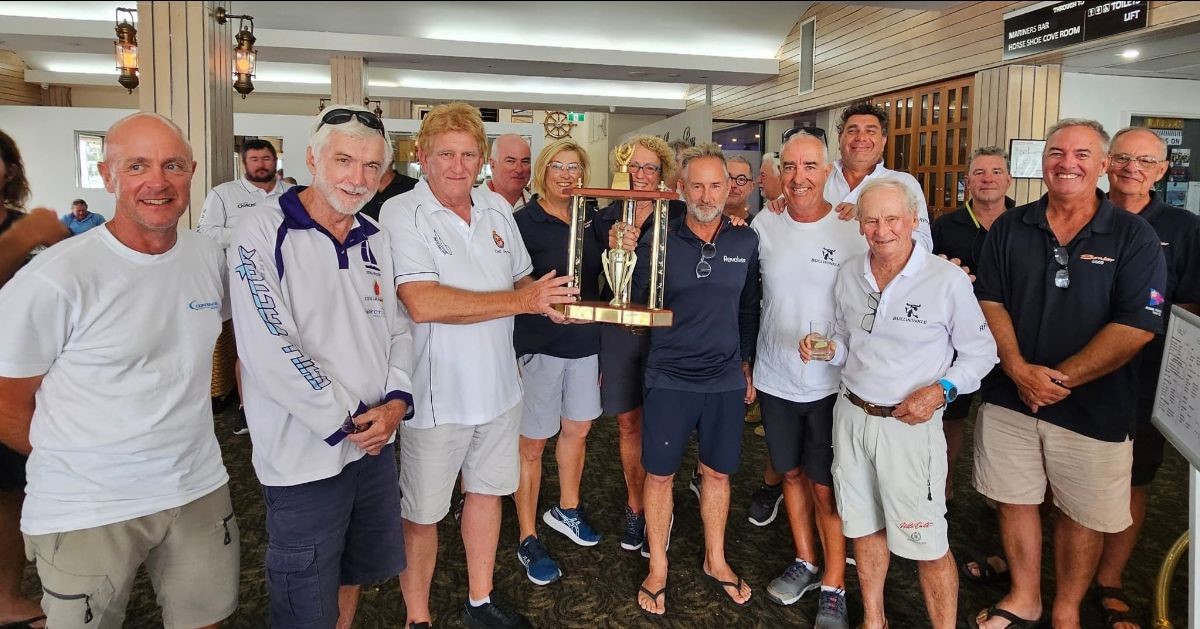
Avalon Beach Ladies Probus Club: April 2nd 2024 Speaker

Mah Jong Returns To RPAYC

Dr. Scamps Offering Free Anti-Scam Seminar
Join In The Biggest Morning Tea At RPAYC
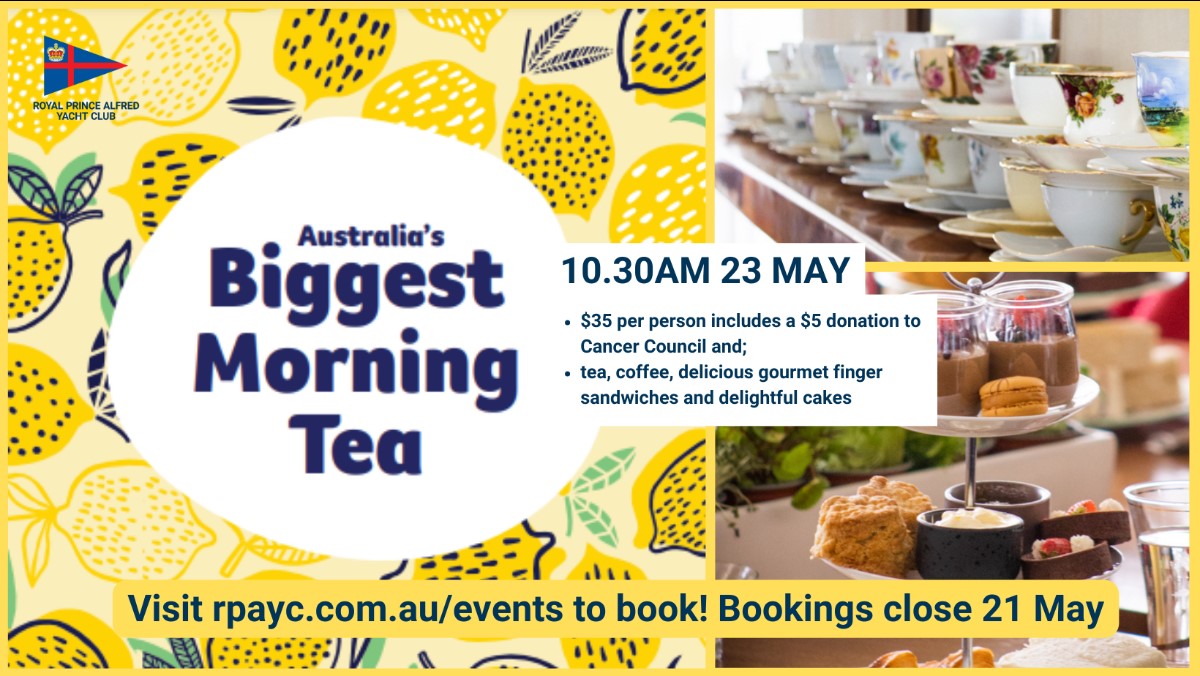

Manly-Warringah Choir is pleased to announce its Autumn concert:
Mostly Mozart
Sunday, 19th May 2024 at 2pm
The Waterford Hall, St Paul's Catholic College, Darley Road, Manly
Tickets will be available from 25th March at: manlywarringahchoir.org.au
Further details are in poster. Parking will be available in the school grounds. Light refreshments will be served afterwards at this lovely venue, with panoramic views over Sydney Harbour. We do hope you can join us.
PBAC Chair, MSAC Chair, And Deputy Chairs EOI Outcome
- Professor Robyn Ward AM as the Chair of PBAC from 5 May 2024
- Professor Jonathan Craig as the Chair of MSAC from 1 April 2024
- Professor Kwun Fong as Co-Deputy Chair of MSAC from 1 April 2024
- Associate Professor Sarah Norris as Co-Deputy Chair of MSAC from 1 July 2024.
- Chair Professor Andrew Wilson (PBAC)
- Chair Professor Robyn Ward (MSAC)
- Deputy Chair Professor Timothy Davis (MSAC).
Cardiovascular risks and COVID-19: New research confirms the benefits of vaccination

COVID-19 is a respiratory disease. Yet, from the earliest days of the pandemic, the cardiovascular risks associated with SARS-CoV-2 infection were clear: individuals with severe cases of COVID-19 often died from cardiovascular complications, and those with pre-existing cardiovascular disease were more likely to have severe illness or die.
In short, the cardiovascular system has played a central role in COVID-19 since the beginning.
It is not surprising that as debate over COVID-19 and vaccines flared that cardiovascular disease was a central issue. Those opposed to vaccination often make claims of cardiovascular risks that exceed any benefits. But when data on COVID-19, vaccines and cardiovascular health are reviewed, the conclusions are clear: vaccines are safe and effective at reducing the cardiovascular complications that are a hallmark of COVID-19.
Hot Off The Presses

A new study of 20.5 million people in the United Kingdom, Spain and Estonia used electronic health records to determine how COVID-19 vaccines affect cardiovascular complications following SARS-CoV-2 infection. Roughly the same number of vaccinated and unvaccinated subjects were included, and the vaccinated group consisted of people who received at least one of the AstraZeneca, Pfizer, Moderna or Janssen vaccines.
The study found that common cardiovascular complications of COVID-19 — including blood clots, stroke, arrhythmias and heart attacks — were substantially reduced in the vaccinated group, with protective effects lasting up to a year after vaccination.
Bigger Picture
While this most recent study represents one of the most comprehensive investigations into the cardiovascular benefits of COVID-19 vaccination, its findings are consistent with earlier, smaller studies.
A 2022 study of 231,037 people found two doses of COVID-19 vaccines reduced the risk of stroke and heart attack up to four months after a breakthrough infection.
A subsequent study of 1.9 million people found that while two doses of the mRNA vaccines or one dose of the Johnson & Johnson vaccine protected against major cardiovascular events following COVID-19, even a single dose of the mRNA vaccines offered some benefit in reducing the risk of cardiovascular complications.
Health-care decisions require a weighing of the risk and benefits of treatments, and for COVID-19 vaccines the low cardiovascular risks favour vaccination. A study of over four million vaccinated Australians found no increase in sudden cardiac death. Even patients with pre-existing heart failure do not have an increased risk of worsening heart failure, myocarditis, or blood clots following vaccination.
Weighing The Risks
Although the safety of COVID-19 vaccines is well-established, it does not mean there are no risks. A review of 99 million individuals in the Global Vaccine Data Network confirmed earlier studies that found an increased risk of myocarditis and pericarditis, which is seen primarily in young males — historically the group most at risk for myocarditis before COVID-19 emerged.
While individuals at higher risk for these complications should consult with their health-care providers in making decisions about vaccination, it should be noted that the risk for myocarditis and pericarditis is generally higher with COVID-19, even in this cohort.
Studies have also found that extending the time between first and second doses of the COVID-19 mRNA vaccines beyond the initially recommended three-week interval decreases the risk of myocarditis. Furthermore, post-vaccine myocarditis tends to be transient with very good recovery and is less severe than that associated with COVID-19.

The risk of myocarditis in young people has led some to claim that the benefits of COVID-19 vaccines are negated when stacked up against the chance of heart inflammation. A statement from the American Heart Association confirms that the risks of cardiovascular complications in young people with more mild cases of COVID-19 (symptoms lasting less than four days) are low, but notes that there are concerning signs for those who experience more severe illness with infection.
Furthermore, other cardiovascular risks associated with infection must be considered in weighing risks and benefits. These include multisystem inflammatory syndrome or “MIS-C” and cardiac arrhythmias — a far more common risk of COVID-19 than myocarditis.
Finally, the claim that COVID-19 is harmless in children is not true: in Canada COVID-19 is the sixth leading cause of death for children aged one to 14 years, and tenth for people 15 to 19 years old. Overall, studies find that even in young people the benefits of vaccination exceed the risks, particularly when it comes to cardiovascular disease.
Take To Heart
There are individuals whose health conditions preclude COVID-19 vaccination, and others for whom health risks may outweigh the benefits. But, for the vast majority of people — including young and otherwise healthy people — COVID-19 vaccination is not only safe, but the cardiovascular protection it offers could be life-saving.![]()
Glen Pyle, Member, IMPART (Initiative on Medication Management, Policy Analysis, Research & Training), Dalhousie University
This article is republished from The Conversation under a Creative Commons license. Read the original article.
National Seniors: Keep Cash!
- Online/digital transactions to be ‘in addition to’ and ‘not instead of’ cash options – cash is to remain a valid form of currency
- Support for seniors, by providing and promoting digital literacy education, such as the ‘Be Connected’ program
- Improvements to customer service and support for seniors and others disproportionately impacted by the shift towards a cashless society
Aged Care Nurses Raise Their Voices In Canberra
Are you one of the millions about to have cataract surgery? Here’s what ophthalmologists say you need to know
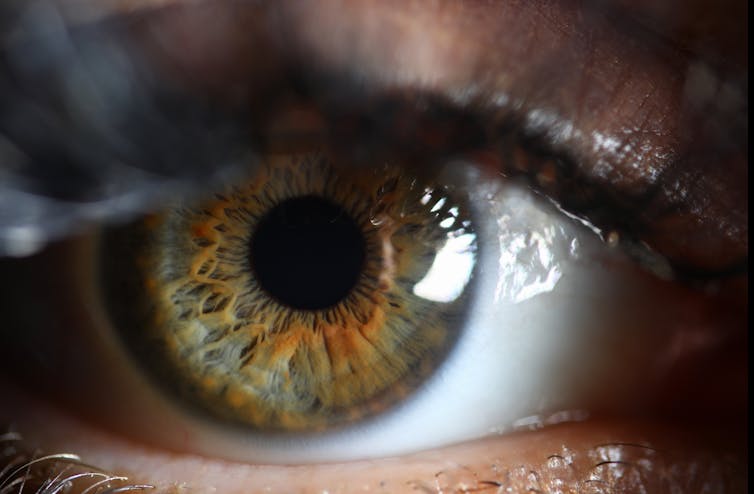
Cataract surgery is one of the most popular and commonly performed procedures in the world. The vast majority of patients have excellent outcomes with few complications.
Here are the numbers:
By age 80, over half of all Americans have cataracts.
Close to 4 million cataract surgeries are performed in the U.S. every year.
Over 90% of patients have 20/20 vision with glasses after surgery, although those with other eye conditions may not do as well, including those with glaucoma, a progressive disease typically associated with elevated pressure within the eye; diabetic retinopathy, which ultimately can cause leakage in the retinal tissues; and macular degeneration, a disease that is typically related to age.
The rate of post-surgery infection from endophthalmitis is less than 0.1%.
You can listen to more articles from The Conversation, narrated by Noa.
As ophthalmologists who have performed thousands of these procedures, we know that many patients have misconceptions about both cataracts and the surgery. For example, some think a cataract is a growth on the eye’s surface.
We like to compare a cataract with the frosted glass of a bathroom window, where light can be transmitted but details cannot. Or when turbulence from a storm causes normally clear water in the ocean to become murky. In much the same way, the eye’s once transparent lens becomes cloudy.
About The Surgery
Cataract surgery removes the clouded lens of the eye and replaces it with a new, clear lens to restore your vision. Most patients report the procedure is painless.
It’s typically an elective surgery that is performed on an outpatient basis. The patient is often awake, under local anesthesia, with sedation similar to that used for dental procedures. We like to say patients receive the equivalent of three margaritas in their IV.
Numbing drops are then applied to the eye’s surface, along with an anesthetic inside the eye. Patients with claustrophobia, or movement disorders such as Parkinson’s disease, may not be suitable candidates for awake surgeries and require general anesthesia.
Before surgery, patients receive dilating drops to make the pupil as large as possible. The surgeon makes a tiny incision, usually with a small pointed scalpel, between the clear and white part of the eye to gain access to the lens capsule, a thin membrane similar in thickness to a plastic produce bag at the grocery store.
This capsule is suspended by small fibers called zonules, which are arranged like the springs that suspend a trampoline from a frame. The surgeon then creates a small opening in the capsule, called a capsulotomy, to gain access to the cataract. The cataract is then broken into smaller parts so they are removable through the small incision.
This is similar to a tiny jackhammer, breaking the large lens into smaller pieces for removal. That sounds scary, but it’s painless. Ultrasound emulsifies the lens and vacuum power then aspirates it from the eye.
Laser-assisted cataract surgery has been found to have similar outcomes to traditional cataract surgery.
Complications Are Rare
Serious complications, such as postoperative infection, bleeding in the eye or a postoperative retinal detachment are rare; they occur in approximately 1 in 1,000 cases. But even in many of these situations, appropriate management can salvage useful vision.
Capsular complications deserve additional discussion. According to some studies, they occur in up to 2% of cases. If a hole or tear of the posterior capsule is encountered during cataract surgery, the clear gel in the vitreous – the back chamber of the eye – may be displaced into the front chamber of the eye.
If that happens, the gel must be removed at the time of the cataract surgery. This will reduce the likelihood of additional postoperative complications, but those who have the procedure, known as a vitrectomy, have an increased risk for additional complications, including postoperative infections and postoperative swelling.
After The Surgery
Patients usually go home right after the procedure. Most surgery centers require that the patient have someone drive them home, more for the anesthesia rather than the surgery. Patients begin applying postoperative drops that same day and must wear an eye shield at bedtime for a few weeks after surgery.
Patients should keep the eye clean and avoid exposure to dust, debris and water. They should try not to bend over and should avoid heavy lifting or straining in the first week or so after surgery. Lifting or straining can cause a surge of blood pressure to the face and eye. Known as a choroidal hemorrhage, it can lead to bleeding into the wall of the eye and be devastating to vision.
Things that cause only moderate increases in heart rate such as walking are OK. Routine postoperative examinations are usually completed the day after surgery, about a week after surgery and about a month after surgery.
A Choice Of Lens
The plastic lens used to replace the cataract, or intraocular lens, requires careful sizing for optimal results and a nuanced discussion between patient and surgeon.
Early intraocular lens technologies were monofocal, and most patients with these lenses chose distance correction and used reading glasses for near tasks. This is still the preferred approach for approximately 90% of patients having cataract surgery today.
Recent advances have led to intraocular lenses that offer multifocality – the opportunity to have near as well as distance vision, without glasses. Some multifocal lenses are even in the trifocal category, which includes distance, near, and intermediate vision, the latter of which in recent years has become very important for computer and phone use.
Most patients with these advanced technology multifocal lenses are happy with them. However, a small percentage of patients with multifocal lenses can be so bothered by visual disturbances – notably night glare and halos around light sources in the dark – that they request removal of the multifocal lens to exchange it for a standard intraocular lens. These exchanges are a reasonable option for such situations and offer relief for most affected patients.
Determining who’s an ideal candidate for a multifocal intraocular lens is an area of active research. Most clinicians would recommend against such a lens for a patient with a detail-oriented personality. Such patients tend to fixate on the shortcomings of these lenses despite their potential advantages.
As with many technologies, current generation advanced technology intraocular lenses are much better than their predecessors. Future offerings are likely to offer improved vision and fewer side effects than those available today.
But these newer lenses are often not reimbursed by insurance companies and often entail substantial out-of-pocket costs for patients.
Deciding on what type of lens is best for you can be complicated. Fortunately, except in unusual circumstances, such as when a cataract develops after trauma to the eye, there is seldom a hurry for adult cataract surgery.![]()
Allan Steigleman, Associate Professor of Ophthalmology, University of Florida and Elizabeth M. Hofmeister, Associate Professor of Surgery, Uniformed Services University of the Health Sciences
This article is republished from The Conversation under a Creative Commons license. Read the original article.
We created a VR tool to test brain function. It could one day help diagnose dementia
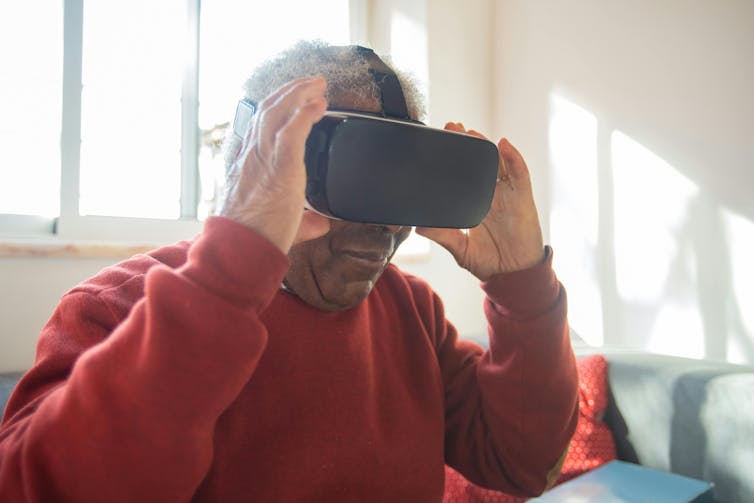
If you or a loved one have noticed changes in your memory or thinking as you’ve grown older, this could reflect typical changes that occur with ageing. In some cases though, it might suggest something more, such as the onset of dementia.
The best thing to do if you have concerns is to make an appointment with your GP, who will probably run some tests. Assessment is important because if there is something more going on, early diagnosis can enable prompt access to the right interventions, supports and care.
But current methods of dementia screening have limitations, and testing can be daunting for patients.
Our research suggests virtual reality (VR) could be a useful cognitive screening tool, and mitigate some of the challenges associated with current testing methods, opening up the possibility it may one day play a role in dementia diagnosis.
Where Current Testing Is Falling Short
If someone is worried about their memory and thinking, their GP might ask them to complete a series of quick tasks that check things like the ability to follow simple instructions, basic arithmetic, memory and orientation.
These sorts of screening tools are really good at confirming cognitive problems that may already be very apparent. But commonly used screening tests are not always so good at detecting early and more subtle difficulties with memory and thinking, meaning such changes could be missed until they get worse.
A clinical neuropsychological assessment is better equipped to detect early changes. This involves a comprehensive review of a patient’s personal and medical history, and detailed assessment of cognitive functions, including attention, language, memory, executive functioning, mood factors and more. However, this can be costly and the testing can take several hours.
Testing is also somewhat removed from everyday experience, not directly tapping into activities of daily living.
Enter Virtual Reality
VR technology uses computer-generated environments to create immersive experiences that feel like real life. While VR is often used for entertainment, it has increasingly found applications in health care, including in rehabilitation and falls prevention.
Using VR for cognitive screening is still a new area. VR-based cognitive tests generally create a scenario such as shopping at a supermarket or driving around a city to ascertain how a person would perform in these situations.
Notably, they engage various senses and cognitive processes such as sight, sound and spatial awareness in immersive ways. All this may reveal subtle impairments which can be missed by standard methods.
VR assessments are also often more engaging and enjoyable, potentially reducing anxiety for those who may feel uneasy in traditional testing environments, and improving compliance compared to standard assessments.

Most studies of VR-based cognitive tests have explored their capacity to pick up impairments in spatial memory (the ability to remember where something is located and how to get there), and the results have been promising.
Given VR’s potential for assisting with diagnosis of cognitive impairment and dementia remains largely untapped, our team developed an online computerised game (referred to as semi-immersive VR) to see how well a person can remember, recall and complete everyday tasks. In our VR game, which lasts about 20 minutes, the user role plays a waiter in a cafe and receives a score on their performance.
To assess its potential, we enlisted more than 140 people to play the game and provide feedback. The results of this research are published across three recent papers.
Testing Our VR Tool
In our most recently published study, we wanted to verify the accuracy and sensitivity of our VR game to assess cognitive abilities.
We compared our test to an existing screening tool (called the TICS-M) in more than 130 adults. We found our VR task was able to capture meaningful aspects of cognitive function, including recalling food items and spatial memory.
We also found younger adults performed better in the game than older adults, which echoes the pattern commonly seen in regular memory tests.

In a separate study, we followed ten adults aged over 65 while they completed the game, and interviewed them afterwards. We wanted to understand how this group – who the tool would target – perceived the task.
These seniors told us they found the game user-friendly and believed it was a promising tool for screening memory. They described the game as engaging and immersive, expressing enthusiasm to continue playing. They didn’t find the task created anxiety.
For a third study, we spoke to seven health-care professionals about the tool. Overall they gave positive feedback, and noted its dynamic approach to age-old diagnostic challenges.
However, they did flag some concerns and potential barriers to implementing this sort of tool. These included resource constraints in clinical practice (such as time and space to carry out the assessment) and whether it would be accessible for people with limited technological skills. There was also some scepticism about whether the tool would be an accurate method to assist with dementia diagnosis.
While our initial research suggests this tool could be a promising way to assess cognitive performance, this is not the same as diagnosing dementia. To improve the test’s ability to accurately detect those who likely have dementia, we’ll need to make it more specific for that purpose, and carry out further research to validate its effectiveness.
We’ll be conducting more testing of the game soon. Anyone interested in giving it a go to help with our research can register on our team’s website.![]()
Joyce Siette, Research Theme Fellow in Health and Wellbeing, Western Sydney University and Paul Strutt, Senior Lecturer in Psychology, Western Sydney University
This article is republished from The Conversation under a Creative Commons license. Read the original article.
New Method Aims For More Plastic Recycling: UNSW - Arnott's
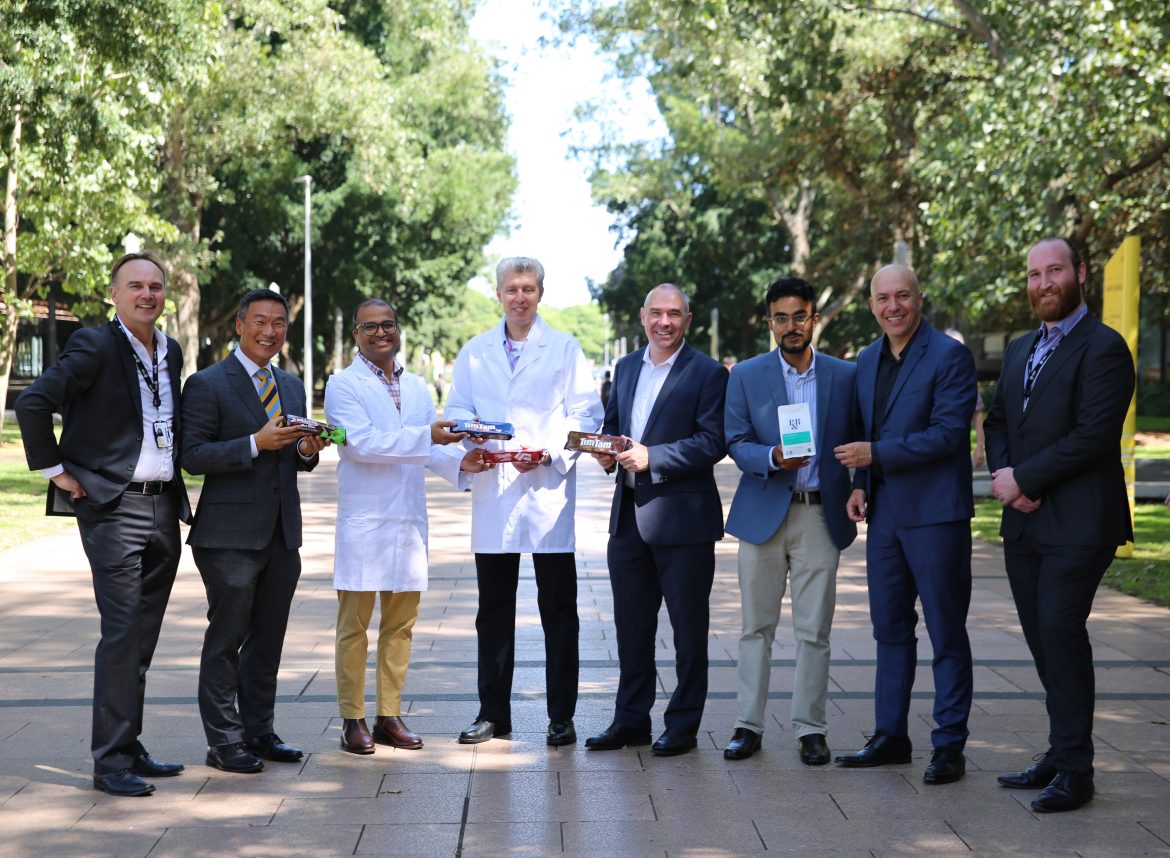
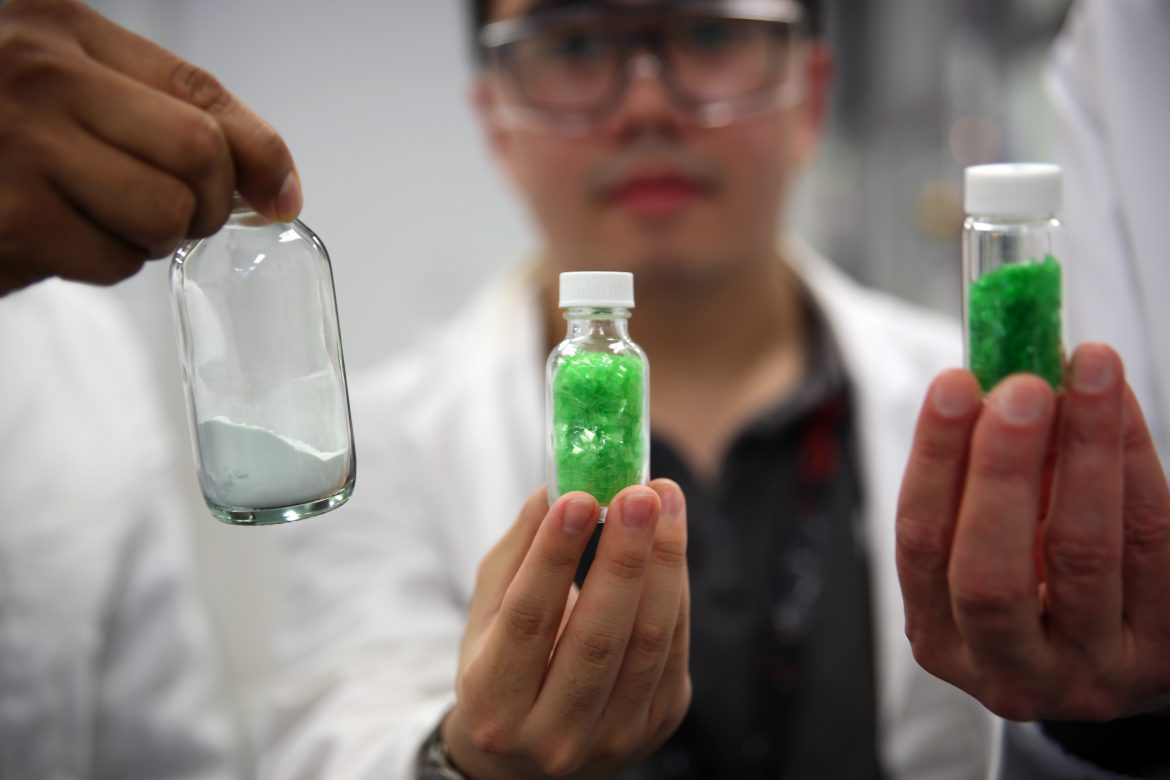
New Precision Care Clinic At Prince Of Wales Hospital To Transform Cancer Healthcare

NSW Government Bans LGBTQ+ Conversion Practices
NSW Health Consults With Staff On Updating COVID-19 Vaccination Requirements
- a COVID-19 vaccination every six months for all adults aged 75 years and over
- a COVID-19 vaccination every 12 months for adults aged 65 – 74 years, and adults aged 18 – 64 with severe immunocompromise; these people can consider a vaccination every 6 months
- a COVID-19 vaccination every 12 months can be considered for all other adults aged 18 – 64 years, and those aged 5 -18 years with severe immunocompromise.
Want to quit vaping? There’s an app for that

More Australians than ever are vaping, according to recently released data.
The National Drug Strategy Household Survey shows the proportion of Australians aged 14 and over who, in 2022–2023, said they currently vaped was 7%. In 2019 it was just 2.5%. Users are most likely to be aged 18-24.
As we learn more about the potential harms of vaping, many will be keen to quit.
But because vapes have only been widespread in recent years, there is limited evidence on how to go about quitting. With the addictive nature of nicotine-containing vapes, it can also be hard to stop vaping on your own.
Could apps be the answer? The vast majority of young people have a smartphone. And we know apps have helped people quit smoking. So why not use apps to help people quit vaping?
But which apps are best? And which app features should you look for? Our recently published study gives us some clues.
We Tested 30 Apps
We searched the Apple iTunes and Google Play stores in May 2023 to identify apps available in Australia claiming to help people quit vaping.
We then made a shortlist of 20 iOS apps and ten Android apps to assess for:
quality (including ease of use, how it engaged users, appearance, and the information it conveyed)
the potential to change behaviour (including setting goals, making an action plan, identifying barriers, monitoring progress and giving feedback).
Here’s What We Found
The highest rated app overall was the iOS app Quit smoking. Stop vaping app. This had 19 out of 21 features known to help people change behaviour.
The highest rated app for Android devices was Quit Tracker: Stop Smoking, with 15 behaviour change features.
The highest rated app for both Android and iOS users was the QuitSure Quit Smoking Smartly app. This had 15 behaviour change features for iOS users and 14 for Android users.
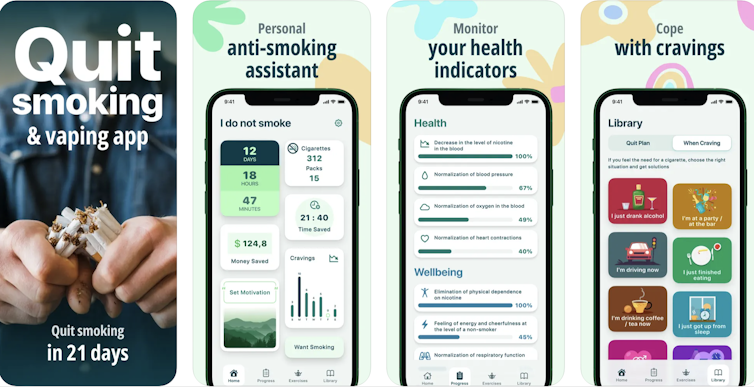
So What Should I Look For?
There are key app features to look for in an app that could help you change your behaviour. These features also apply to apps helping people to quit alcohol, or to take more exercise, for instance. These features include:
full customisability, allowing individuals to tailor the app to their needs
goal setting, allowing individuals to create their own goals, monitor their progress, then update them over time. This is more likely to lead to positive behaviour change
external help, allowing users to access more help or advice, directly from the app
apps that are easy to use or navigate, so users are more likely to stick with the app.
But not all apps we assessed scored highly on these. On average, apps only had about nine out of 21 behaviour change features. And only 12 of the 30 apps included a goal-setting feature.
The overall quality of the apps was moderate – scoring about three out of five. While apps were easy to use and navigate, we found they were not always transparent in who funded or developed them.
Future Apps
Earlier research shows quit smoking apps rate higher for their potential to change behaviour than ones to quit vaping.
In one study, researchers found more than half of users of one quit smoking app were still not smoking after a month.
So app developers could look at quit smoking apps to identify strategies and features to develop or update quit vaping apps.
App developers need to create apps with comprehensive goal-setting features. These apps need to be trialled or tested by the developer, users or an external party. This is important as, to our knowledge, no publicly available app has undergone such testing.
As many young people vape to relieve stress or anxiety, future apps could provide extra features, such as meditation, cognitive behaviour therapy and relaxation.
Apps need to align with current guidelines on how to quit vaping, so evidence-based messaging is consistent. Unfortunately, information and guidelines on quitting vaping are in their infancy and vary across different countries or jurisdictions.
Developers also need to ensure they disclose who owns and paid for the app. Is it a commercial company, a research group, a government agency, or a not-for-profit? We found it difficult to tell during our analysis.
Last of all, quit vaping apps need to be updated and improved over time, to iron out bugs, make improvements as the evidence changes, and to respond to changes in how users behave.
In an ideal world, we’d see partnerships between app developers, people who vape, researchers and experts in health behaviour change to develop and update quit vaping apps – ones with the highest chance of actually shifting people’s behaviour.
We wish to thank Lilian Chan, Rebecca Cerio, Sandra Rickards, Phillipa Hastings, Kate Reakes and Tracey O’Brien from Cancer Institute NSW for their assistance with this research.![]()
Fiona McKay, Associate Professor of Health Equity, Deakin University and Matthew Dunn, Senior Lecturer in Public Health, Deakin University
This article is republished from The Conversation under a Creative Commons license. Read the original article.
Summer’s over, so how much sun can (and should) I get?

As we slide of out summer, you might be wondering how careful you need to be about sun exposure. Excessive exposure causes skin cancer, but sun exposure also has benefits. How do you balance the two?
A new position statement from cancer, bone health and other experts aims to help Australians balance the good and bad effects of sun exposure by taking into account their skin colour, risk of skin cancer, and where they live.
What Are The Benefits Of Sunlight?
Ultraviolet (UV) radiation (the wavelengths in sunlight that cause skin cancer) also leads to vitamin D production. Vitamin D is very important for maintaining strong bones, and is likely to have multiple other health benefits.
But vitamin D probably isn’t the whole story. Sunshine, including UV radiation, is thought to affect health in other ways such as improving our mood and reducing the risk of autoimmune diseases and infections. So for many people, avoiding the sun and taking a vitamin D supplement may not be the best approach.
How Much Time Does It Take To Make Vitamin D?
It’s complicated, but for most people and most of the year across most of Australia, it’s a lot less than you think.
The amount of time needed depends on the amount of skin covered by clothing and the intensity of UV radiation (indicated by the UV index). More skin exposed and higher UV index equate to less time needed.
Both the UV index and the amount of the year that UV radiation is high increase as you get closer to the equator. In summer, all of Australia is bathed in sunshine. But in winter, opposite ends of the country have very different exposures.
In summer, everybody except those with deeply pigmented skin can make enough vitamin D in just five minutes between 9am and 3pm, anywhere in Australia, provided they are wearing shorts and a T-shirt.
In winter it’s a different story. In Darwin and Brisbane, 5–10 minutes between 10am and 3pm will do the trick, but in Hobart, factoring in winter clothing, it will take nearly an hour in the middle of the day.
Hover your mouse over the lines below to see the length of exposure needed at specific times of day.
Staying out for longer than needed doesn’t necessarily make more vitamin D, but it does cause skin damage.
Hang On, What About Those With Darker Skin?
People with deeply pigmented, brown to black skin accumulate both vitamin D and DNA damage at a much slower rate than people with lighter skin tones.
When UV radiation hits a DNA strand, it causes the DNA to become distorted. If the distortion isn’t fixed, it will cause a mistake when the DNA is copied for a new cell, causing a permanent mutation that sometimes leads to cancer.
Melanin, the brown pigment in the skin, absorbs UV photons before that can happen, and the high melanin content in the darkest skin tones provides 60 times as much UV protection as the small amount in very fair skin.
The flip side is the risk of vitamin D deficiency is much higher than the risk of skin cancer.
The new statement accounts for this by putting people into three groups based on their risk of skin cancer, with specialised advice for each group.
Highest Skin Cancer Risk

This includes people with very pale skin that burns easily and tans minimally, but also people with darker white or olive skin who can tan easily but have extra skin cancer risk factors because they:
- have had skin cancer before
- have a family history of melanomas
- have many moles
- are taking immunosuppressant medications.
For these people, the harms of sun exposure almost certainly outweigh the benefits.
These people should wear sunscreen every day the UV index is forecast to get to three or more, and use the five sunsmart steps whenever the UV index is above three:
- slip on clothing covering as much of the body as possible
- slop on SPF30+ sunscreen on areas that can’t be covered up
- slap on a hat
- seek shade
- slide on sunglasses.
They shouldn’t spend time outdoors deliberately to make vitamin D, but should discuss vitamin D supplements with their doctor.
Intermediate Skin Cancer Risk
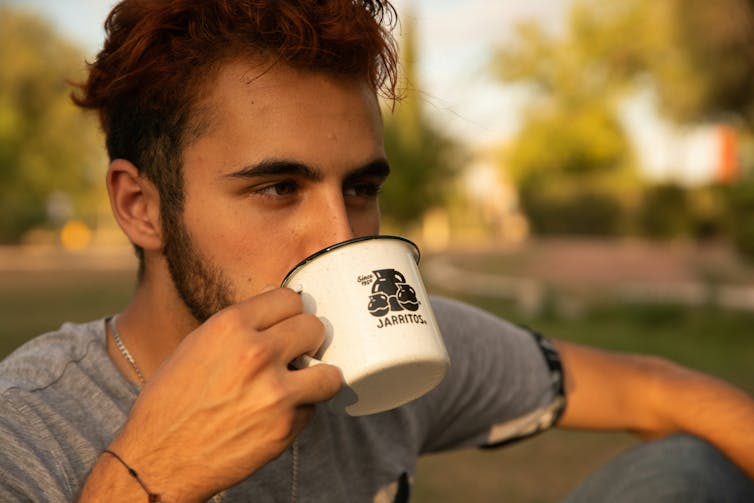
This means people with dark white/olive skin that sometimes burns but tans easily, and who don’t have other skin cancer risk factors.
These people should still apply sunscreen as part of their usual routine on all days when the UV index is forecast to get to three or more, but they can spend enough time outdoors to get a “dose” of vitamin D on most days of the week.
Once the time needed for their vitamin D dose is up, they should also use the slip-slop-slap-seek-slide steps to avoid accumulating DNA damage.
If they’re unable to do this because of health or lifestyle factors, like being housebound, working night shifts, or always covering up with clothing, they should see their doctor about whether they need vitamin D supplements.
Lowest Skin Cancer Risk

This covers people with deeply pigmented brown to black skin that rarely or never burns.
These people can safely spend enough time outdoors to make vitamin D and get the other benefits of sunshine. But because more time is needed, it can be difficult, particularly when the weather is cold. Vitamin D supplements might be needed.
They don’t need to routinely protect their skin, but might need to slip-slop-slap-seek-slide if they are outdoors for more than two hours.
How Do I Get The Feel-Good Effects Of Sunshine?
Spending time outdoors in the early morning is the best way to get the feel-good effects of sunshine. An early morning walk is a great idea for all of us, but it won’t make vitamin D.![]()
Katie Lee, PhD Candidate, Dermatology Research Centre, The University of Queensland and Rachel Neale, Principal research fellow, QIMR Berghofer Medical Research Institute
This article is republished from The Conversation under a Creative Commons license. Read the original article.
Retail Petrol Prices Remain Relatively High Despite Falling In The December Quarter 2023: ACCC
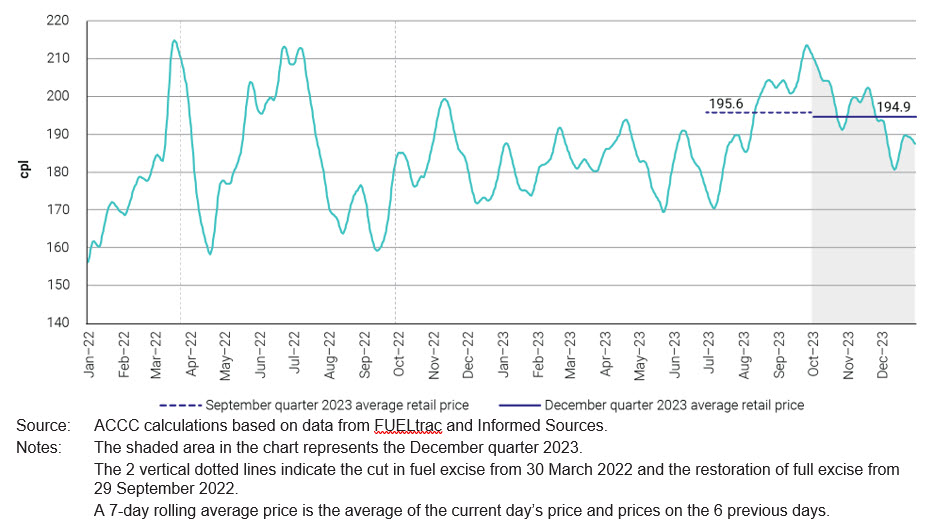
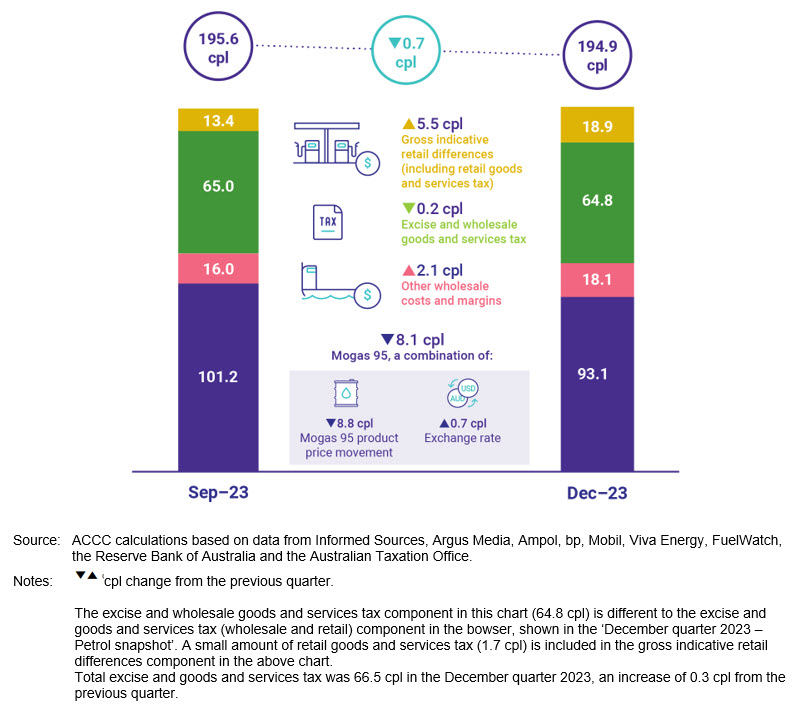
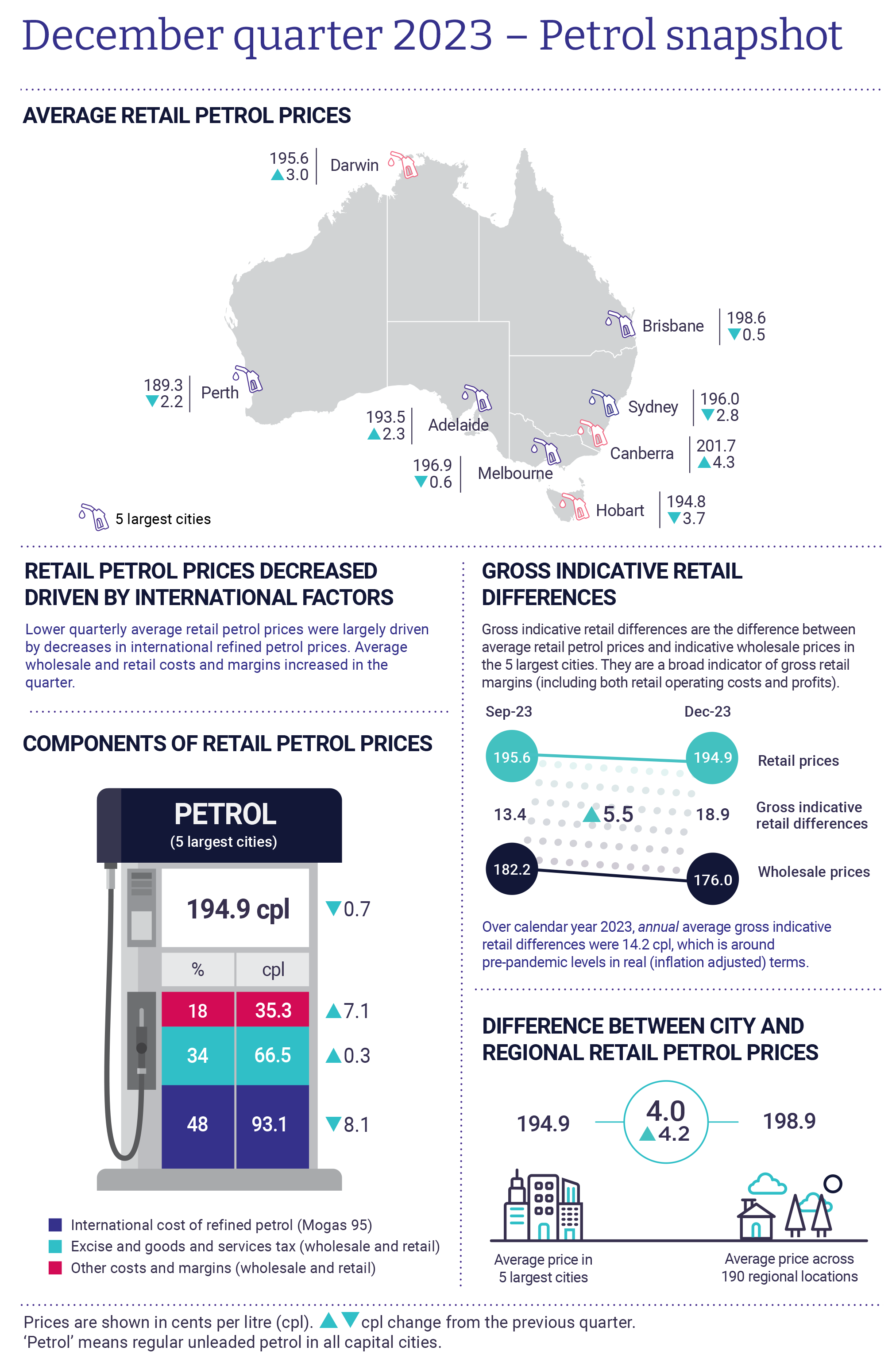
Regulation Of Wholesale Telecommunications To Change Following ACCC Inquiry
- Domestic transmission capacity service
- Wholesale line rental
- Local carriage service
- Wholesale Asymmetric Digital Subscriber Line (ADSL) service
- Unconditioned local loop service
- Line sharing service
- Fixed originating access service
- Fixed terminating access service
- Domestic mobile terminating access service.
Is your child ‘overscheduled?’ How to get the balance right on extracurricular activities

It’s a weeknight, parents rush through the door from work, grab a snack, and then speed off in various directions to children’s extracurricular activities. As they do, they are managing tired and hungry kids as they all move from one thing to the next. Sound familiar?
As of 2022–23, almost 50% of Australian children under 14 participated in extracurricular sport. According to the Australian Bureau of Statistics, 19% of Australian children aged five to 14 did music out of school hours in 2021–22, while 13% did dance and 5% did drama.
There can be a lot of pressure to have your child in extracurricular activities, as this is seen as a way of giving them a rounded education and upbringing. And it can get expensive.
Pre-pandemic, Australian families spent an average of A$1,859 per child per year on extracurricular activities.
How do you get the balance right?
What Are The Benefits?
Extracurricular activities can provide a range of benefits.
Studies have shown extracurricular activities can help students academically. For example, a 2011 study of US high school students showed participation in extracurricular activities was linked with better results in maths. Other US studies have shown students who participate in extracurricular activities are more likely to complete a college (university) degree.
Research has shown extracurricular activities can help young people develop self belief, goal-setting, confidence and the ability to adapt to unfamiliar situations.
In turn, it can also help with mental health and emotional regulation. Team activities have especially been shown to reduce anxiety in already anxious kids, increase a sense of belonging and boost social awareness.

What Are The Drawbacks?
You may have heard media reporting about “oversheduling”. Too many activities can see children neglect their schoolwork and limit family time, which are also important parts of growing up. It can also have an impact on children’s sleep.
High levels of sport in particular can lead to injuries and burnout.
It can also lead to “overtraining syndrome” where children don’t recover adequately from previous training or competitions.
Not only does a child lose interest in the activity but their mood is linked to how well they perform. The activity can also come to dominate the family’s life.
How Do You Get The Balance Right?
Start by working out as a family what is financially reasonable and how much time you can commit. Think about not just the game or lesson itself but any other regular training or practice that may be involved.
Look at what your child is genuinely interested in, rather than what you feel they should do (as this just adds unnecessary pressure).
You could consider limiting children to one or two activities per week. This allows the child to focus on that activity and any training or practice that goes with it.
But there is no magic number of activities experts consider to be the “perfect” amount – each child is different. Some other factors you can consider are:
is the child still getting adequate sleep?
can they still spend time with the rest of the family?
are they able to have some down time?
do they enjoy their activities?

What Age Can You Start?
Children as young as two or three can benefit from extracurricular activities. As they start to assert their independence, programs in dance, sport or music can boost their ability to socialise with others, listen and get ready for school.
There are also benefits in starting extracurricular activities before the age of ten. Research shows if you start before ten, children are more likely to stick with the activity for longer because it will become part of their identity.
Having said that, there is of course no issue with starting new activities after this age as children grow and develop new interests.![]()
Elise Waghorn, Lecturer, School of Education, RMIT University
This article is republished from The Conversation under a Creative Commons license. Read the original article.
‘Everyone was groomed’: Anne Manne’s story of Newcastle’s paedophile priest network centres on a ‘kidnapped’ childhood

In 2017, the Royal Commission into Institutional Responses to Child Sexual Abuse found that within the Anglican Diocese of Newcastle, priests had perpetuated crimes of abuse for at least 30 years. Serious allegations were mismanaged, misplaced or ignored. Crimes were minimised. “Abusive and predatory” behaviour was wrongly portrayed as “consensual”.
In her new book, Crimes of the Cross, journalist Anne Manne provides an intricate and compelling account of how multiple diocesan clergy and leaders covered up allegations, protected priests who were known perpetrators and failed to care for survivors.
Manne builds on the groundbreaking work of Newcastle Herald journalist Joanne McCarthy, whose investigations, starting in 2006, led to the establishment of the 2012 royal commission. Manne’s writing is informed by a variety of source materials, including interviews with McCarthy and various survivors, and evidence from the royal commission.
On the first page, Manne warns us this story is about a “sinister paedophile ring of priests demonic in their cruelty”, supported by “a ‘grey network’ of protectors”. These protectors – clergy and lay people – staffed helplines, were on professional standards committees, mismanaged or ignored complaints, and never reported criminal activity to police.
Review: Crimes of the Cross – Anne Manne (Black Inc.)
At least six priests associated with the diocese and one lay reader have been convicted of child sex offending. Other priests were identified as “prolific” abusers, but not convicted in their lifetime.
Crimes of the Cross centres the stories of survivors. Their testimonies are retold with sensitivity, although explicit and distressing detail is provided at times (including in the opening pages).
Manne’s work concentrates primarily on one survivor – Steven Smith – who, from the age of ten, was repeatedly abused by a priest, Father George Parker. This happened over five years, from 1971 to 1975 – the year Parker was transferred to nearby Gateshead, where the abuse (initially) continued.
The 1971 arrival of Parker, then aged 30, is presented as a disruption to Smith’s happy and carefree childhood. Smith told Manne his childhood summers were spent in Bush Creek, “fishing and swimming”.
Despite this, Smith told Manne his parents’ marital problems made his family vulnerable. Their life revolved around the church community. At first, Smith felt proud of Parker’s attention to him.
However, when he became an altar boy, “everything changed” and the abuse started. Assaults happened at church, in the car with Parker, driving between churches, when his mother sent him to visit the rectory, and when Parker would pull him out of school, no questions asked. Smith said he was abused “fortnightly”; he was raped “hundreds of times”. His abuse, he said, was a “kind of kidnapping”.
Manne writes:
a psychologist’s report years later stated that Steve had gone through one of the most extreme cases of sexual abuse that she had ever encountered.

Through Smith’s and other stories, Manne explores how criminals such as Parker hid behind a “mask” of priesthood, and perpetrated crimes that significantly harmed the lives of those they targeted. She shows the human cost of bad policy and delayed justice.
Smith’s personal story of surviving abuse and campaigning for justice is at the centre of the book, which is divided into five chronological parts.
Shame and fear of social isolation can prevent a survivor from disclosing abuse. “Steve was a bright spark of a kid who saw with sharp clarity the social world around him,” Manne writes.
“He knew the consequences for his mother and family should the situation be made public – shame, expulsion from the church, ostracism from the community.”
While Steve did tell his mother about the abuse in 1975 (on the way home from Gateshead), he would not report it to police until February 2000.
In the 1990s, Smith disclosed to an Anglican helpline – where he spoke to a priest, Graeme Lawrence, who would later be convicted of sexually assaulting a 15-year-old boy in 1991.
In 2000, Smith reported Parker to the police. A trial against Parker was held in 2001, but when the defence team presented an alibi for him, the Office of the Director of Public Prosecutions withdrew the charges. In late 2016, the charges were reinstated. The trial was delayed as Smith gave evidence at the royal commission. Parker died in January 2017, before facing court.
Seeking Justice
The second section, Team Church, describes a missed opportunity for justice. After Smith made the police report, Parker was charged and a trial was set for August 2001.
Manne recounts how diocesan staff made efforts to withhold information. For instance, staff, including Lawrence, had “exact records” of when and where clergy had been employed, as it was contained in parish yearbooks.
However, Manne notes when the detective working on the case asked for information about when Parker had been at Gateshead church, “no one in the Anglican Church told him of the existence of these records”. As as result, the detective “was preparing to frame the charges for 1974 – the wrong year”.
The case was no-billed and would not be reopened until after the royal commission.
Manne also shows how the diocese failed to provide pastoral care. Sadly, this is not uncommon in cases of abuse in church communities.
In fact, Manne suggests the well-documented failings of Catholic leaders may have worked to obscure what was happening in the Anglican diocese.
Newcastle journalist Joanne McCarthy – who was instrumental in reporting instances of abuse within Catholicism – told Manne she didn’t initially understand “how bad child sexual abuse was in the Anglican church”.
In 2016, Manne herself had been trying to get at the “inner workings of the secret, mysterious Catholic committees” who were “responsible for cover ups” when she heard about the public hearings investigating the Anglican Diocese of Newcastle.
Within the diocese, staff appeared more interested in protecting the institution than responding to survivors. Some refused to hand parish records to police. Legal representatives used aspects of Steve’s history – not disclosing to his own father, being diagnosed with mental illnesses – against him. Manne astutely notes:
It is common for survivors of child sexual abuse to suffer anxiety, depression and PTSD. Steve’s admission to a psychiatric hospital could have been interpreted as evidence he had been sexually abused. Instead, it was used to undermine his credibility. He was “mad”, it was implied, his testimony unreliable and not to be believed.
Manne suggests while Steve was “denigrated in court”, there was “a reservoir of trust and goodwill towards the church”. But this reservoir was not limitless.
Towards the end of this section, Manne’s attention shifts to the mishandling of allegations in the Anglican Diocese of Brisbane. This points to the reality that both abuse and inadequate institutional responses have been widespread.
Denying What ‘Ostensibly Good Men’ Do
While Steve’s experiences propel the book, Manne’s lens is wider. She considers how successive diocesan leaders and staff continued to mismanage complaints and to direct sympathy towards the abusing priests and the institution, rather than the many victim-survivors.
This allows Manne to clearly show the abuse perpetrated by priests was not isolated, nor random events committed by one “bad” man (or even a few bad men). Rather, there was a network of abusers and enablers, as well as systemic failures that allowed the church to become a “cover” for criminal activity. At the centre of the story, Manne states, there is “the denial of what ‘ostensibly good men’ do”.
A pivotal chapter, titled “The Wolf Hiding in Plain Sight”, uncovers the criminal activities of one of these “ostensibly good” men.
In late 2009, Manne tells us, Lawrence – by now the dean of the cathedral – was reported for sexual misconduct with an underage boy (in the early 1980s) to Michael Elliot, an ex-policeman who had been hired by the diocese to deal with sexual abuse complaints.
Lawrence, a powerful, controlling figure, had shaped diocesan culture and “groomed a whole city” for decades. Manne explains:
By grooming, a paedophile creates compliant, trusting people who simply won’t believe accusations of sexual misconduct. Presenting oneself as a very caring priest establishes the “halo effect”, a reservoir of admiration and goodwill, whereby people see the abuser as beyond reproach, enabling them to hide in plain sight. Grooming creates a network of defenders who can be mobilised when needed.
In Lawrence’s case, this mobilisation resulted in pushback against Brian Farran – the then Bishop of Newcastle – after Lawrence was defrocked in 2012 due to the sexual abuse allegations against him.
Lawrence’s supporters saw the professional standards unit, which Elliot headed, as troublemakers. Smith and Elliot received death threats, Elliot’s car and home were “repeatedly vandalised”, and his dog went missing.
Manne writes:
If you thought you were dealing with a Christian community, the death threats and intimidation, the vandalism of cars and homes, seems completely shocking. But if you reframed and realised that hidden within the church was a paedophile ring – then it became unsurprising.
Throughout, Manne demonstrates that abuse of power was a key element in the decades of criminal activity within the diocese. At the same time, recognition of survivors was slow. “For many in the church, it was easier to preserve good memories and dismiss survivors as liars.”
Why Weren’t Survivors Believed?
The final section of the book asks important questions. Why was the abuse covered up? Why weren’t children believed? Manne’s analysis is both insightful and chilling. She reflects:
The desires of the paedophiles were heinous but simple. The cover-ups by the church hierarchy were dreadful, but you could see the logic: the protection of reputation, avoidance of scandal, fear of losing their income, houses and careers should they turn whistleblower. But the laity – what did [they] get out of it?
Why were everyday churchgoers invested in protecting the institution?
Stepping into Newcastle Cathedral, Manne finds an answer. She imagines “the tall figure of Dean Graeme Lawrence sweeping along in his white lace and gold brocade robes, and how, amid this grandeur, a congregation might feel close to God”.

So much of this story, she writes, is about “status and the pursuit of social significance”. People were invested in their image of Lawrence, she concludes. Supporting powerful figures within the church gave regular parishioners a place and purpose.
And that, she presumes, was what Lawrence wanted: “There was no better way to groom a child, their family, and community than by using the altruistic mask of a priest.”
To point out the hypocrisy and systemic failings nested within the diocese, Manne turns to the Christian parable of the Good Samaritan, which tells “the story of a person who was attacked, robbed and left half dead on the side of the road”.
In the story, two religious leaders ignore the man, while a social outsider (a Samaritan) stops, sees the injured man and provides care. Manne compares abuse survivors to the person lying beaten on the side of the road, and accuses many clergy and lay people of having “averted their eyes”, just as the leaders in the parable did.
Some, she writes:
were so focused on gaining social significance, on clawing their way up the church hierarchy, that they forgot the radical egalitarianism at the heart of the teaching of Jesus. They forgot especially what Jesus told the disciples about children.
Manne’s reading of the situation breaks my heart, but perhaps that’s the point.
As she draws her book together, she writes:
For some in the church there was a complete failure of moral imagination – an inability or refusal to acknowledge the soul murder of abuse victims. Why this blindness? The answer is terrible. Because the victims were children
In the balance of power, everything was in the favour of powerful men like Lawrence and Parker. Children, who had nothing, were silenced, ignored and shamed.
Go On Fighting
Manne closes her book with a somewhat positive take: “Steve never stopped being a fighter.” She gives Smith the final words:
If something is wrong, it’s wrong. You have just got to go on fighting. Don’t ever give up.
As I reached the final pages, I was drained. I cannot begin to fathom the energy survivors such as Smith had to summon to go on fighting – in some cases for 20, 30, 40 years. Over lifetimes.
Manne’s book is certainly an emotionally difficult read, but it is also incredibly important. She highlights the lasting personal and social consequences of abuse, as well as woefully insufficient responses and victim-blaming cultures. She bears witness to the experience of survivors and to their fight for justice.
Yes, every churchgoer, every youth worker, everyone employed by a church – indeed everybody – should read this book. But read it with care (and perhaps with a friend) and pace yourselves: the story it tells is devastating.
If this article has raised issues for you, or if you’re concerned about someone you know, call Lifeline on 13 11 14.
The National Sexual Assault, Family and Domestic Violence Counselling Line – 1800 RESPECT (1800 737 732) – is available 24 hours a day, seven days a week for any Australian who has experienced, or is at risk of, family and domestic violence and/or sexual assault.![]()
Rosie Clare Shorter, Research fellow, Deakin University
This article is republished from The Conversation under a Creative Commons license. Read the original article.
Uber has settled a class action lawsuit for $270 million – what was it accused of?
Peter Martin, Crawford School of Public Policy, Australian National UniversityWho’d want to go back to the days before Uber? The days in which you could never be certain you could get a taxi, the days of long wait times trying to order one on the phone, and the days in which you would never know for sure how your driver would treat you.
So much has Uber improved the experience of getting a ride (young people rely on it in a way their parents were never able to rely on taxis) that it might seem incomprehensible Uber has just agreed to pay almost A$272 million to stop a class action against it going to court.
The $271.8 million settlement is the fifth-largest in Australia, eclipsed only by two for Victoria’s 2009 Black Saturday bushfires, one for Queeensland’s 2011 floods and one for Johnson & Johnson for defective pelvic mesh implants.
So what exactly did Uber do wrong – or at least be so unwilling to defend it was prepared to pay a quarter of a billion dollars not to have aired in court?
The statement of claim presented on behalf of 8,000 taxi drivers and licence holders to the Supreme Court of Victoria paints a picture of an organisation prepared to break the law in order to build a large base of customers it could use to lobby to change the law to make what it had been doing legal.
‘Greyballing’ And Ghost Cars
The statement of claim points to internal Uber documents that indicate Uber knew in advance of its 2014 launch that its so-called UberX drivers were not licensed to operate commercial passenger vehicles, and that the fines were small.
Its aim was to quickly get to 2,000 trips per week in both Melbourne and Sydney, to ensure it had “as many people as possible to support UberX leading up to what will inevitably be a regulatory fight in both cities”.
Uber told drivers it would pay their fines, and in Victoria paid $1,732 at a time.
The class action said where inspectors tried to collect evidence, Uber engaged in a practice known as “greyballing” in which the apps of selected users get shown a fake view of ghost cars that won’t stop for them.
The claim said Uber also used “blackout geofences” that made it impossible to hire Ubers near the buildings used by enforcement officers and regulators.
Case Settled At The Last Moment
By settling just before the case went to court, Uber managed to avoid these claims being tested, and also managed to avoid the court airing the trove of documents leaked two years ago in which one international Uber executive joked he and his colleagues had become “pirates” and another conceded: “we’re just f***ing illegal.”
Uber succeeded in getting each state’s laws changed, at a cost of devaluing to near zero taxi licences reported to have been worth as much as $500,000 each.
But in its defence (and I may as well defend Uber because it decided not to in court) most taxi drivers never paid anything like $500,000.
And taxis provided a pretty poor service. That’s because the number in each state was limited, which helped ensure drivers had work, but worked against customers in two ways – it ensured there weren’t enough taxis available at busy times, and by pushing up the price of licences it pushed up the price of fares.
Taxis Served Cities Poorly
In a landmark 2012 report, Customers First, two years before the arrival of Uber, former competition chief Allan Fels recommended Victoria issue licences without limit, charging a simple fee of about $20,000 per year for anyone who wanted one.
It’s this recommendation, adopted by Victoria, and publicised in other Australian states, that began devaluing licences before the arrival of Uber.
And the Fels report found most of the owners of licences weren’t drivers.
Most were passive investors, some of whom had done well by punting that the value of their licences would rise, and all of whom should have taken into account the possibility the value could fall.
Uber Has Gone Mainstream
Now that Uber has won the right to do what was illegal (and settled a class action that would have exposed how it did it), it has lifted its prices to something closer to taxi fares and allowed customers to book taxis from its platform.
It has become mainstream in other ways. In Australia, it has entered into an agreement with the Transport Workers’ Union on employment, and in the US it wants to work with transport authorities to replace lightly used bus services.
The path Uber has forged – becoming an outlaw, building public support for a change in the law, then becoming entrenched – has become something of a model for new firms in all sorts of other industries, from online gambling, to cryptocurrency trading to footpath scooters.
Uber has shown it works. In this case, the class action has shown that ultimately there can be a cost, but it took a long time and it wasn’t at all certain until the last moment that Uber would buckle.![]()
Peter Martin, Visiting Fellow, Crawford School of Public Policy, Australian National University
This article is republished from The Conversation under a Creative Commons license. Read the original article.
Australia’s biggest chemist is merging with a giant wholesaler. Could we soon be paying more?

Corporate Australia loves a big merger. And amid a growing flurry of them across the business scene, a new blockbuster has emerged.
All eyes are on two titans of the pharmacy industry – Chemist Warehouse and Sigma Healthcare. They are poised to join forces under an A$8.8 billion deal, which could radically reshape the way Australians access medication and other health products.
Mergers can lower business operating costs and make companies more efficient. But reduced competition in any sector typically leads to higher prices for consumers.
What could this deal by “Australia’s cheapest chemist” mean for everyday Australians and their wallets?
An Unmatched Pharmacy Giant
If the proposed merger goes ahead, the new entity will be enormous – far bigger than any of its individual competitors.
It will combine the market power of about 600 existing Chemist Warehouse outlets with more than 1,200 pharmacies currently aligned to Sigma as a wholesaler, giving it more than 26% market share.
Sigma is listed on the Australian Stock Exchange (ASX), meaning its shares can already be bought and sold by the public.
Through the merger, privately owned Chemist Warehouse, whose surging profits have excited potential investors, will also get a backdoor entrance to the ASX without undergoing a lengthy initial public offering process.
Who The Players Are
Chemist Warehouse has earned a reputation as the “Bunnings of pharmacies”, famous for its perceived affordability.
It has established a strong retail presence nationally, with franchise outlets stocking not only prescription and over-the-counter medicines, but also a huge range of other health products such as vitamins, cosmetics and toiletries.

Sigma Healthcare, on the other hand, operates retail pharmacy chains including Amcal and Discount Drug Store.
It is also one of top three largest pharmaceutical wholesalers in Australia, with a broad customer base.
This merger is a masterful blend of two business strategies:
- vertical integration – buying part of your own supply chain
- horizontal integration – acquiring a competing business.
The new entity will be able to independently source and sell its own products, fully controlling its own ecosystem of wholesale, distribution and retail pharmacies.
How Could This Affect Competition And Consumers?
Economic theory tells us that for consumers, mergers can be a double-edged sword.
On the one hand, they often increase business efficiency, scale and bargaining power. These cost savings may translate into lower prices for consumers.
In some industries, mergers have reduced prices by more than 5%.
However, the decrease in competition brought about through a merger can allow companies to get away with charging higher prices, or even lowering the quality of their product offering.
Evidence from the US shows that in the consumer packaged goods sector, which includes drugs and other healthcare products, mergers increased prices by 1.5% on average and lowered the total volume of goods sold by 2.3%.

In Australia, tight regulation of prescription medications means there isn’t much leeway to increase prices for medicines covered under the Pharmaceutical Benefits Scheme (PBS).
But Chemist Warehouse earns a whopping 67% of its revenue from its non-prescription “front of store” sales, compared to a rate of 27% at other Australian pharmacies.
This gives the giant a unique opportunity to capitalise on increased market power in the Australian context.
Calls To Increase Competition
There have long been calls to enhance competition in Australia’s pharmacy sector.
The Harper National Competition Policy Review singled out the Community Pharmacy Agreement for stifling competition, saying its rigid location and ownership restrictions pose significant barriers for new players.
This has largely prevented Australia following in the steps of the United States and Europe, where deregulation in this industry has allowed consumers to buy over-the-counter medicines in supermarkets and gas stations.
This merger stands to further weaken competition in an industry already held back by such restrictions.
Australian Retail Is Already Highly Concentrated
Australia’s high level of industry concentration – where markets are controlled by a small number of large players – has found itself in the spotlight amid a stubborn cost of living crisis.
One way to assess market concentration is to measure the share of the market held by the top four companies.
In Australia, the top four players in the pharmacy sector collectively hold over 50% of the market.
As industry concentration has intensified across other sectors, many larger Australian corporations have been seen to increase their price mark-ups and suppress wage growth.
If successful, this merger will further entrench the pharmacy sector among banks, supermarkets and petrol retailers in the ranks of the most concentrated Australian industries.
Will It Go Ahead?
There are still significant hurdles for this merger to go ahead.
The move has to be approved by shareholders in both companies, and more importantly, receive a green light from the ACCC, Australia’s competition watchdog.

Submissions to the ACCC’s formal enquiry into the merger will close this week.
However, the ACCC has struggled to block similar mergers in the past, such as the seismic ANZ-Suncorp deal that was finally approved in February. Regulatory obstacles alone may not be enough to prevent this consolidation.
Australians have a vested interest in a healthy competitive landscape. Reduced competition in the pharmacy sector will affect the pricing pressures on every store, not just the major players.
Don’t be surprised down the road if a visit to your local pharmacy shocks you with pricier cosmetics, sunglasses and even jellybeans!![]()
Angel Zhong, Associate Professor of Finance, RMIT University
This article is republished from The Conversation under a Creative Commons license. Read the original article.
Disclaimer: These articles are not intended to provide medical advice, diagnosis or treatment. Views expressed here do not necessarily reflect those of Pittwater Online News or its staff.